open_hardware
PROTEI in the NY TImes
http://www.nytimes.com/2013/09/29/fashion/a-cruise-on-the-ss-brainstorm.html?_r=0
DJI WooKong flight controller manuals
PDF FROM THE DARC conf. levinegabriella.com/presentations/darc/AUVs.pdf
1. How to charge the Lipo batteries : STEP_BY_STEP_INSTRUCTRIONS_CHARGING_LiPos_OCTOKONG
2. How to fly manual mode: DJI_octocopter_instructions_manual
3. How to fly DJI Wookong-m set an Auto mission: dji_groundstation_automission
PRISM BREAKUP
Eyebeam Prism breakup Prismbreakup.org
A Talk on “Encrypt your Metadata”
SLIDES here: http://goo.gl/KuI7pz
NOTES here: http://goo.gl/yxS0Z3
unreasonable Barcelona
Unreasonable Barcelona: Gabriella Levine & Cesar Harada, Protei from Unreasonable Media on Vimeo.
FUELING INNOVATION THROUGH SHARED TECHNOLOGY
Fueling Innovation Through Shared Technology
-
AUTHOR: Gabriella Levine // CATEGORY: 2013 Event, Blog, Guest, Program, Speakers
Aug
 INNOVATING BASED ON MODELS
INNOVATING BASED ON MODELSTechnology has always been innovated based on other people’s successes, from the discovery that the earth was round, to the invention of the telephone, steam engine, or airplane. And scientists have found resources in biological systems for technological innovations, for example the development of VELCRO modeled after a Burr plant, or SONAR inspired by the echolocation in bats.
OPEN HARDWARE MOVEMENT
 Although patent laws were originally designed to protect inventors’ ideas, patents constrain further innovation. The more that designs and processes can be open and shared, the quicker that innovation can happen.
Although patent laws were originally designed to protect inventors’ ideas, patents constrain further innovation. The more that designs and processes can be open and shared, the quicker that innovation can happen.There are many examples of successful businesses openly sharing software, such as Mozilla and Linux, but the rise of the Open Hardware trend is just beginning. The Open Hardware definition[1] states that it is any hardware whose documentation is made publicly available for others to use, modify, and distribute. This growing trend is founded in the belief that sharing ideas, designs, and methodologies can bring technological innovation and manufacturing mainstream on local and global scales, making it easier to engineer new solutions to complex problems.

Open Hardware projects that facilitate free sharing of documentation, source code, and CAD designs, are an approach to proliferate innovation. Arduino, a platform developed for hobbyists to make electronic prototypes, has expanded the world of hardware development from electrical engineers to artists, hobbyists, and even youth. Open Hardware projects range from industrial machines [open source ecology], 3d printers [RepRap], environmental disaster relief efforts [Protei, Open Relief], and underwater robotics [openROV].
STEALING INFORMATION
As modern technology and the Internet dissolves boundaries between countries and people, even expensive information is getting easier to steal. Evidence of this can be seen from the recent rise of industrial espionage by mostly Chinese University students gaining access into US University and Library material. The recent NY Times Article on the rise of Cyberattacks [2] cites Bill Mellon of the University of Wisconsin saying, “We get 90,000 to 100,000 attempts per day, from China alone, to penetrate our system”.
China is a special mecca for hackers. Companies employ hackers to spy on competitors’ trade secrets, and Chinese universities partner with corporations to sponsor hacking competitions that army talent scouts attend. China’s rapidly accelerating economic growth and extreme rate of production, as well as the immense pressure to publish research papers explains the intensity of cyber-hacking in academics and business. For instance, 31% of the publications Journal of Zhejiang University–Science were deemed to be plagiarized[3], .
SHANZHAI
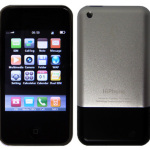 A very interesting trend has sprouted from China’s copycat culture, called Shanzhai, literally meaning “Mountain Fortress”[4]. Shanzhai refers to a cluster of about 300 “underground” factories tucked away in the mountains of Shenzhen, China. These factories rapidly produce cheap knock off consumer electronics such as watches and iPhones. Brand names include NOKLA (Nokia knockoffs) and Hi-Phone (iPhone copycats). Although quite secretive and hard to access, Shanzhai is not a small operation: by 2010, Shanzhai cell phones took 20% of the 2G market[5].
A very interesting trend has sprouted from China’s copycat culture, called Shanzhai, literally meaning “Mountain Fortress”[4]. Shanzhai refers to a cluster of about 300 “underground” factories tucked away in the mountains of Shenzhen, China. These factories rapidly produce cheap knock off consumer electronics such as watches and iPhones. Brand names include NOKLA (Nokia knockoffs) and Hi-Phone (iPhone copycats). Although quite secretive and hard to access, Shanzhai is not a small operation: by 2010, Shanzhai cell phones took 20% of the 2G market[5].SHANZHAI and OPEN HARDWARE
There are many similarities between Shanzhai and the Open Hardware community. Both Shanzhai and Open Hardware projects borrow information, tools, source code, CAD files, and techniques; both improve upon other’s work to accelerate development.
What differentiates Shanzhai from Open Hardware projects is that it doesn’t build upon the work of others for increased innovation, but it exactly copies it and prices it lower.
BORROWING FROM NATURE : OPEN SOURCING BIOLOGY
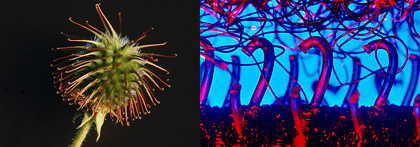
Not only does technology proliferate by building upon the innovation of others, but drawing inspiration from biological processes has also refined technological innovation. In contemporary times of extreme technological advancement, social infrastructures (Facebook, Google, Yahoo) are built upon sourcing individual data to inform collective intelligence. Redesigning urban frameworks for efficient transit options is becoming increasingly critical due to growing urban populations. Therefore, looking to biology for influence for organizing emergent intelligent systems is increasingly crucial for design considerations.
Biomimicry as used in design and engineering takes the form of copying a form and function (like the use of a fin for swimming), modeling principles occurring in nature (such as aerodynamics for flight), or mimicking organizational principles (modeling online social networks on ant colonies). A pivotal example of biomimetic design is the experimental IBM computer chip, released in 2011, that emulates the human brain’s cognition.
Using complex yet efficient biological systems as a model and a mentor for design and engineering solutions parallels the way that Open Hardware projects can increase innovation potential through building upon effective past work.
EXPLORING BIOMIMETIC DESIGN: BIOMIMICRY AND OPEN TECHNOLOGY IN ACTION
I just returned from teaching a 2 week course at CIID (Copenhagen Institute of Interaction Design)[6] in Denmark. With the use of open source electronics boards and modular code libraries shared online through open source communities (such as Adafruit, Sparkfun, and DIYDrones), the students’ projects were able to reach great levels of sophistication, conceptually and technologically, in a short amount of time.

City Pulse, a final project in the summer course, a data-driven real-time interactive projection based on the people’s motion
This rapid innovation is possible when communities and individuals willingly donate R&D online, making available modular code libraries and hardware toolkits for affordable prices. Through open source sensor distributors, like Sparkfun and Adafruit, the prices of the sensors, (ie for temperature, humidity, acceleration, barometric pressure) are super affordable ($10 – $30USD). In just two weeks, people who had never built electronic circuits, never programmed a microcontroller in the programming language C, or never made real-time interactive computer graphics, were able to map their bike routes with GPS sensors, 3D-print prototypes to manufacture, develop a system for bacteria to harness energy based on people’s twitter feeds, design reactive screen based projections based on sensor data from people’s motion, and prototype robots to collect trash.
Explore more about the class here.
Sources Cited:
[1]http://freedomdefined.org/OSHW
[2]http://www.nytimes.com/2013/07/17/education/barrage-of-cyberattacks-challenges-campus-culture.html
[3]http://www.nytimes.com/2013/05/23/world/asia/in-china-hacking-has-widespread-acceptance.html
[4] http://patterns.ideo.com/issue/shanzhai/
[5] http://uk.finance.yahoo.com/news/bandit-phone-king-has-the-last-laugh-ftimes-34bef9cc11fc.html
[6] http://ciid.dk/education/summer-school/ciid-summer-school-2013/biomimetic-interfaces/
Teaching at CIID Summer Course 2013: Exploring Biomimetic Interfaces
I just returned from teaching a 2 week summer session course at CIID
It is an amazing place. And it was an intense and fantastic 2 weeks. It was a mix of Human – Based Design Thinking, Biomimetic practices, Programming, creative ideas, interactivity, and stacks of Arduinos. To see some of the course work see this site.
We arrived the first day:  and went to the school.
and went to the school.
We explored the lab and the equipment. They have a VERSA laser cutter, 3d printer, electronics bench, a woodshop, and a lot of spare materials.
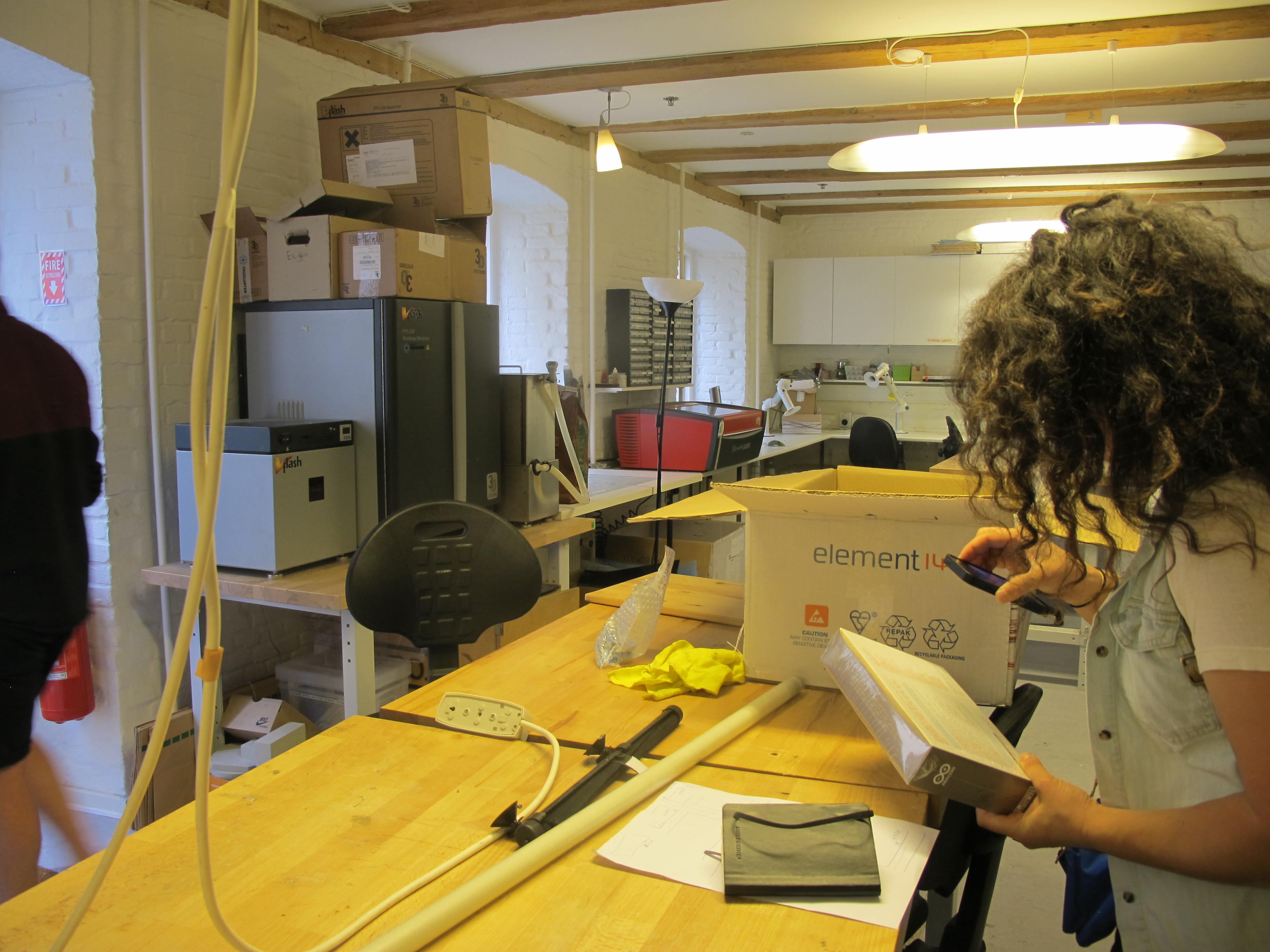
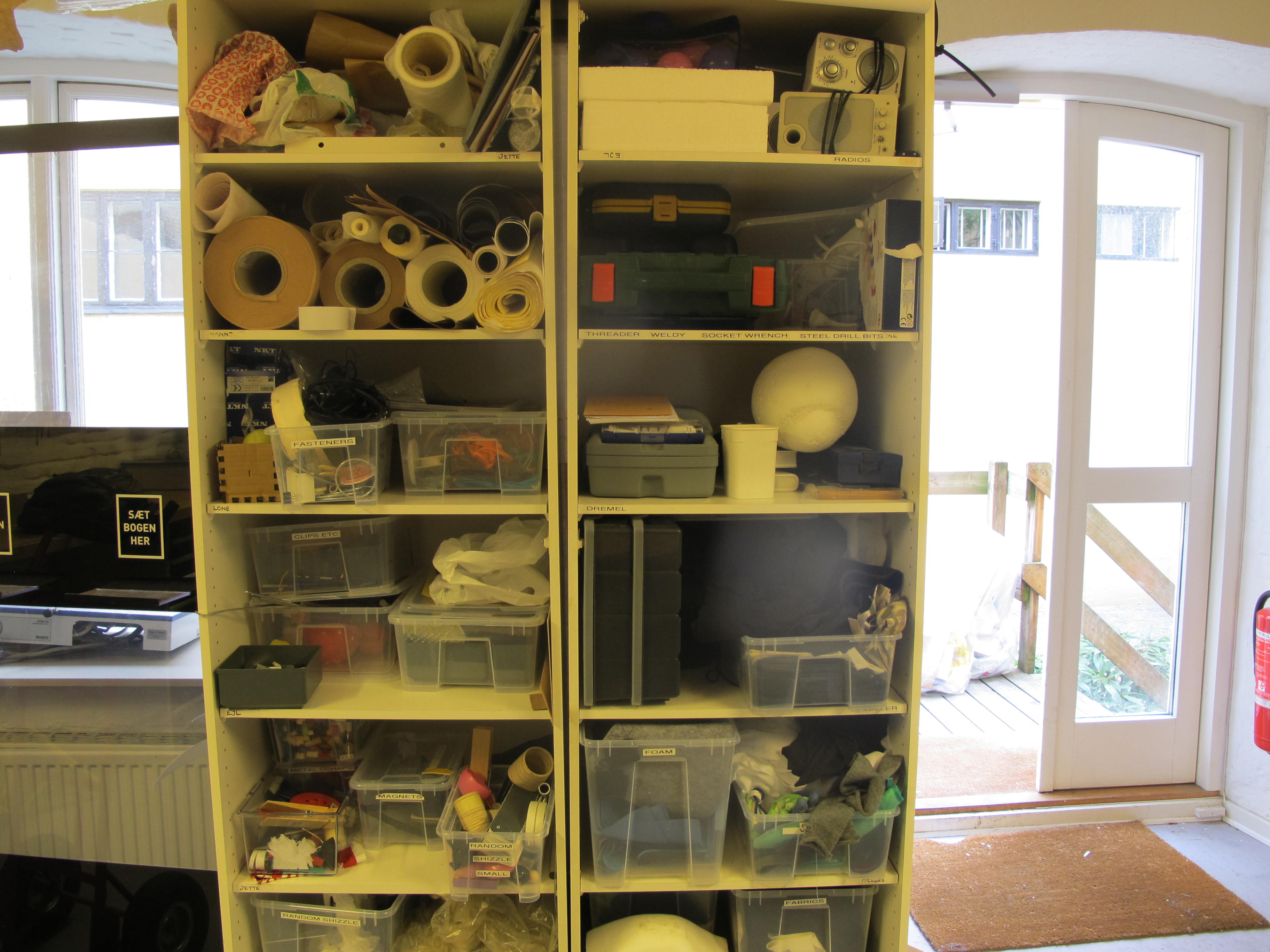
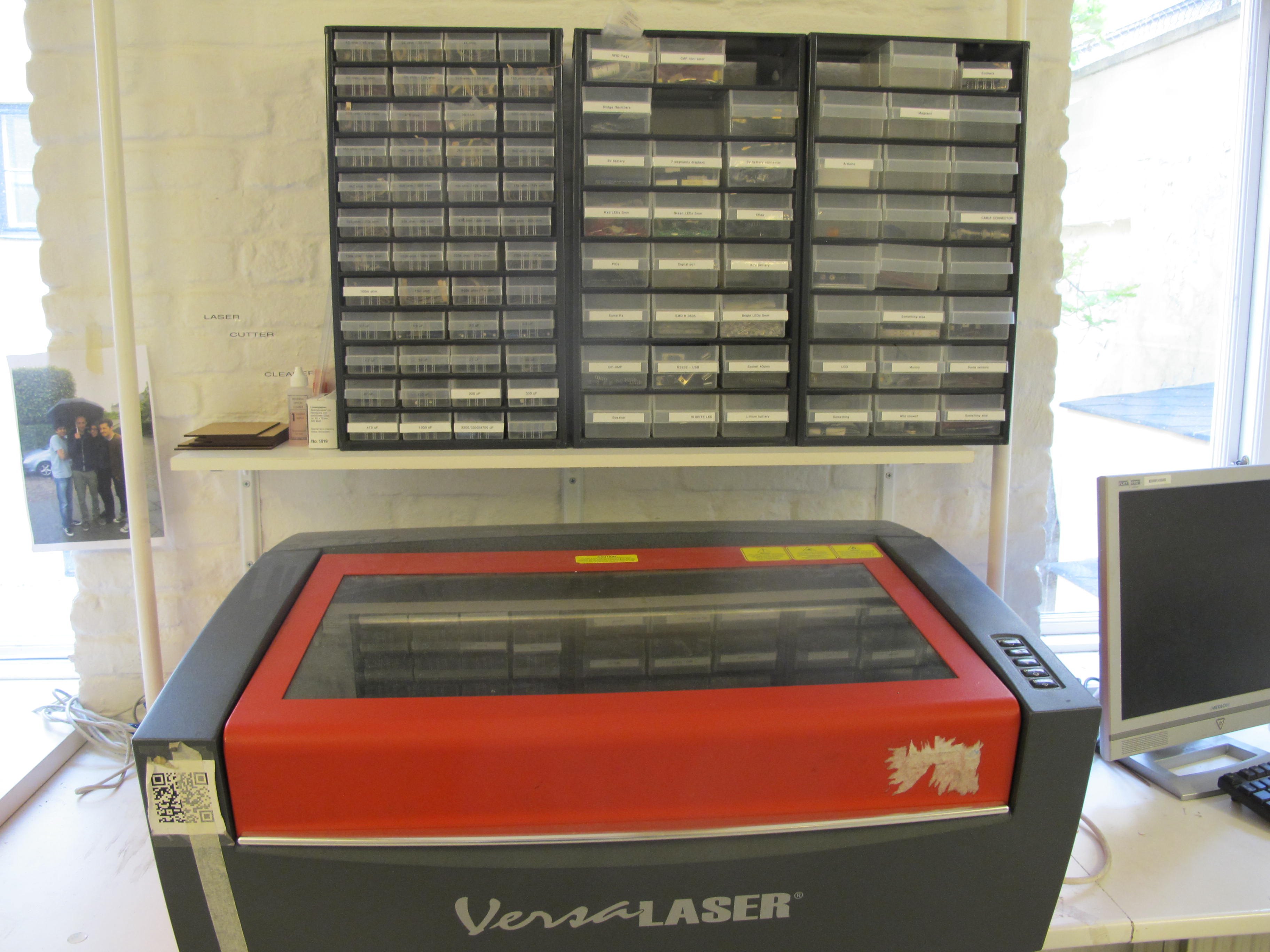
From there we head to the apartment and wandered the stairs until we were able to find the right apartment 
We got our bikes!
And the course began
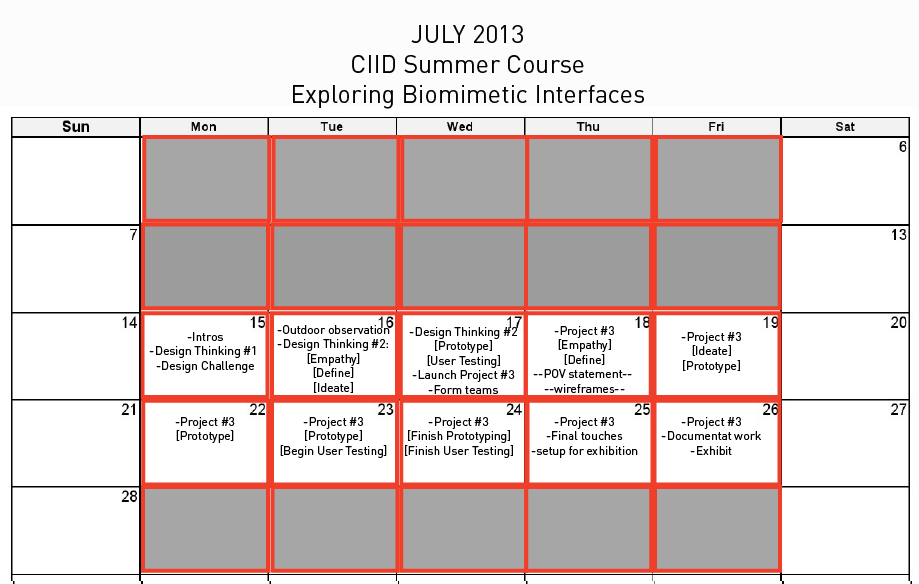
The first day of class:
Design Challenge: raft lanterns
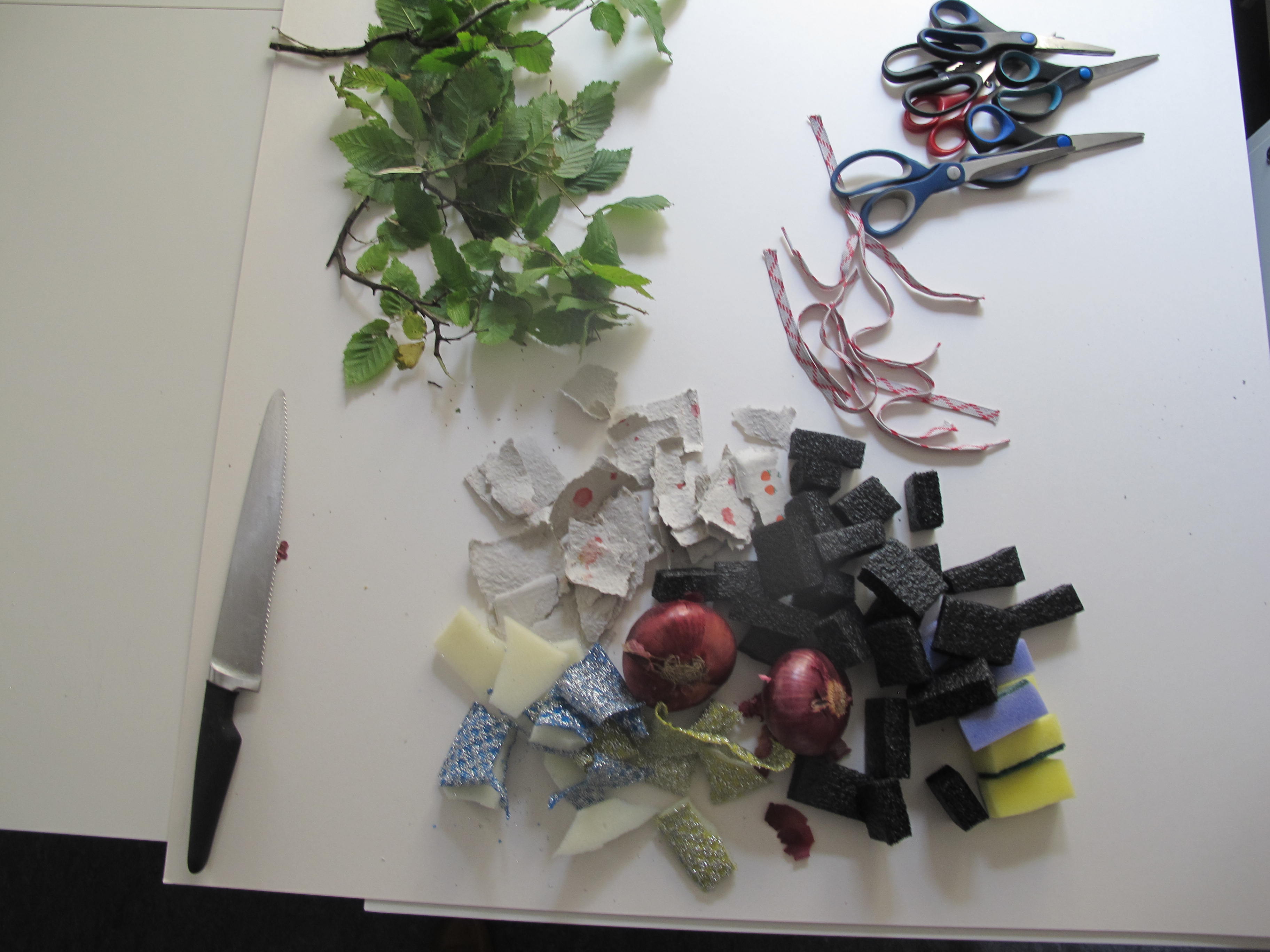
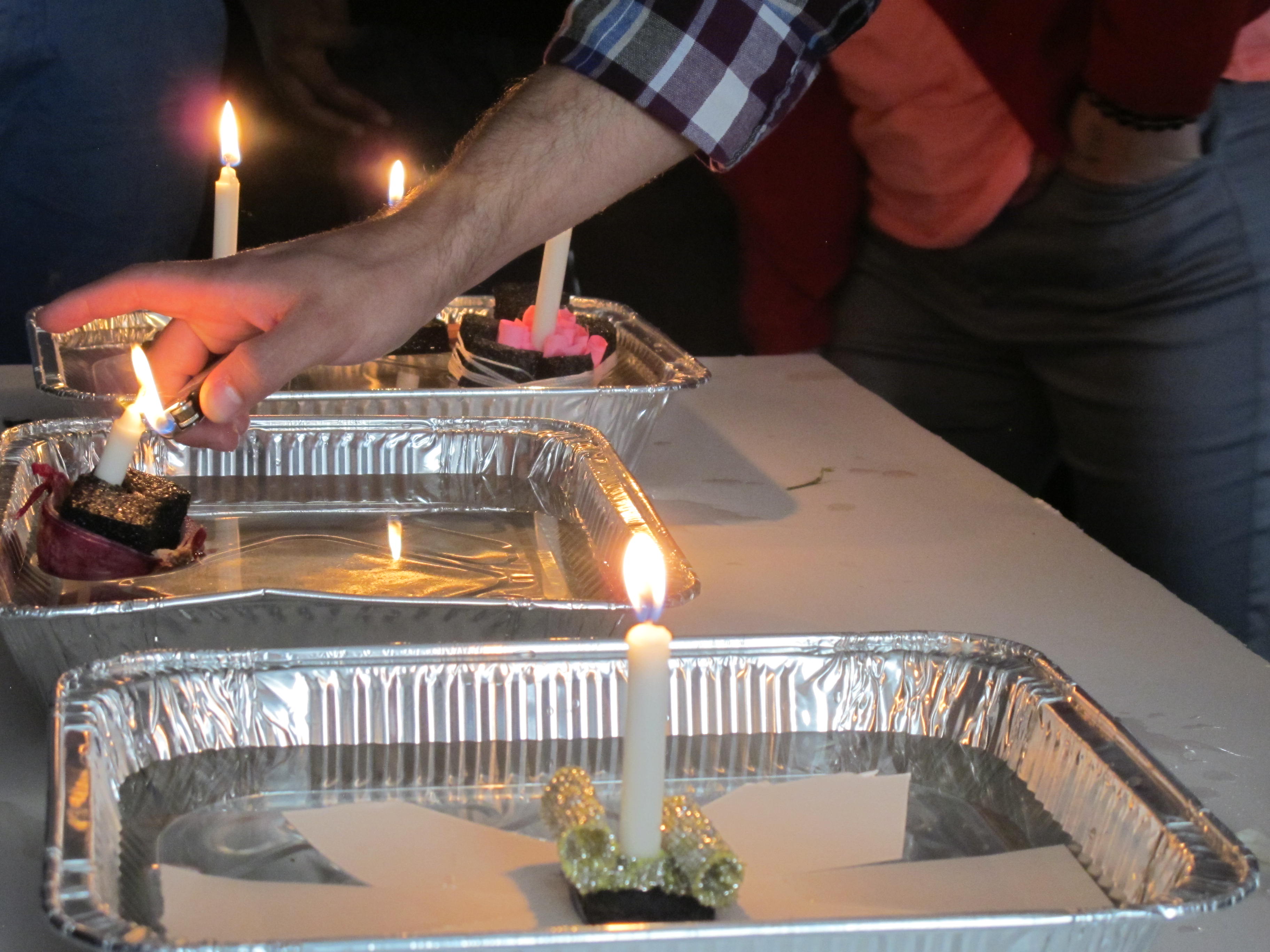
Design Thinking Crash Course : redesign the playground
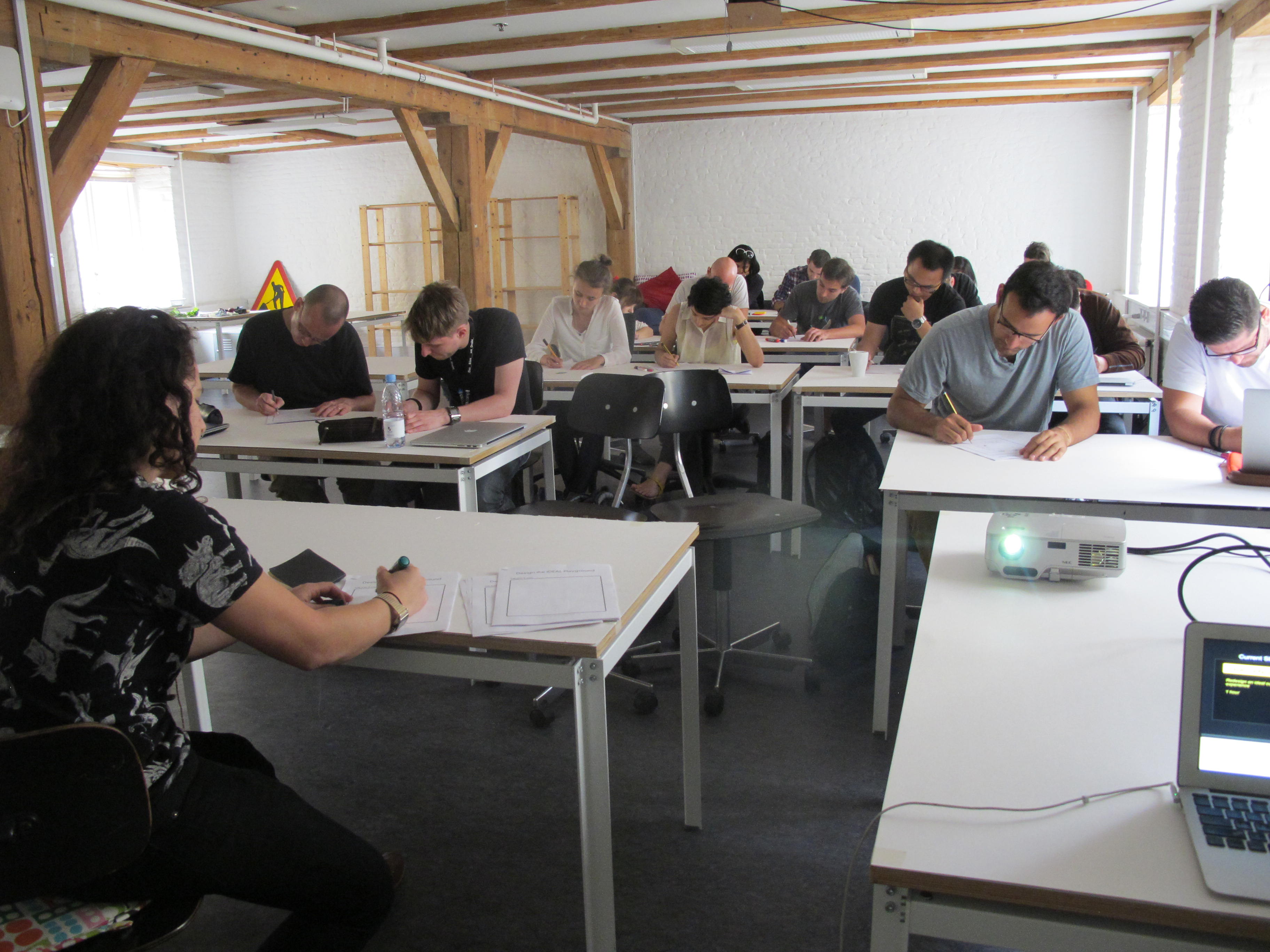

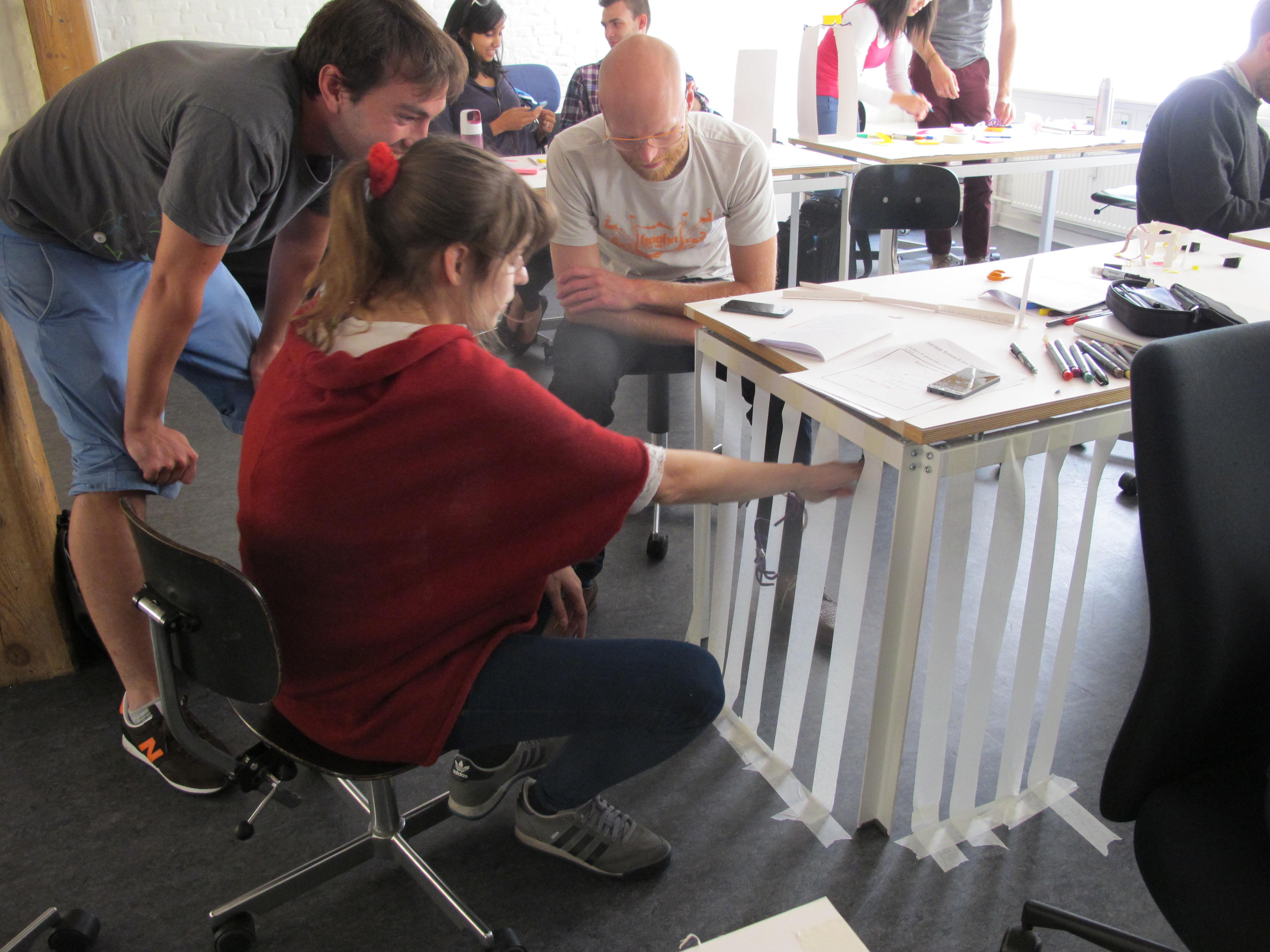
Day 2: Arduino Intro and lab #1. hardcore hands on.
And assignment #1: Design solution from the perspective of a non human user
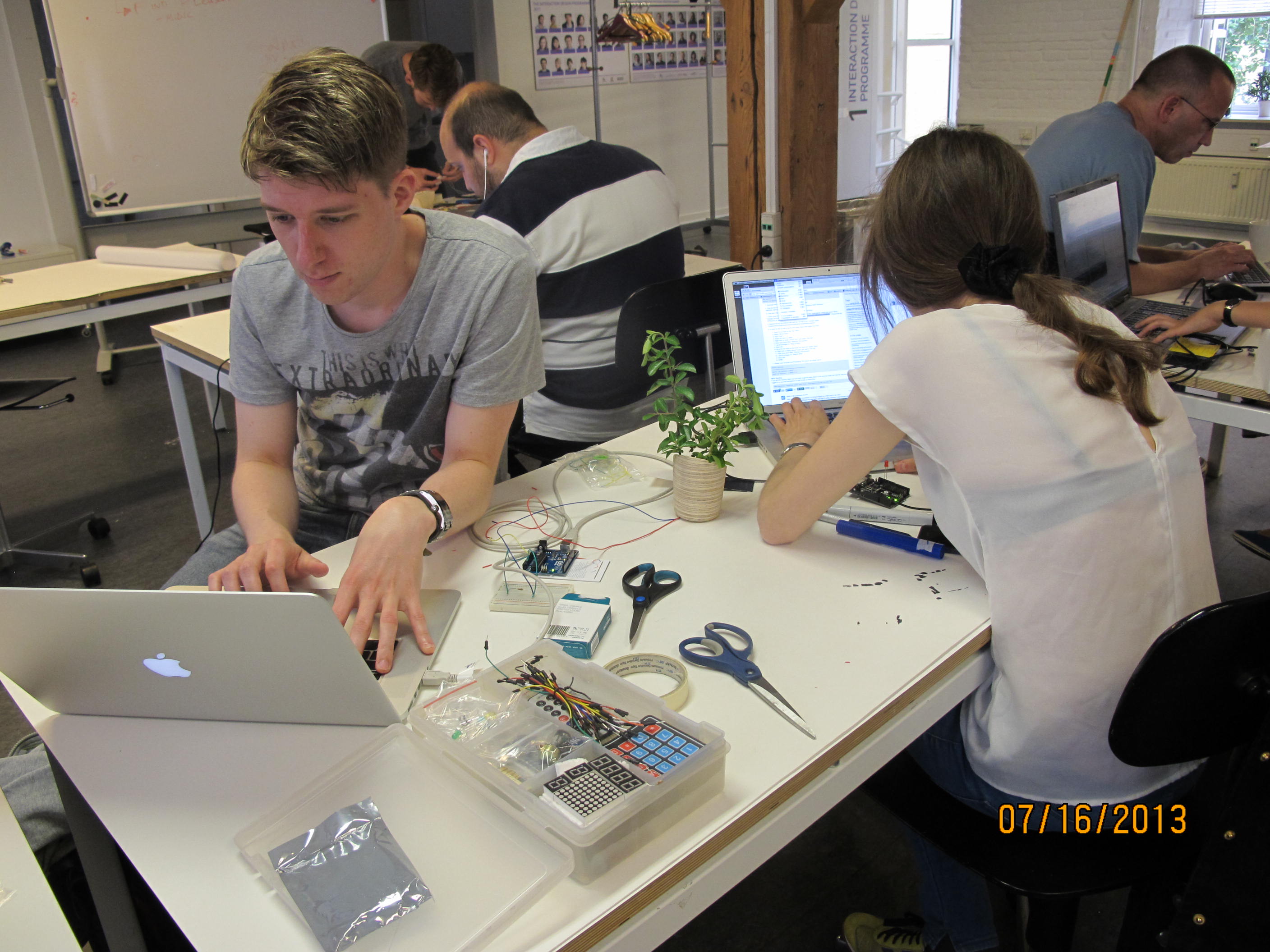
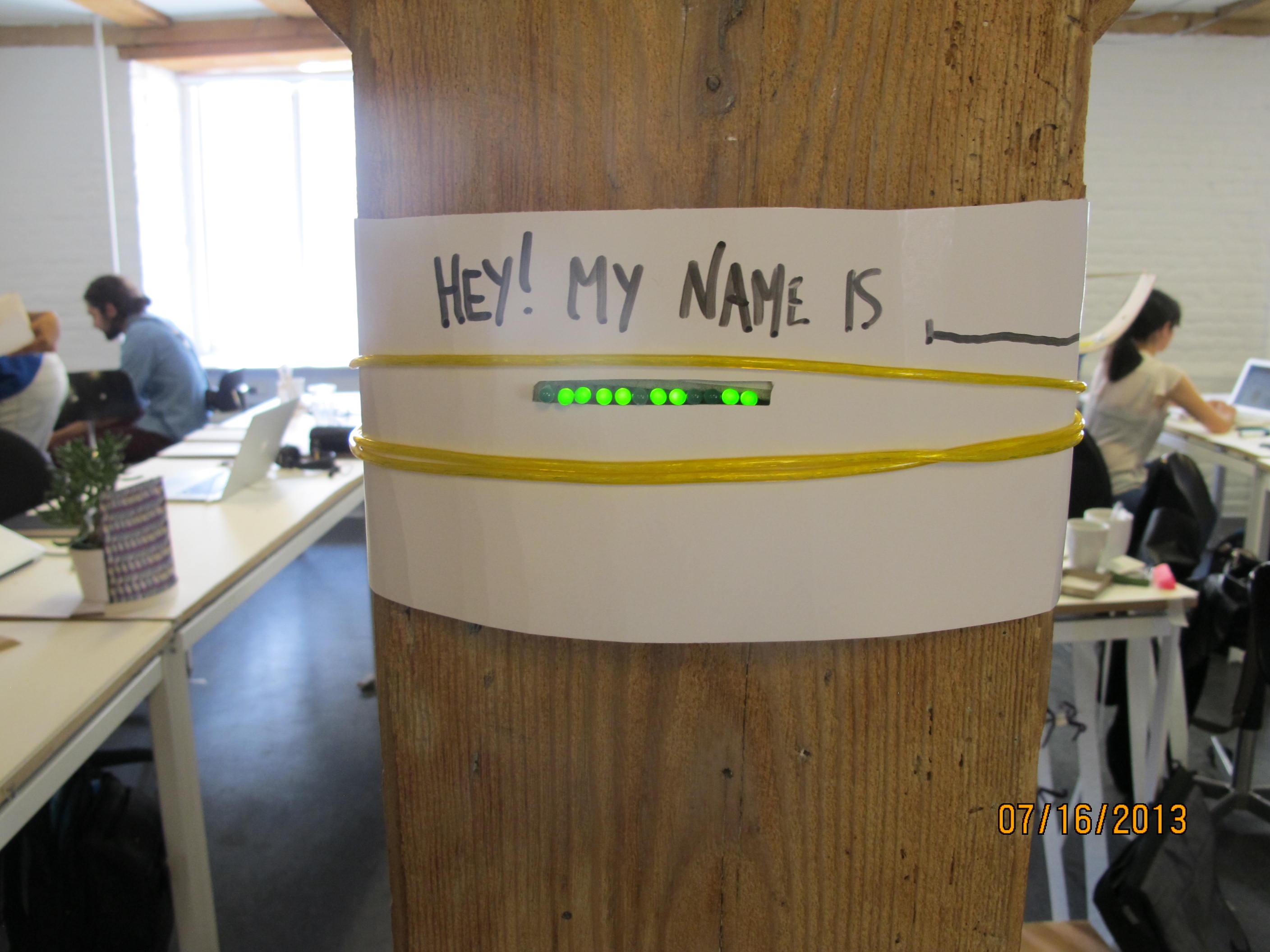
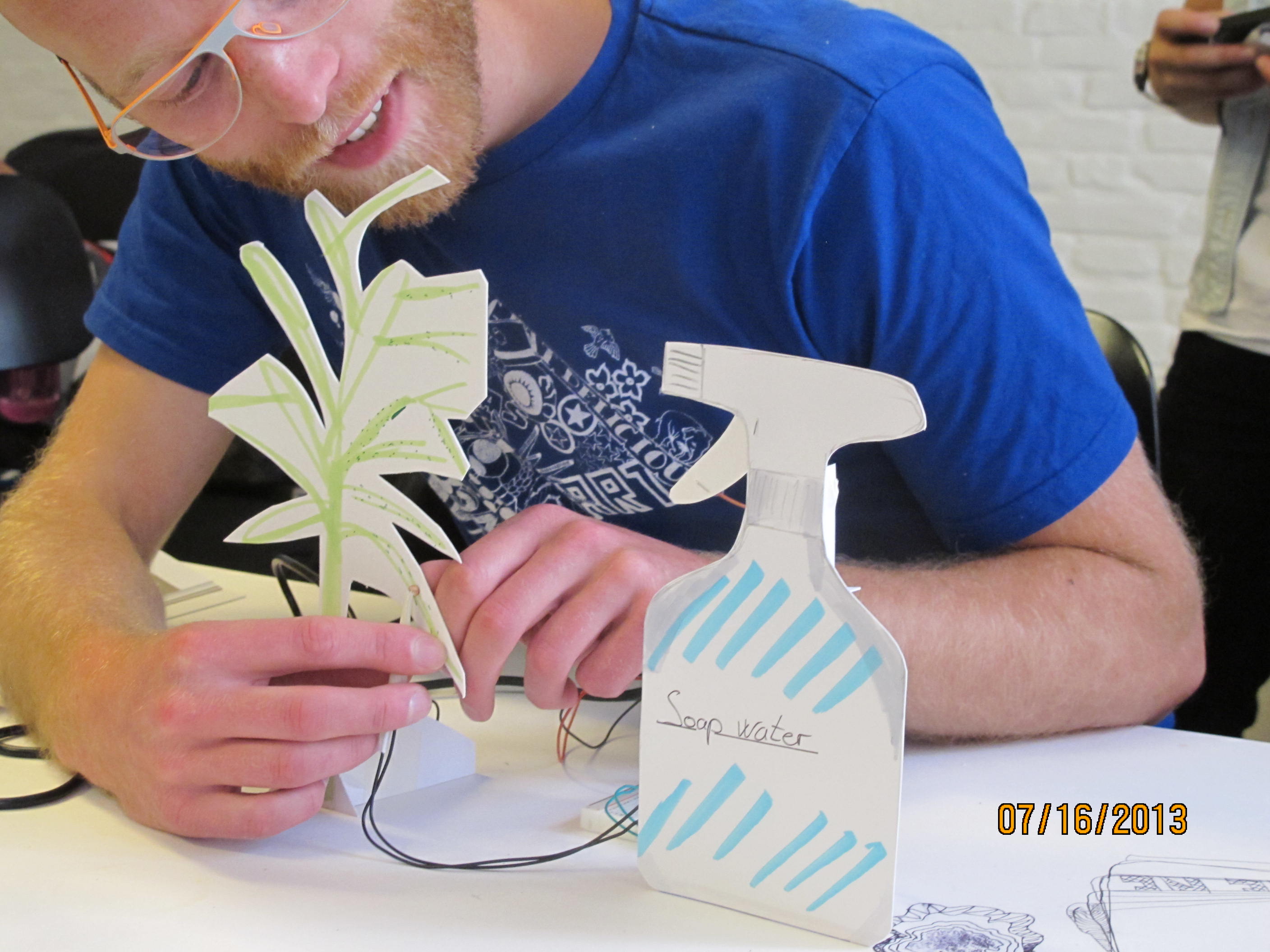
By day 3 already, we were planning for the final project and doing some analog user testing:
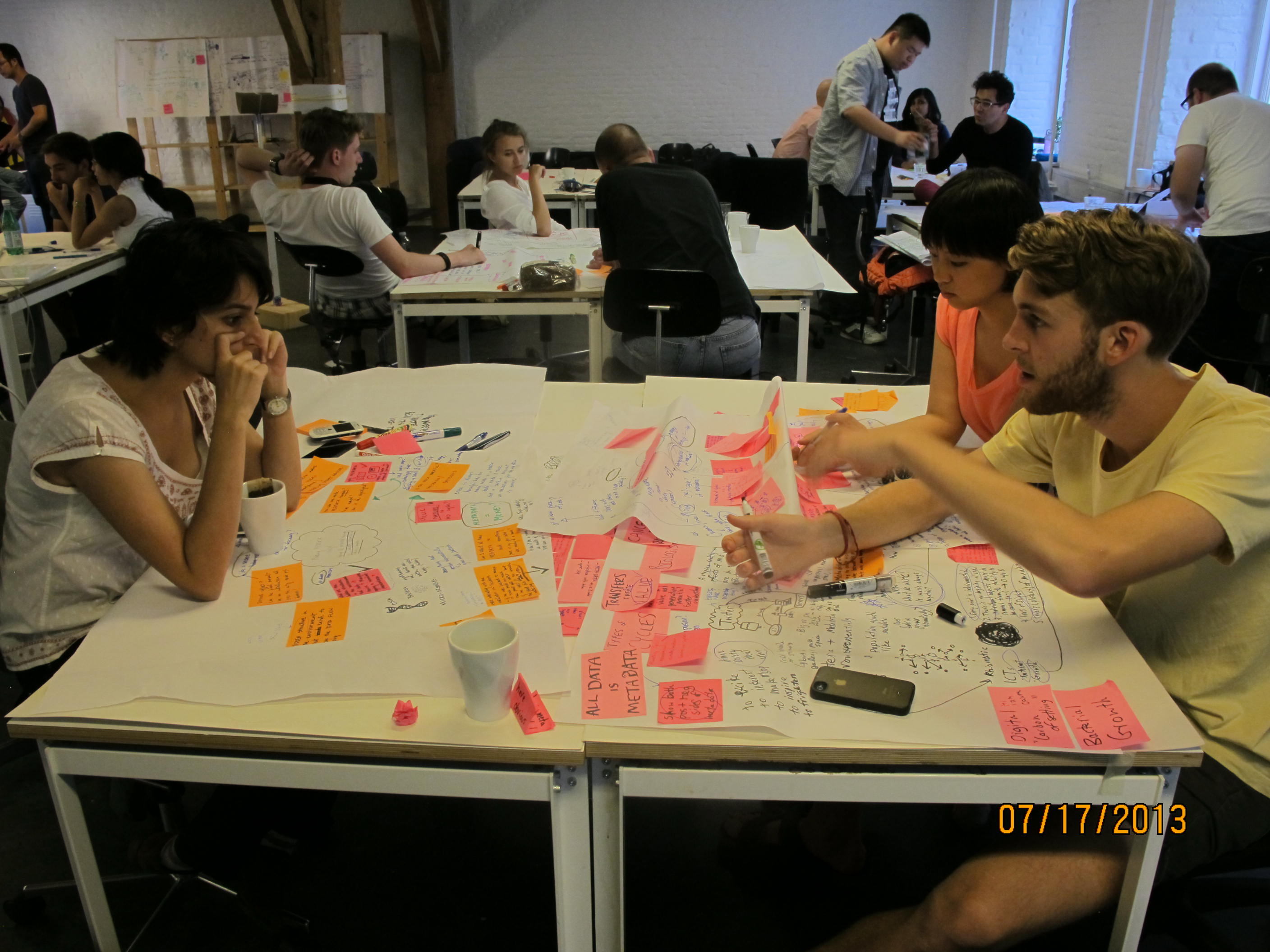
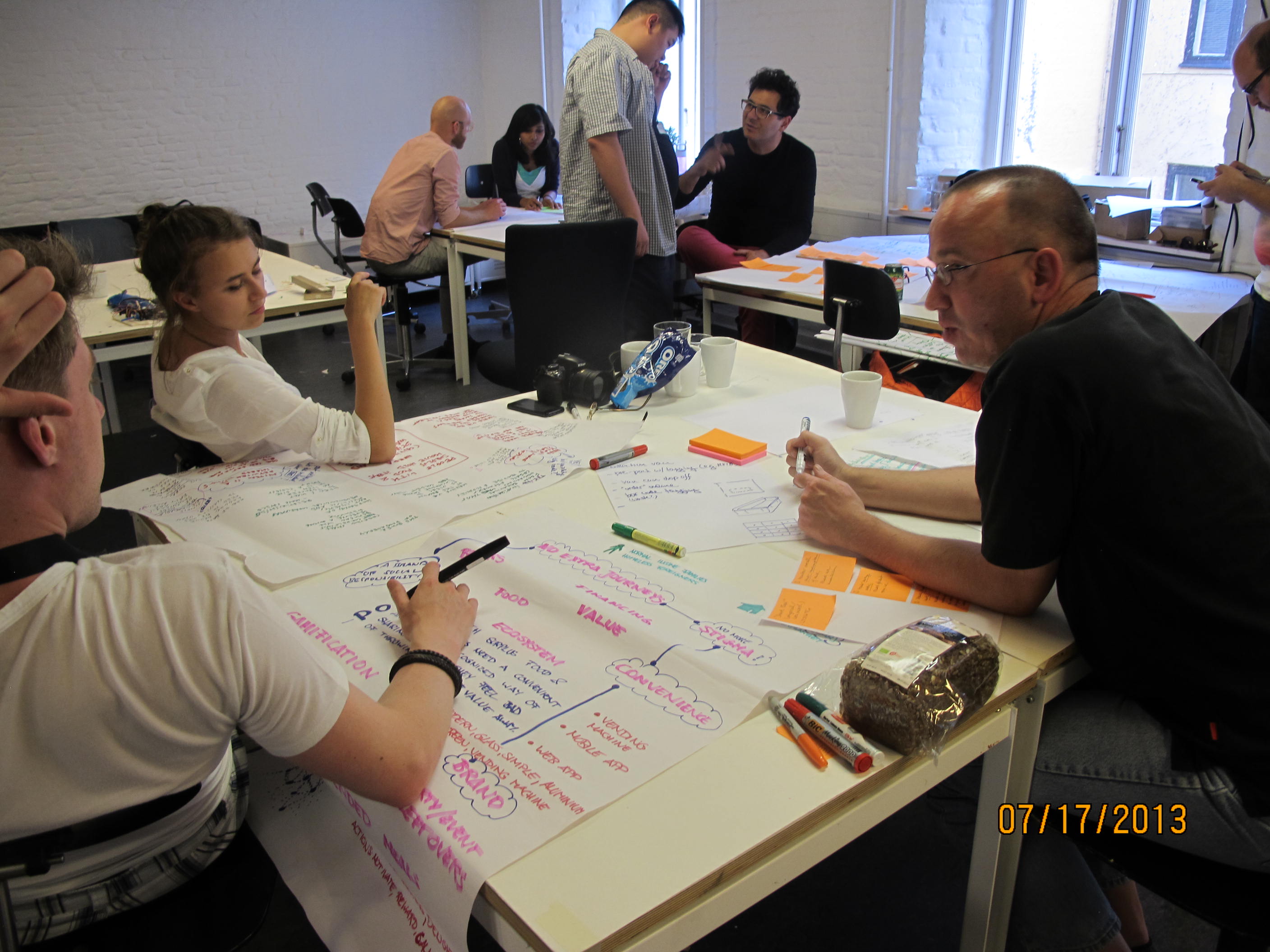
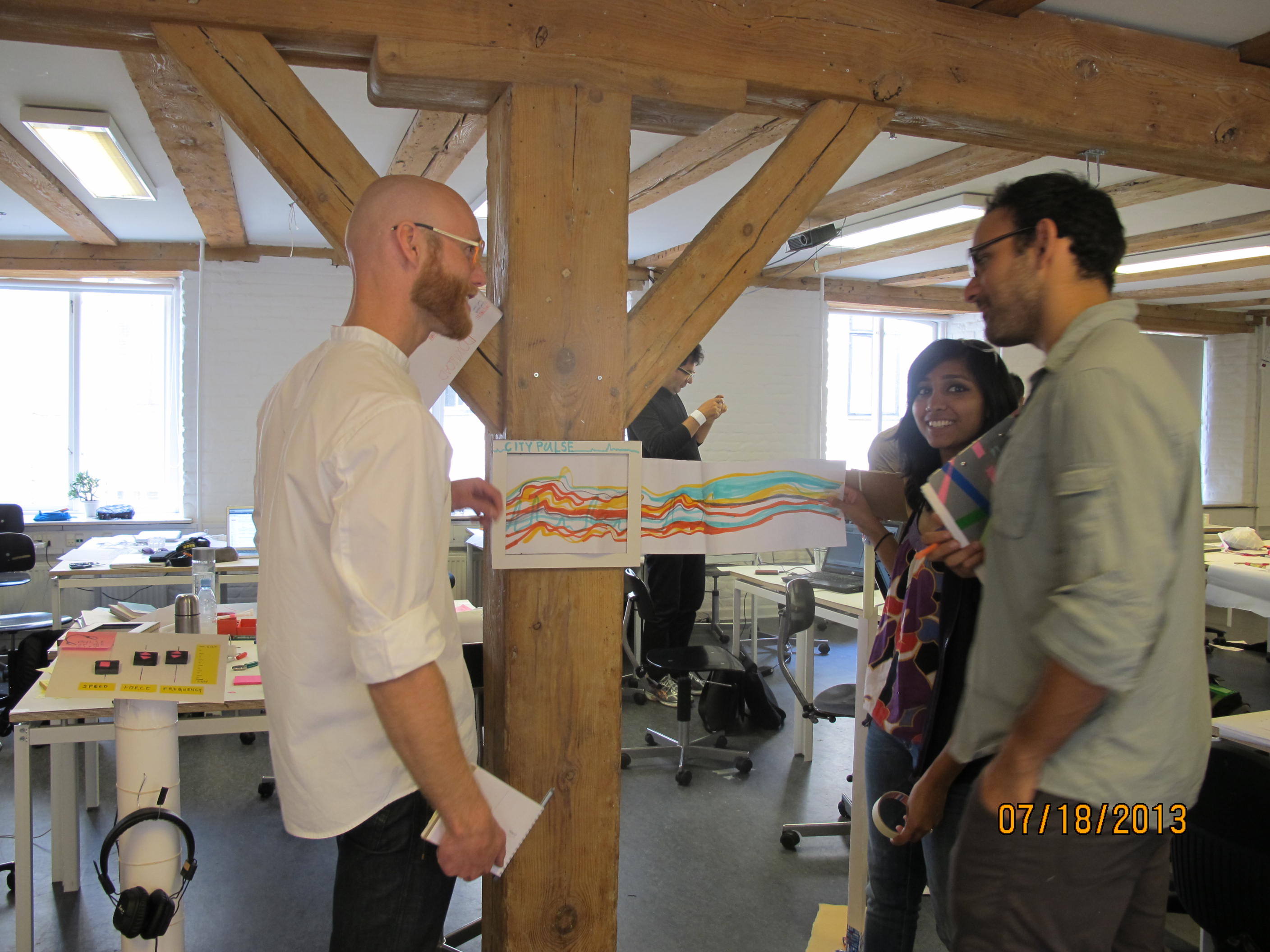
and analog fabrication, building, designing, planting, creating, conceiving, etc
AND A LOT OF WORK, late night wine, and planning:
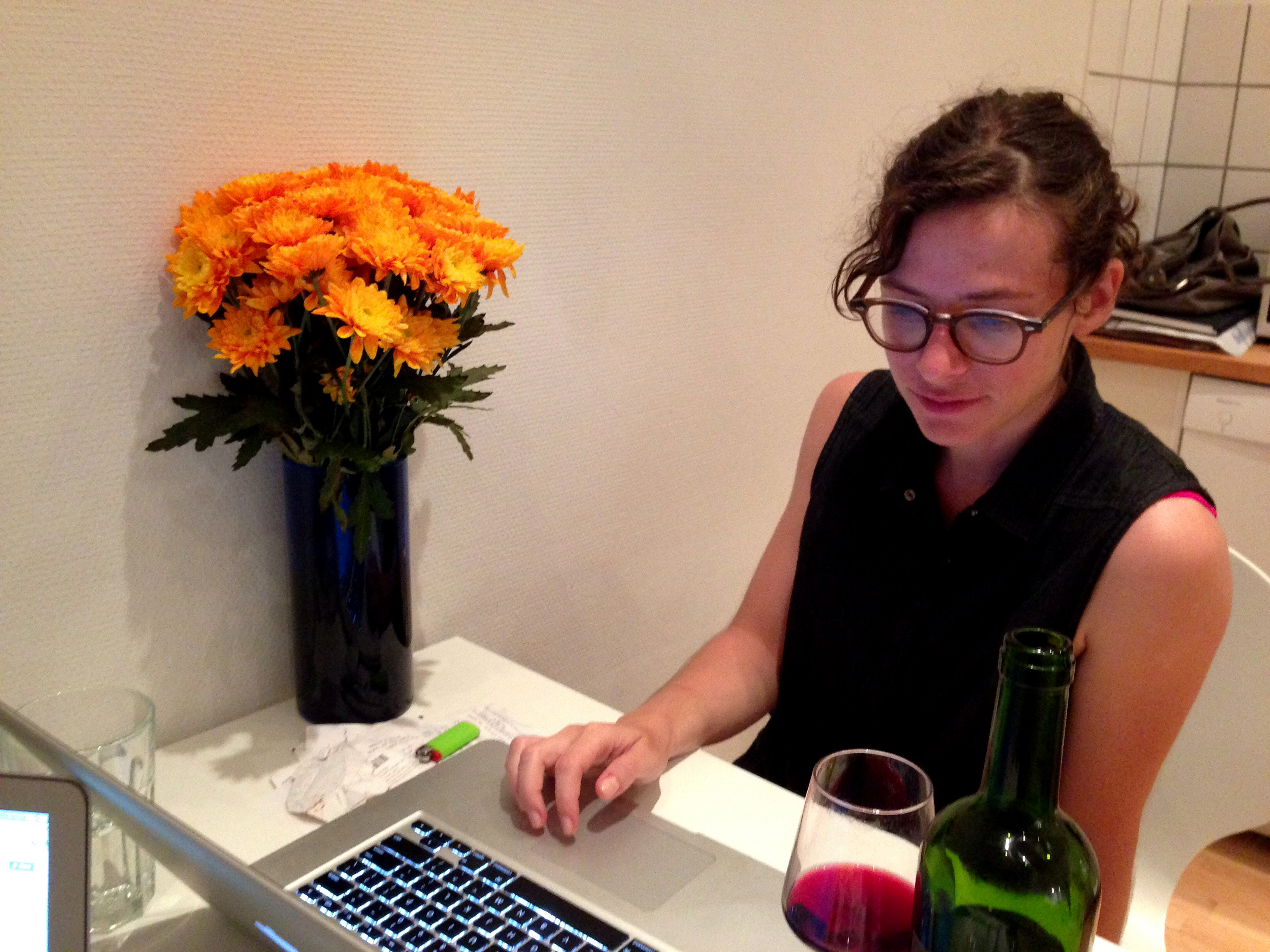
and some picnics and some drinks:
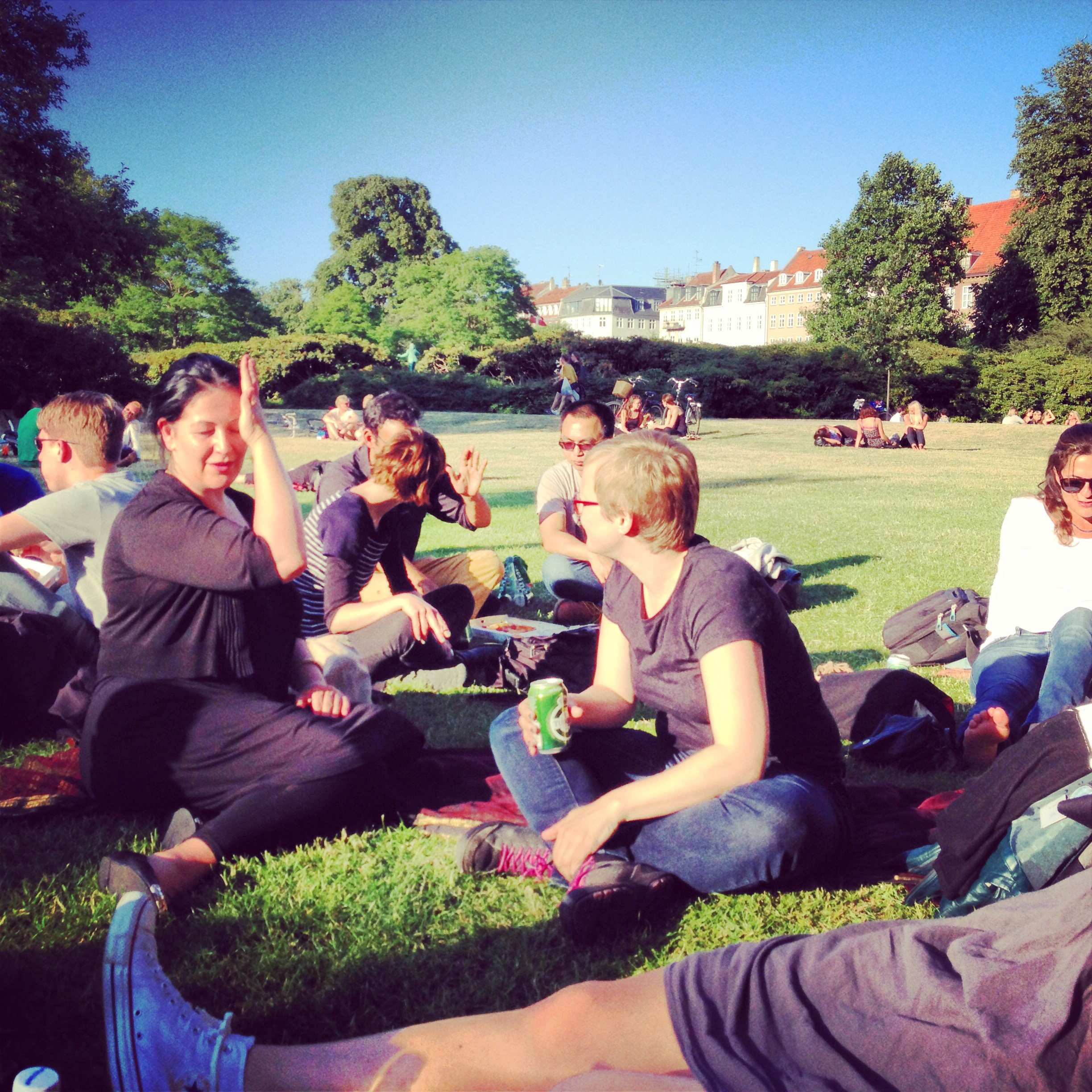

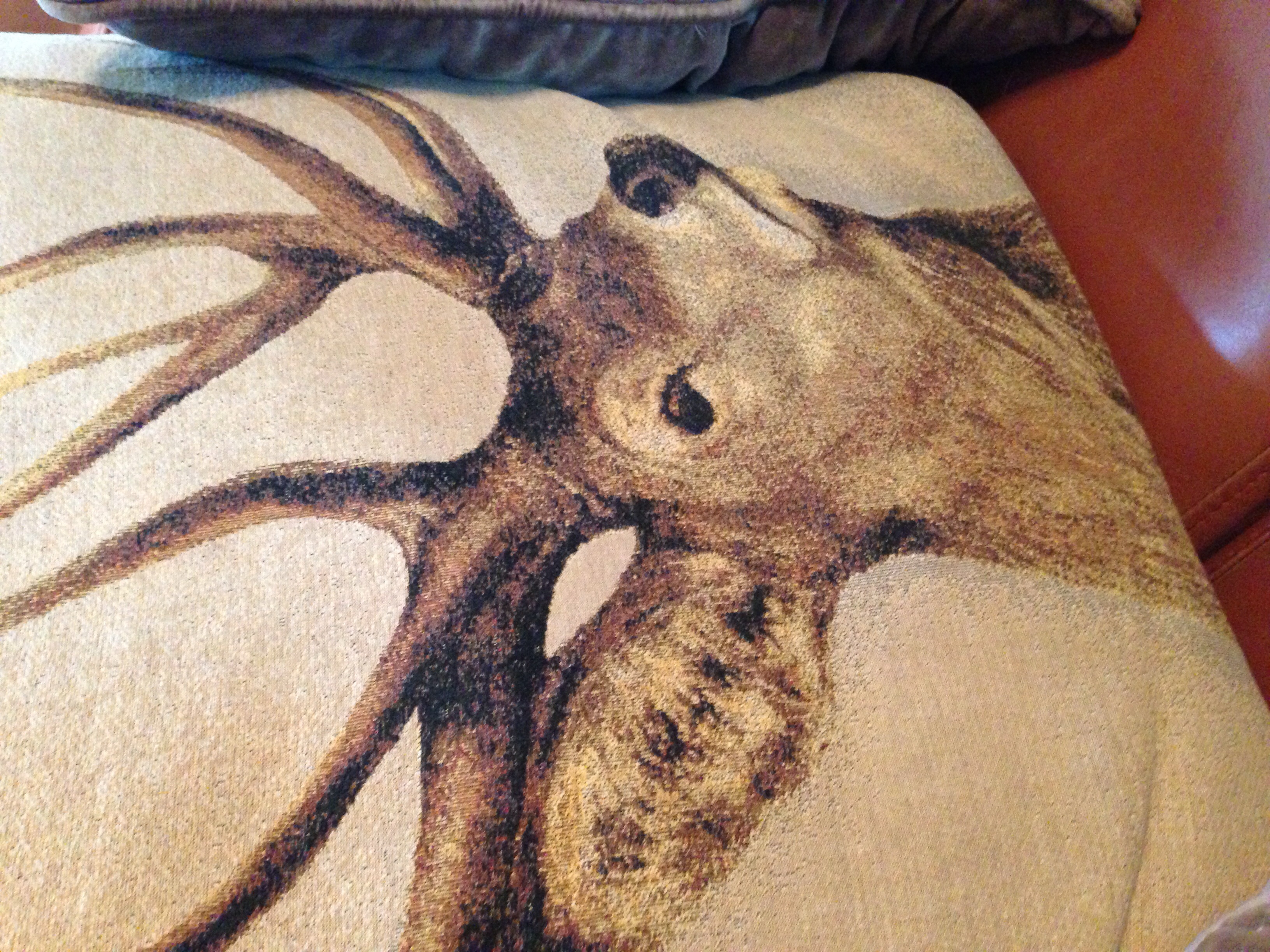
Finally the weekend came. We biked to Louisiana to see Tara Donovan.
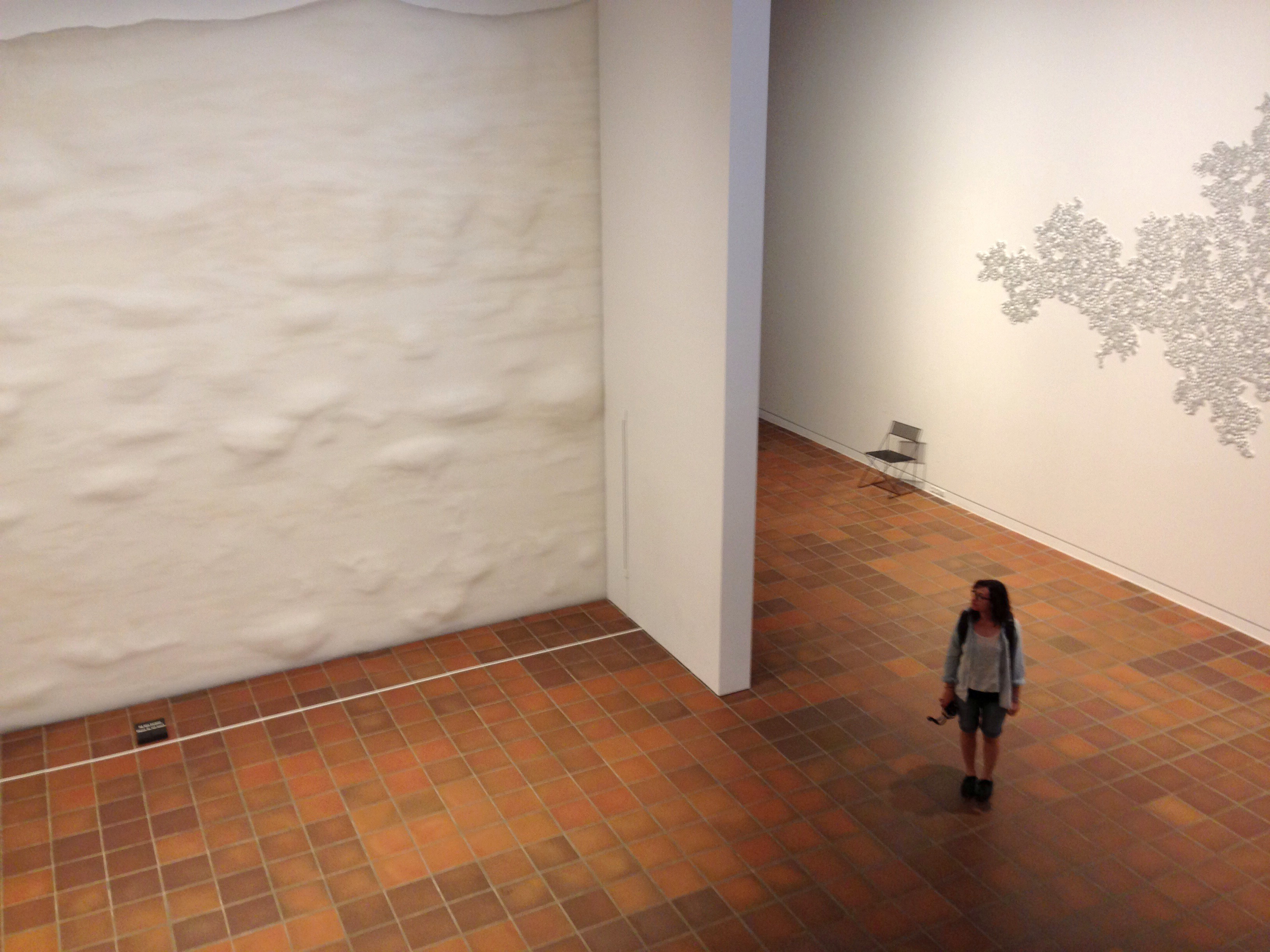
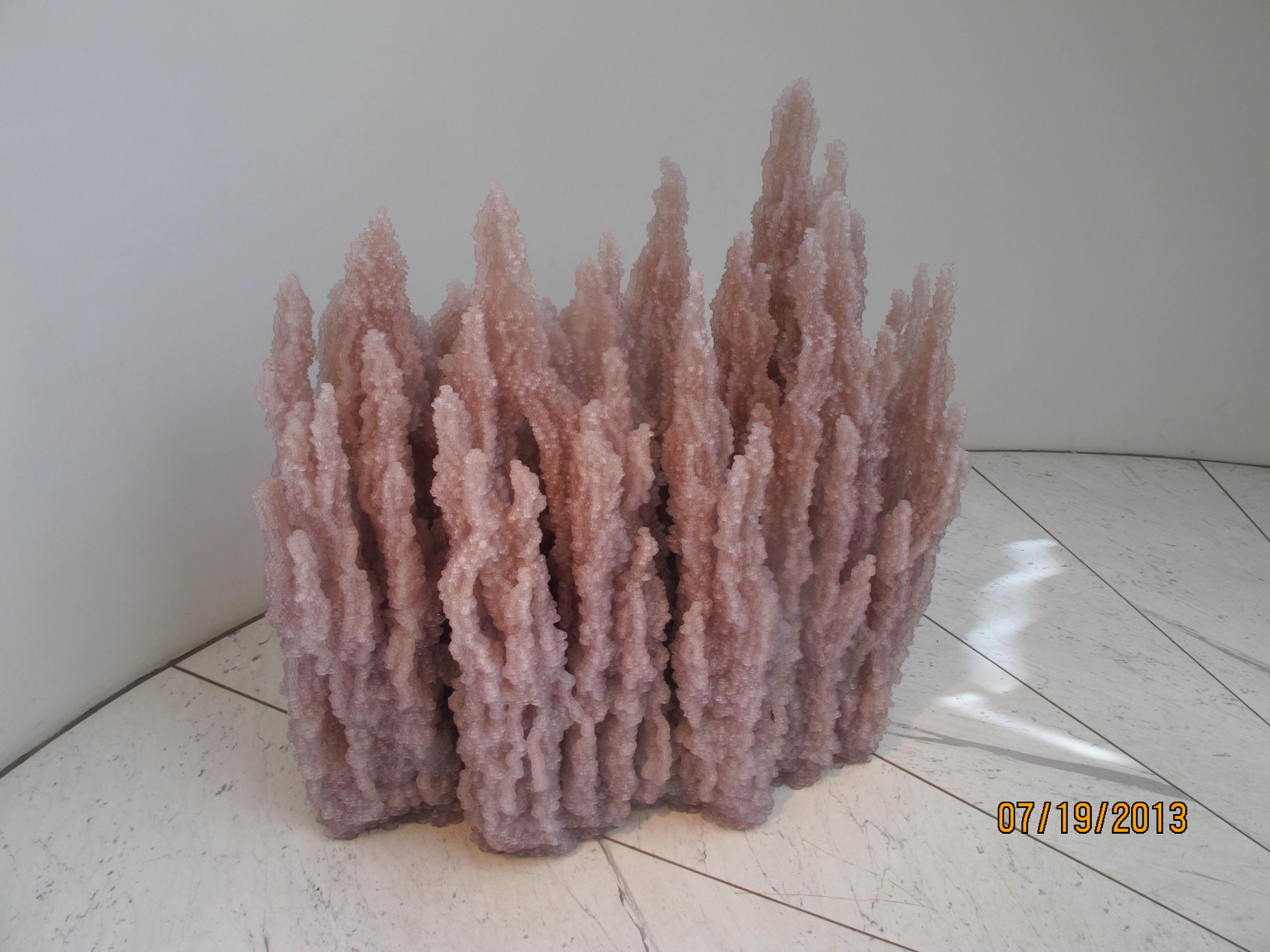



Then the work resumed, as the week started back up.

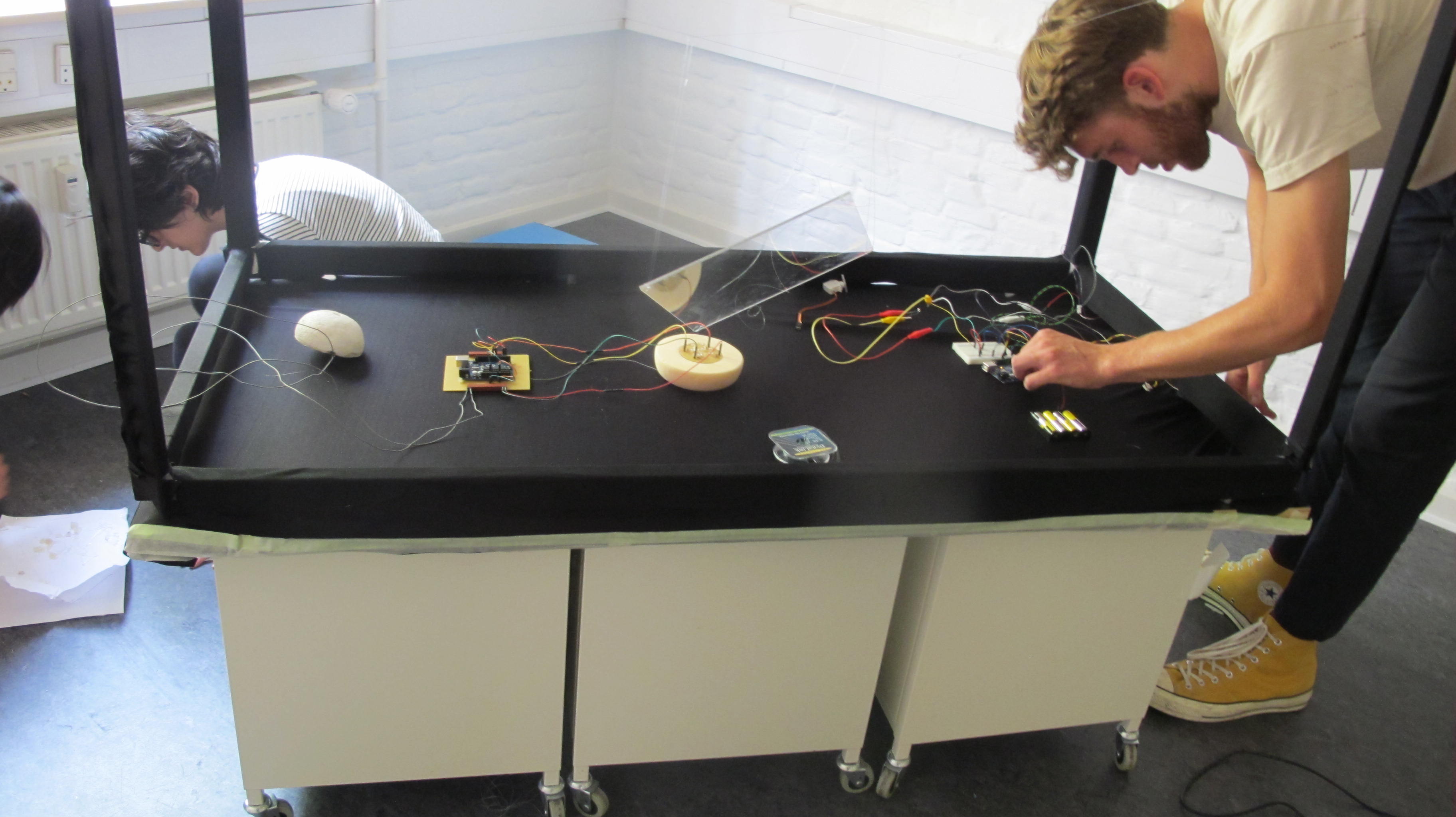
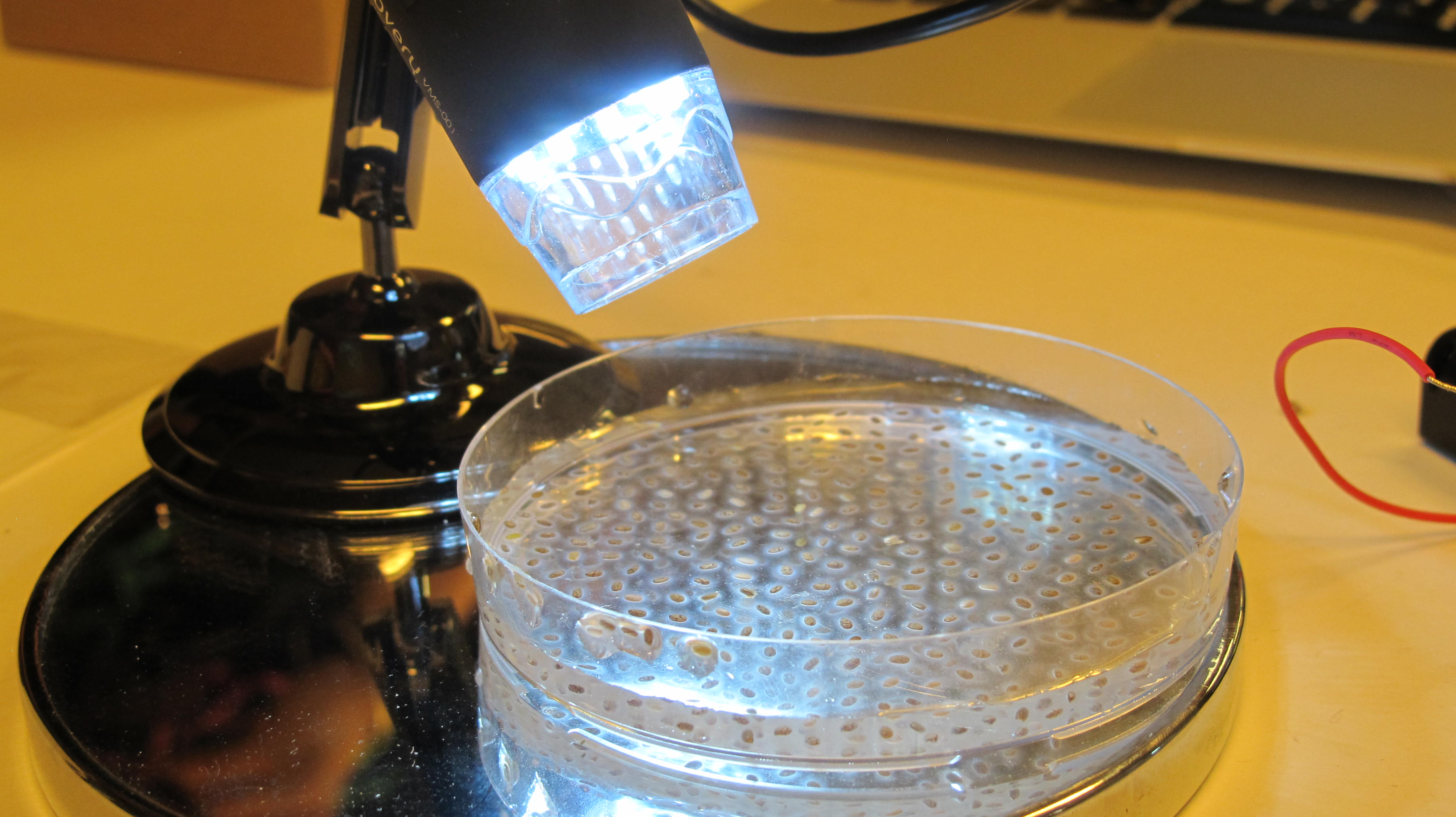
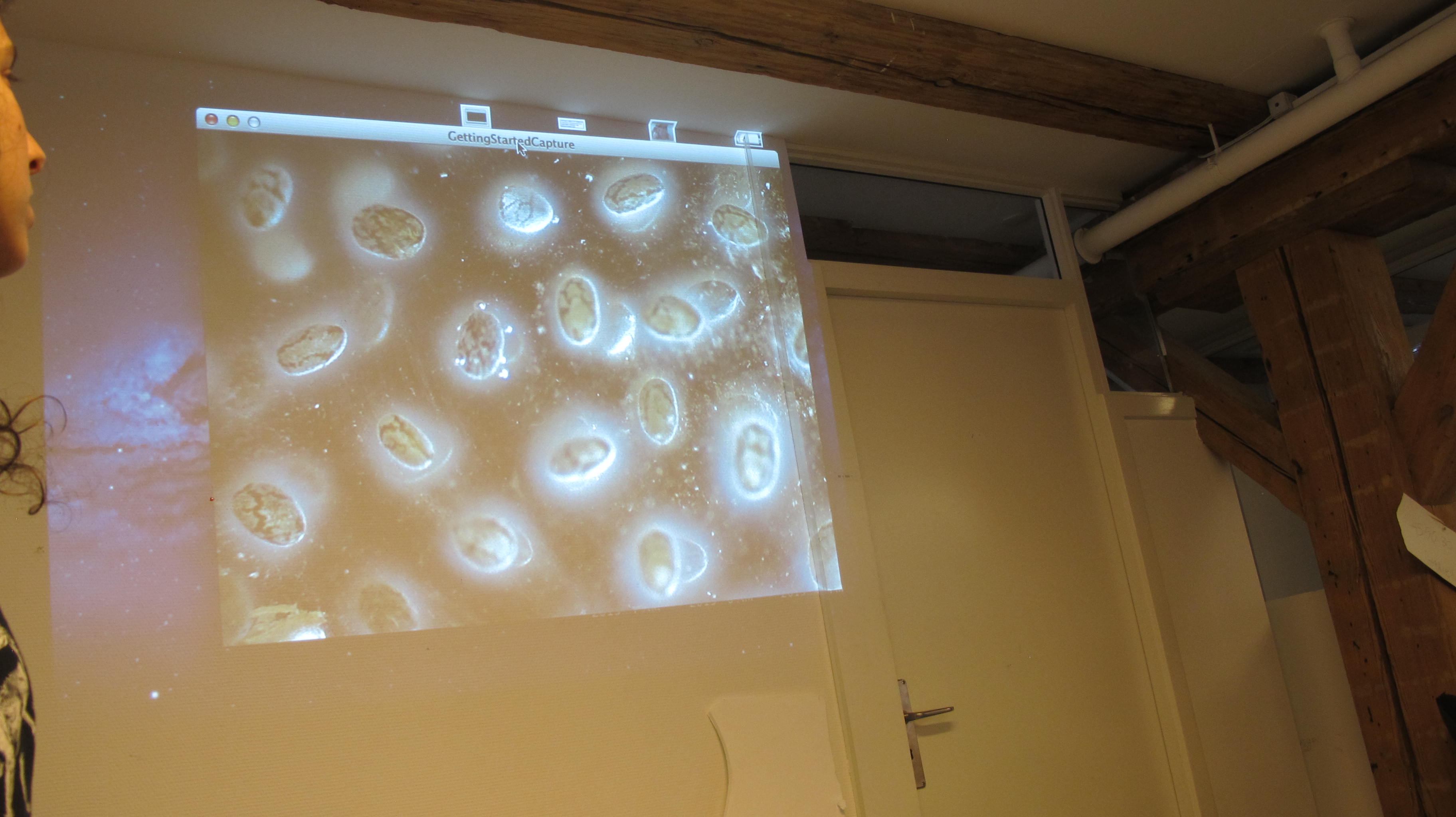
lots of late night work [it only doesn’t look dark because it got dark aroundplay 10:30 because of the long days]:

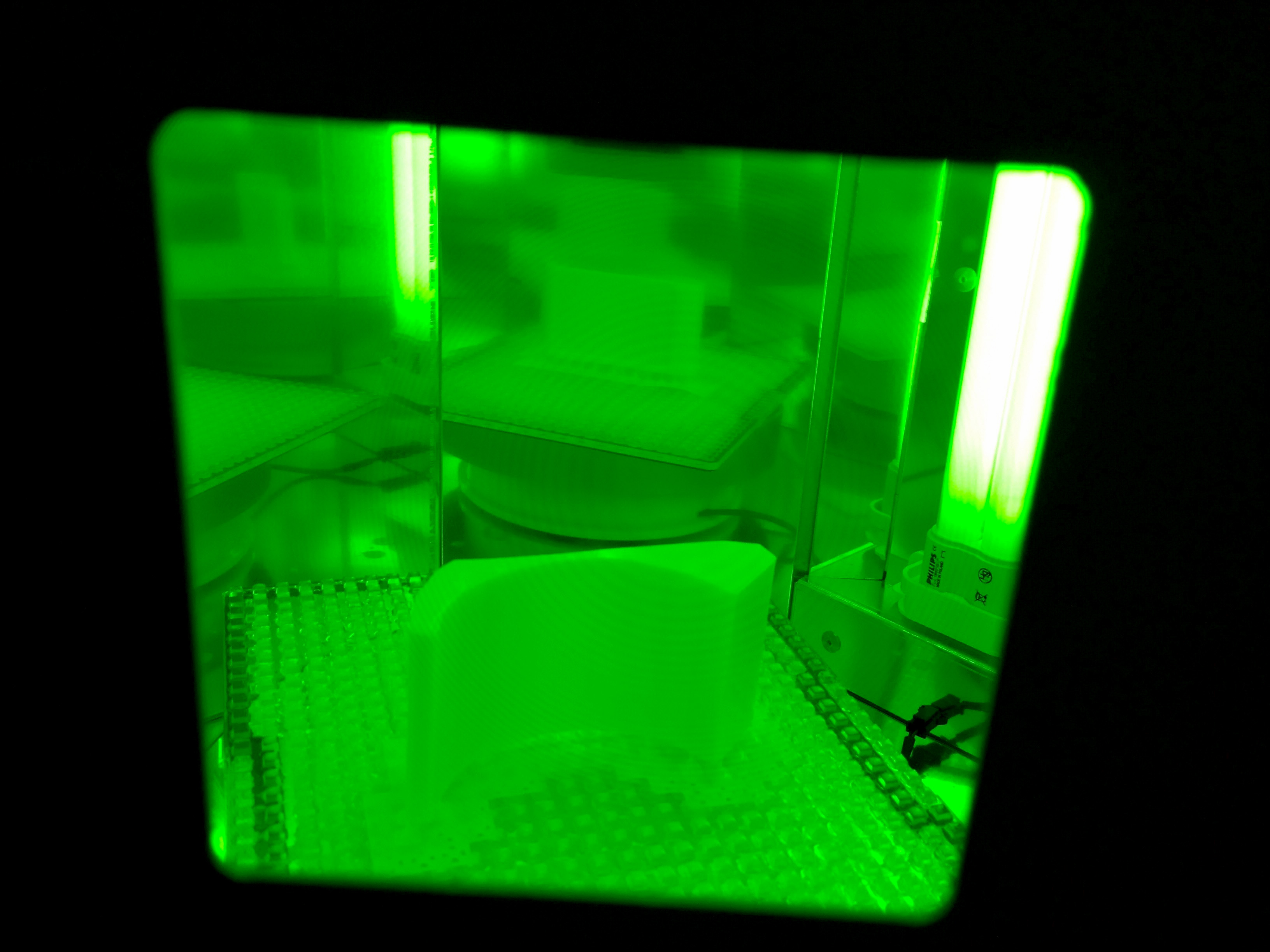

and a computer disaster disconnecting Genevieve from the rest of the world:
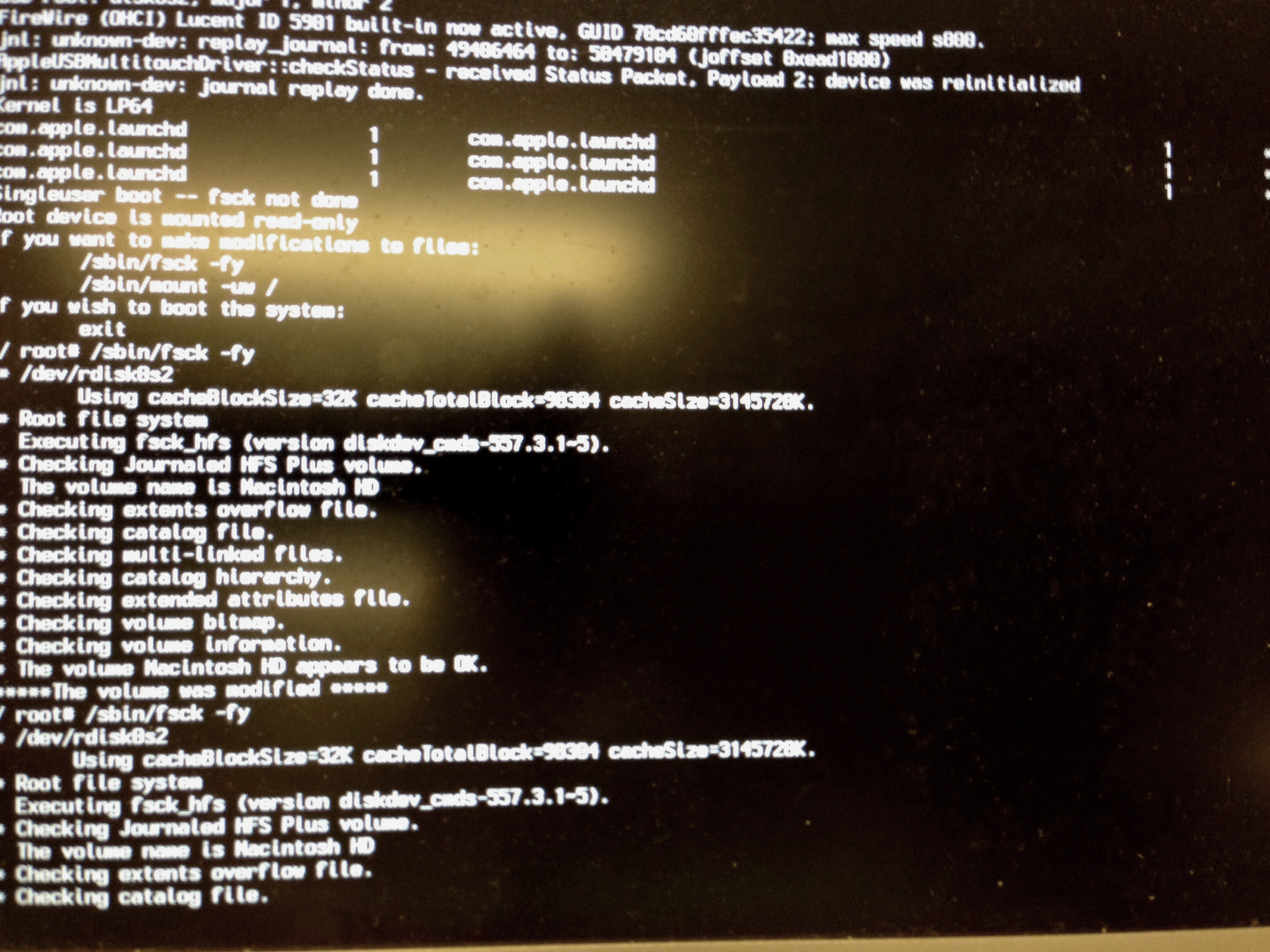
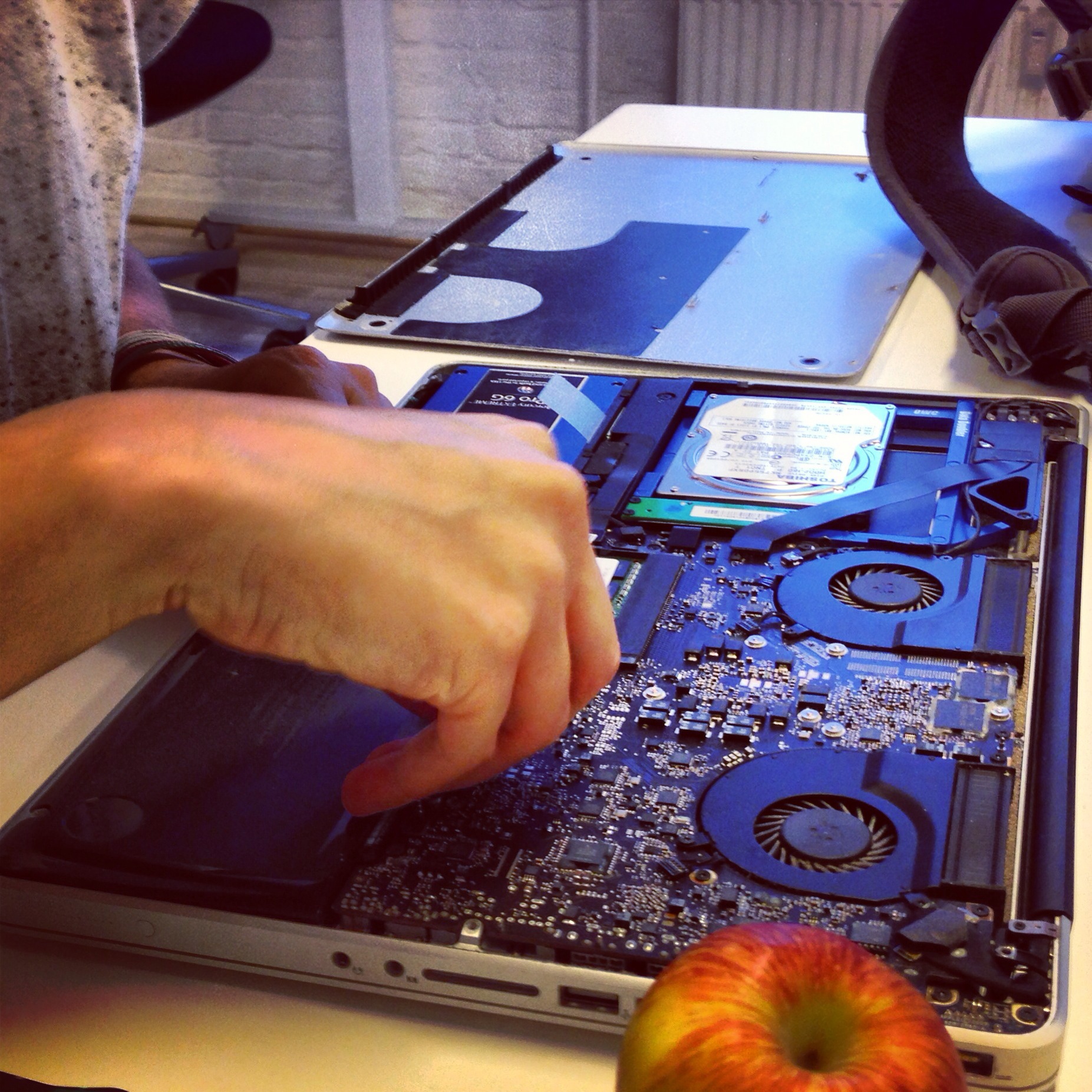
and a field trip to labitat:
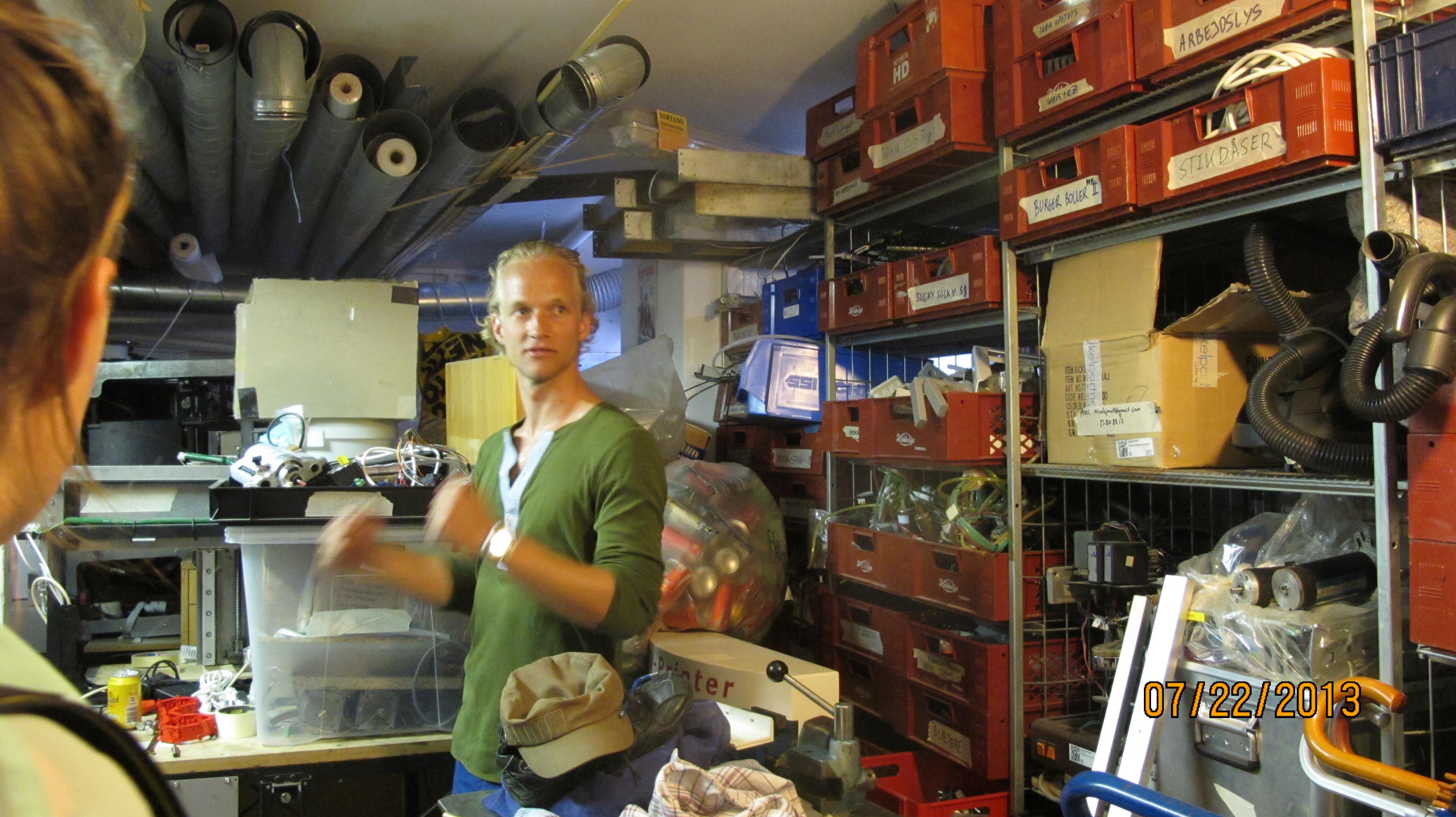
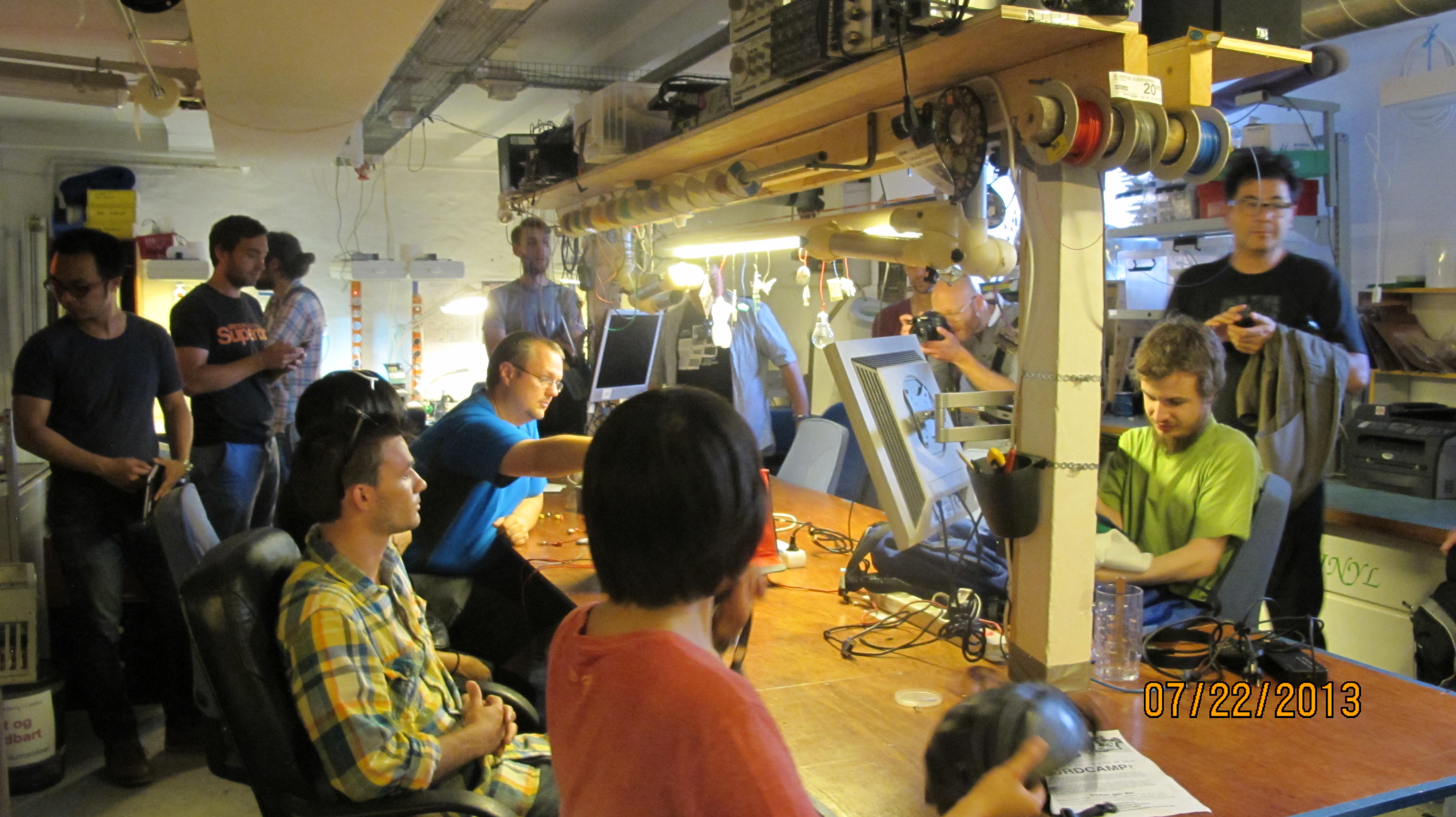
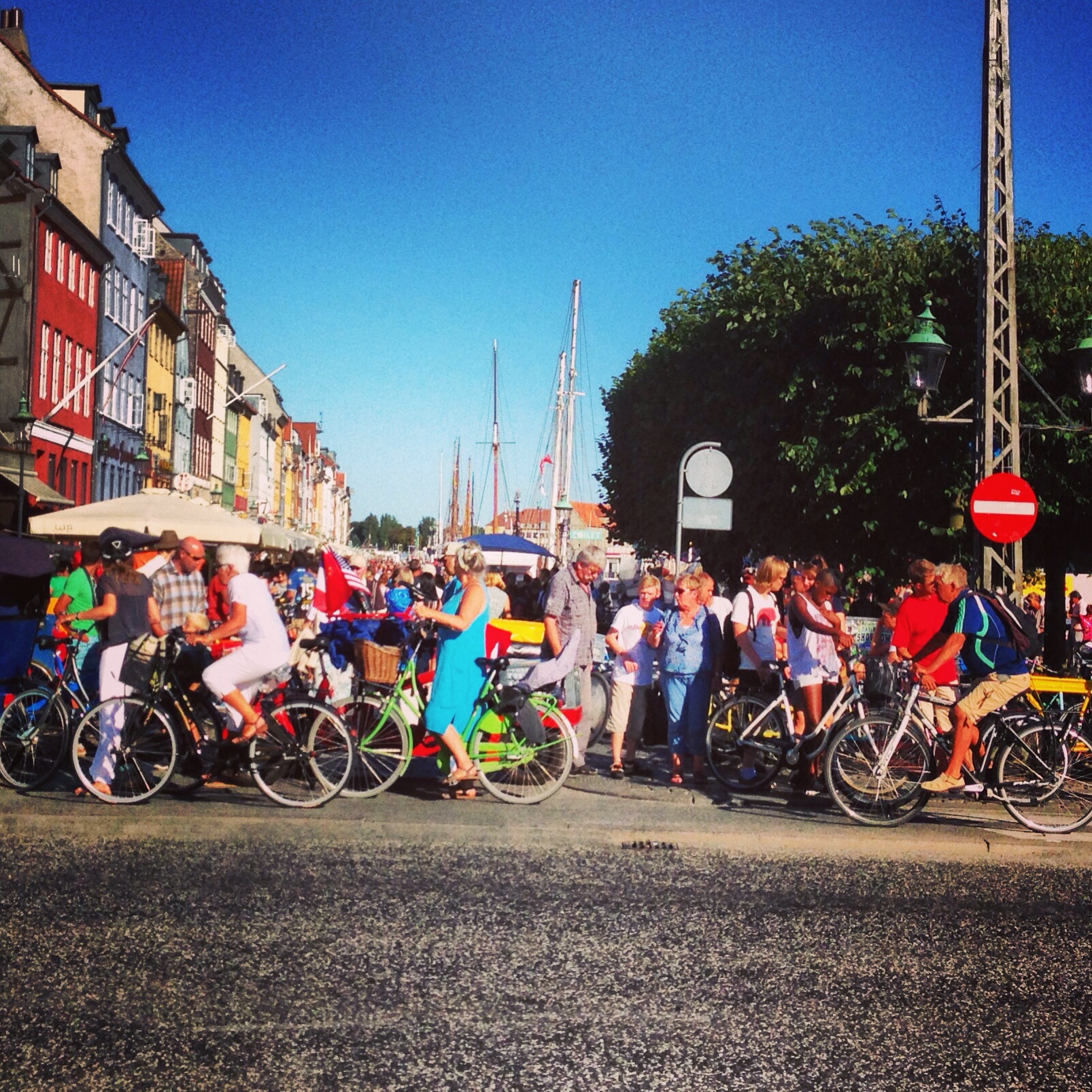
And a long week later:
projects and presentations
METADATA : Exemplifying that unwillingly, we are all contributing to Metadata’s collection, but that can either be percieved positive or negative
THE ANTS PROJECT : encouraging recycling based on a point system modeled after ant behaviour
BIIKE – a gps tracker and data logging system to encourage biking in cities
ANTHILL – bringing sharing to mainstream with intelligent share stations setup in local supermarkets
SYMBO – a biomimetic flying trash collecting drone
CITY PULSE – Urban Data and energy contributing both to information aggregation as well as public art and compelling visualisations
And the presentations:
And FINALLY after an intense and sleepless week, the barbeque of celebration.
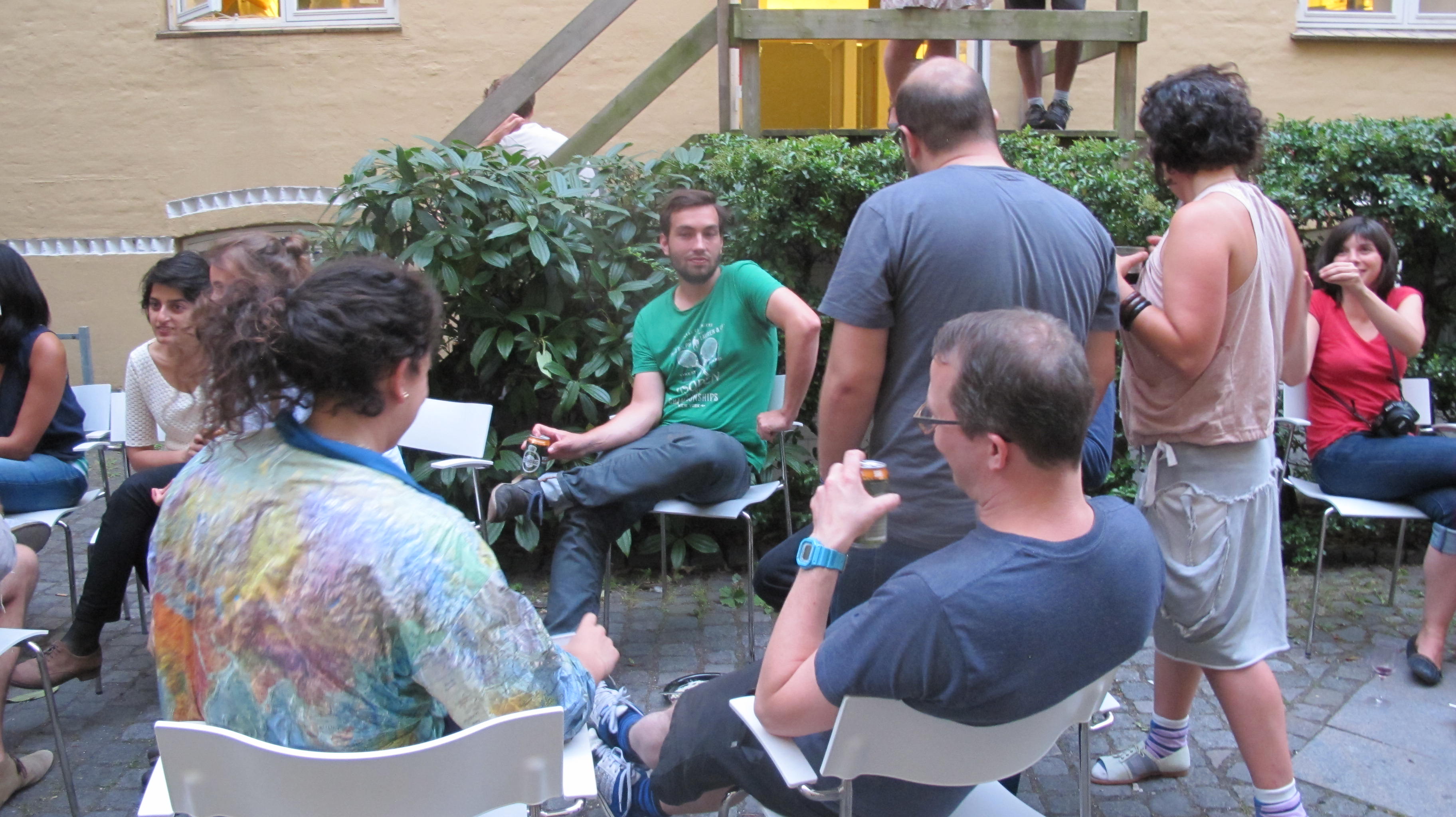

Unreasonable at Sea day 71: Resident Attorney
Today we are somewhere here, heading south west from Mauritius making our way south around Madagascar and towards Africa coast, through the Indian Ocean.
Resident Attorney
The Kembel kids showed Cesar the progress they had made miniature boats they were about to test in the pool:
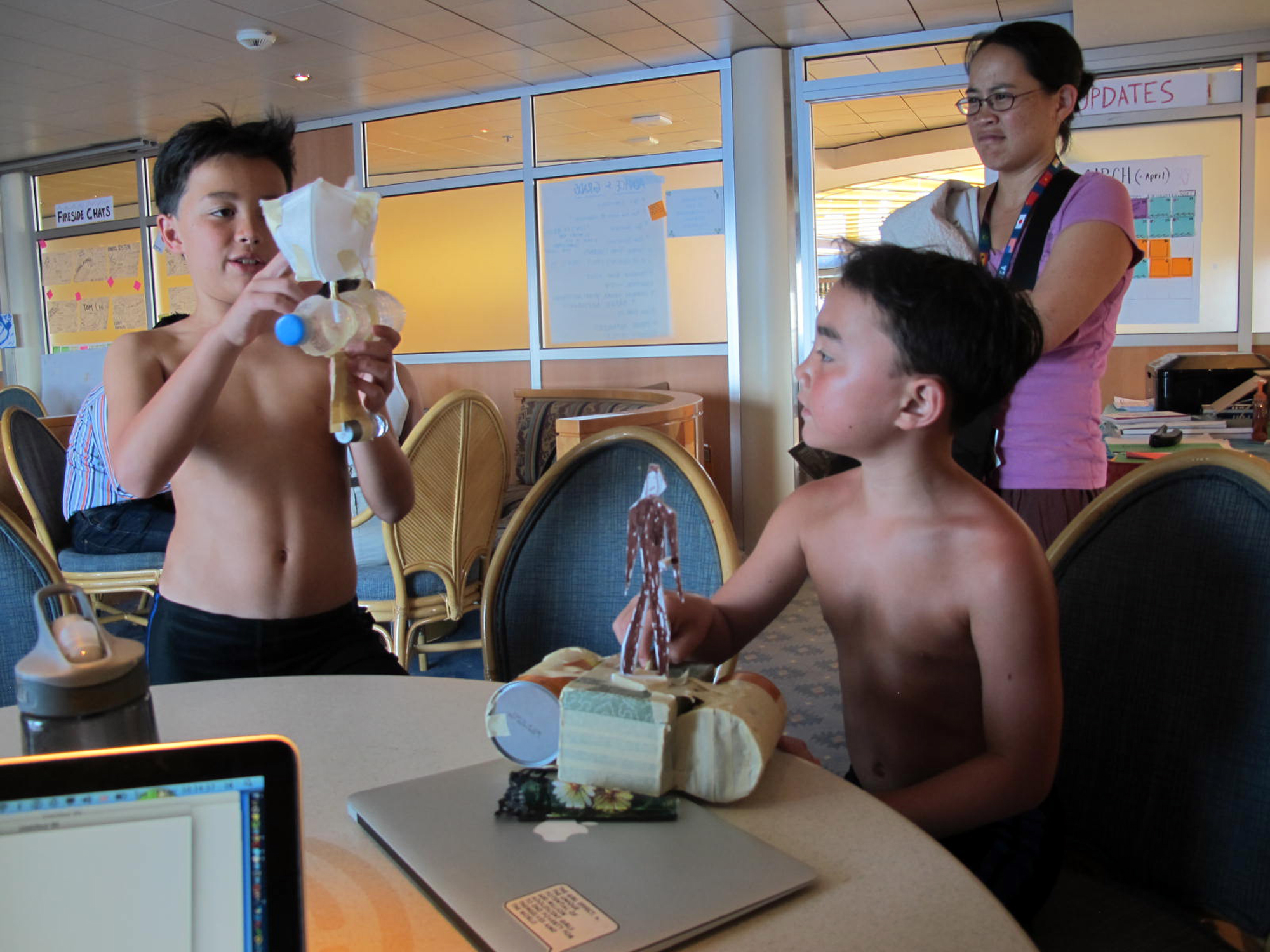

Their boats reminded me of a small robot boat I made (and taught guys to make at a workshop at the Science Gallery, Dublin, Trinity College) :
Spaghetti boat:
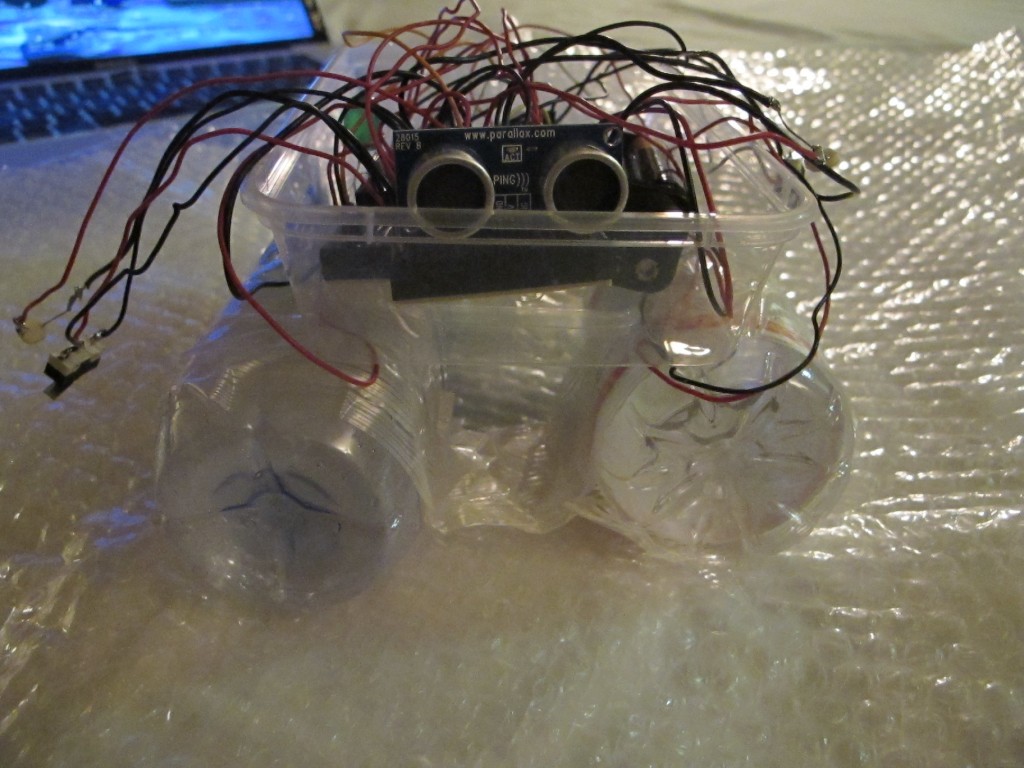
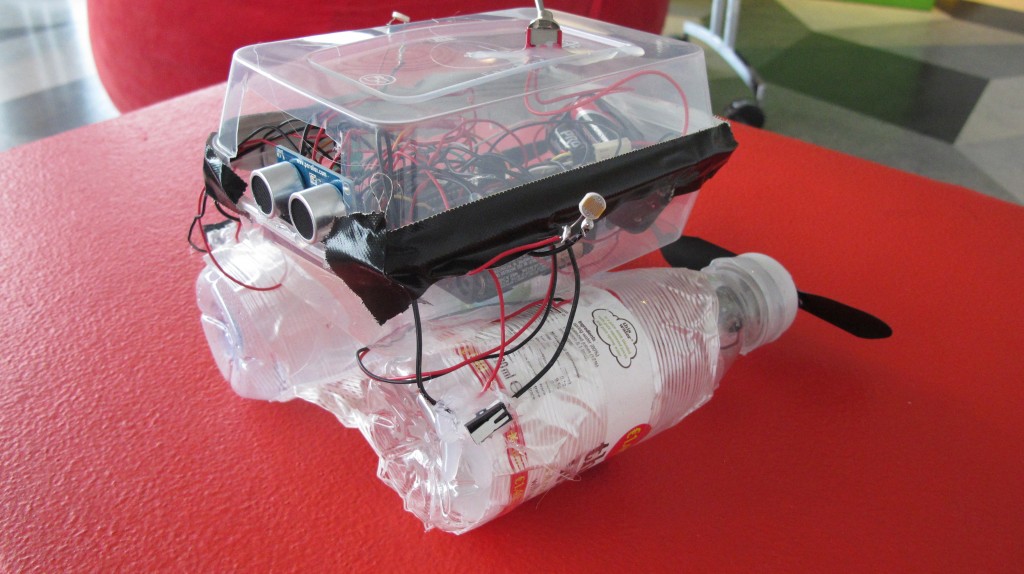
Also I published this on Instructables
We had a meeting with Rehan Hasan, the resident attorney on board.
We of course have many IP and legal questions, especially considering that we are in the midst of completing a Protei-specific Open Hardware Licence with Andrew Katz.
Open Hardware: build business to fail, build technology for the environment
We do not want anyone to put us out of business : as in, steal our tech and patent it so we cannot any longer make flexible hull sailboats with segmented bodies. We DO want people to copy and produce and distribute our technology. How do we protect ourselves for this. can we do it with a license
–>License : what does this protect – i.e. cern open source hardware license to protect documentation ownership and distribution of the “electronic / hardware” product
–is a license just a social framework / agreement or is this actually protecting you for the technology
–What are the implications of publishing documentation about the technology ?
–>does this make it impossible for others to NOT patent… does this protect us in any way?
Some IP questions from the past:
2 what are the implications of a patent on electronics? if it is open source
3 can we / should we file for provisional patents?
4 What does a patent do: protect against anyone else that tries to do what we’re doing? from taking our tech and putting us out of business?
5 How do we ensure we can monetize this technology before anyone else?
6 Shall we find a specific IP lawyer?
7 how do we stay true to open source, perhaps we cannot get a patent because then it is just free, but not open?
8 can you patent just one part of the technology and the rest is open source? will this help with funding?
9 if we publish our paper in a journal, does this suffice for protecting us against others who try to patent our technology?
4 types of protection: copyright, patent, trademark and tradesecret. Tradesecret is the only type of protection that you don’t apply for. For example, the recipe for coca cola, which is TRADESECRET, confidential. As soon as information is public info, it ceases to be proprietary because it’s in the public general knowledge. Open source means that it is published in general public knowledge, so that someone else cannot claim it as their own. So therefore, protection might come from publishing it, and making it accessible.
A LICENSE? what does it do?
It sets up general guidelines, but doesn’t force someone because we dont own it if the community makes it, it is their IP.
It sets up guidelines about : Liability issues and protections – how to get paid, warranty, limit damages, limit liability,
you can have a royalty or a license fee
Segmenting companies with different industries, geographies, assets, IP, and missions insulates liability and risk. For example, an investor can invest in one or many, or a holding company. Segmenting earlier is better. And you build in culture: control your branding strategically and thoughtfully.
workshop: intros and legal discussion
Chris from Microsoft;
Kamron – angry birds, ~5000 out of 29M users; only created technologies that brought humans closer. Now interested in : god 2.0 and self organized mesh networks using 2d technology, non regulated hi bandwidth networks, resolve power way from government pass it onto the masses.
Reyan Hassan – attorney in Denver; Entrepreneur himself, involved with venture community
Caroline from Nike.
George gives the brief of what we should prepare for the global design entrepreneurship class, but Protei opts not to be involved with the next brainstorming design challenge.
A simple framework to design good design challenges : usually people think we’re designing a thing (a lamp, a wallet) but what about service, policy etc… Try to just add the word “experience”.
REDEISTIGN BLANK experience BLANK.
Here are a couple of examples: redesign the solar cooking experience while camping. Redesign the school experience for a new students.
Redesign the investors experience for learning about prakti stoves.
IP MEETING / Workshop:
usually the answer is: it all depends.
The roadmap: the lifecylce of a business: with every company the timing changes – but by and large, it starts with:
1. the formation of the company, entry point (c corp, llc etc)
2. Doing business: form as an entity, start doing business: do contracts so you get paid through service you do, and widgets you sell
3. constructing the business – get IC and employees
5. incentivising and keeping the employees
4. scale up, take outside investment, bring it to the next level – funding from friends, family, private equity, consumer, bank loans
6. your exit: sales to third party, pass down to family, sell to employees…
There’s no such thing as a wasted experience if you learned.
We spent the rest of the day and night working a grant proposal for Think Beyond Plastic and developed our slide deck:
Unreasonable at Sea day 70: Mountains of Mauritius
We arrived into Mauritius Port, Port Louis, in the morning around 8. Cesar and I stayed on the ship working in the morning until around 12:30, then head off with Daniel for a run, straight up the mountain.
At first we got urged to take a cab to the base ($50 USD!!, super expensive here), but it turns out the base of the hill was about a 7 minute jog. So we jogged to the base then bushwacked our way directly uphill.
The brush was as high as me, and I was swimming through the grass to carve the path. I got nearly 1000 mosquito bites and later noticed some scratches on my shoulder that I hadn’t much noticed, but waiting online for reentering the ship, the students definitely noticed because they assumed it was an encounter with a coral reef (as mostly everyone from the MV Explorer / Semester at Sea fled to the beaches for our 8 hours in Mauritius.
Finally, we made it to the electric lines / satellite tower on the top, and sure enough, there was a paved road that leads directly up to the top. We had started to doubt that there was even a road up there.
It is quite a colorful city, and we could see our ship in the distance.
An interesting phenomena is all the “snail” shells that we were seeing as we walked upwards. We assumed they were from the ocean years prior, but as there were so many intact “seashells” it just made sense that actually, there are lots of giant land snails.
We head down the paved road, Daniel ran back to make it back to the ship on time, and Cesar and I walked through the town, passing through the “old city” along the way. I call it old city because it had many old stone buildings and churches.
It’s quite a colorful city.
And we passed by a radioactivity testing center, so we went inside to ask for more information, and it turns out that: xrays are a new technology for Mauritius Island, so they have just been open for 6 years, mostly aimed at hospitals and dentist offices. Not exactly the type of radioactivity from nuclear power plants that Protei is aimed at tackling with the Safecast Geiger counters, but perhaps something to consider in the future…
We had some super fresh Roti and Samosa, literally hot from the oven.
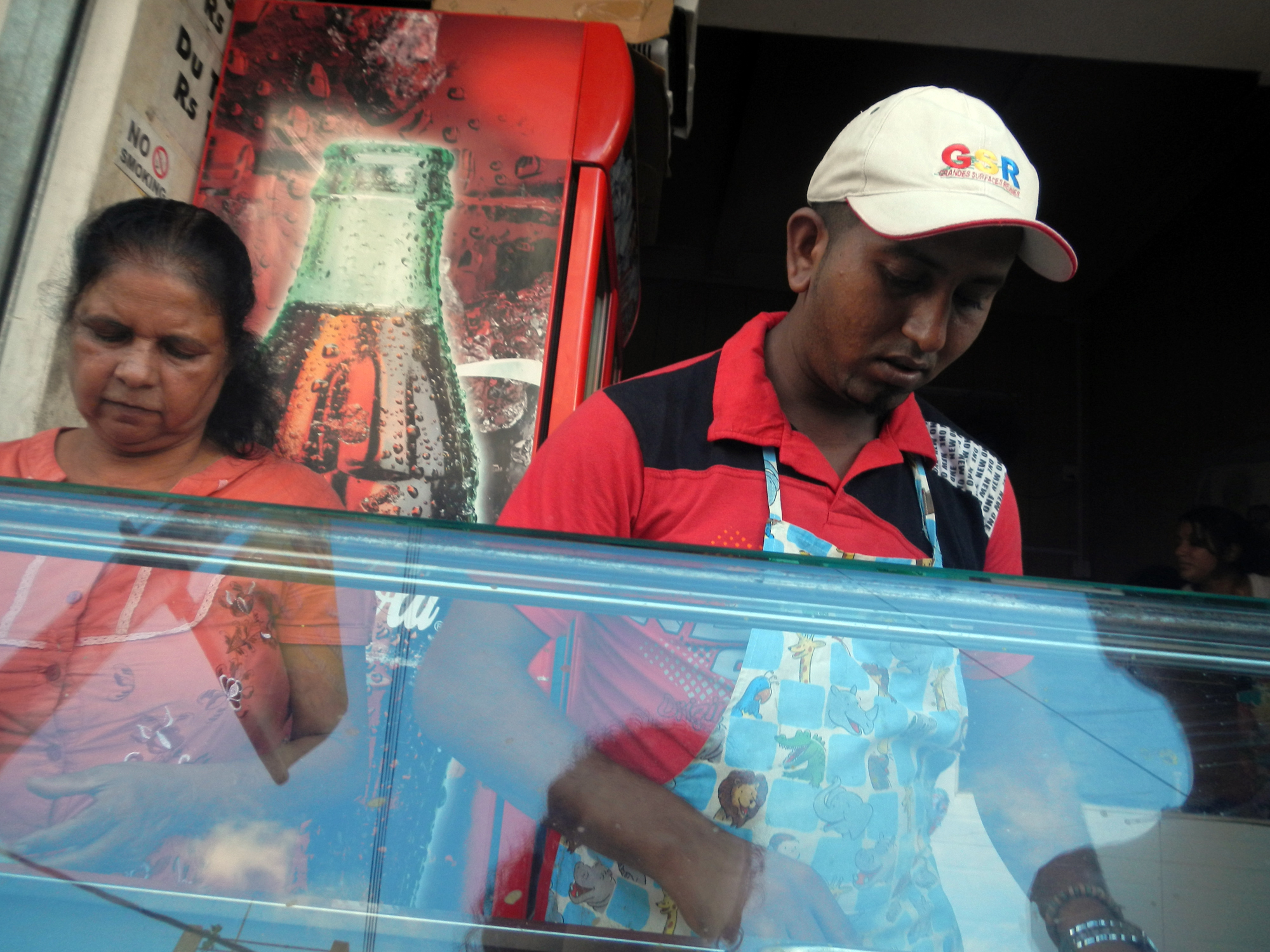

We grabbed a whole lot of fruit (apples, peaches, plums) as well as salt / pepper covered star fruit. This was so good. I saw some ripened starfruits on some trees in the town and in people’s backyards. Lucky.
Mauritius seems like a really interesting mix of Indian, Asian, African, and French / Caucasian. It seems quite touristy, like a resort town. I still do not know much about it, but I had a great few hours.
On the way back to the ship, we stopped at the “duty free center” thinking that hopefully we’d be able to grab some last minute alcohol and use up our Mauritius rupees, but instead, it was an extremely fancy, expensive shop selling rugs, precious stone jewelry, tapestries, and cashmere scarves for thousands of Euros. One of the sales guys was both looking at me questioningly – sweaty all over, mosquito-bitten, and bloody shoulder from brush scratches – yet he still kept persisting “don’t you want to try on some jewelry?”. As if I was ready to spend 10K Euros on some precious stone adornments.
Here is the hill we just ran up, and here are some guys fishing right at the drainage. I think.
We walked back to the ship, got into a slight encounter with a drunk guy right outside the port, walked through the restricted gates, waited online with the students to get on board. People were worried because, as the line was so long but the 6 o’clock deadline was approaching, they might both arrive late on board and get dock time, and miss the burgers being served on the 7th deck BBQ that ended at 6PM. It’s a nice ploy to get students on board by the deadline. Apparently, so many students returned to the ship drunk that they were overflowing the drunk tank (with 26 patients!).
In the evening, we had a Town Hall meeting, and most significantly, introduced many new folks:Julie: a global traveller, waiting to hear about being a fulbright scholar
Kamron: adventurer, charity, former VC
Reyan: IP lawyer
Caroline: from nike foundation; branding, GM , lived / worked in europe , s. america , canada, sailing enthusiast
Sean – creative director microsoft
Debrief about the 1 hour “deep dive” sessions with the mentors and the individual companies: people generally like the 1 hour sessions with the entrepreneurs. Colman mentioned that the guys who showed up with something on paper were able to get far help, so do your homework. So we will continue to work in these 1 hour sessions as they are: intense, get everyone together, effective, and allow for good feedback. Perhaps 90 minutes will be ideal.
crankshaft music
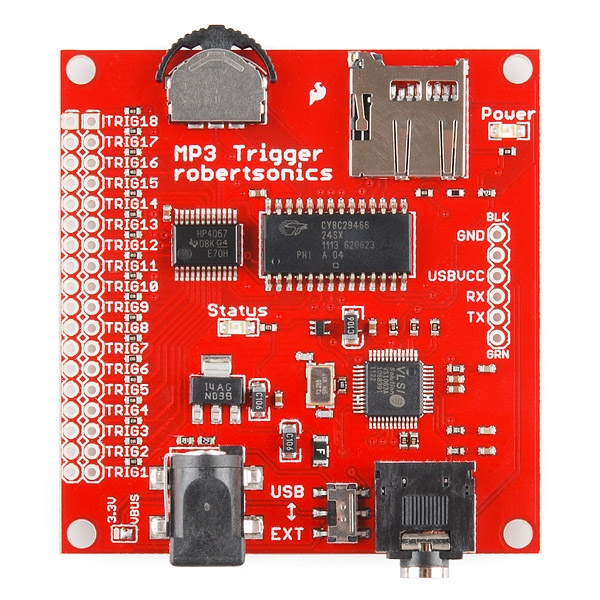 things i’m learning from the mp3 trigger that i forgot:
things i’m learning from the mp3 trigger that i forgot:
>>power it using usb or 5V? extension
>>Status light:
1 long blink – No formatted microSD media found.
1 long blink, followed by 1 short blink – microSD media found, no MP3 files located.
Constant short blinks – Hardware problem with MP3 Decoder.
3 short blinks – microSD media found, at least 1 MP3 file located.
NAMING
–>Track names have to be as followed:
TRACK001.MP3
TRACK002.MP3
and so on
LIMITATIONS TO THE MP3 FORMAT?
—>IT Supports a bit rate of up to 192 kB
Initially I think my problem is the SD card, if I remember correctly:
What I’m trying to set up now :
–>spin an crank shaft that is somehow attached to an encoder, when the encoder recognizes motion, trigger a song. To trigger a song, this should happen when jumping one of the “mp3 tracks” to ground on the mp3 trigger, ie writing low to one pin that is connected to the mp3 trigger track pins.
using any encoder code: http://bildr.org/2012/08/rotary-encoder-arduino/
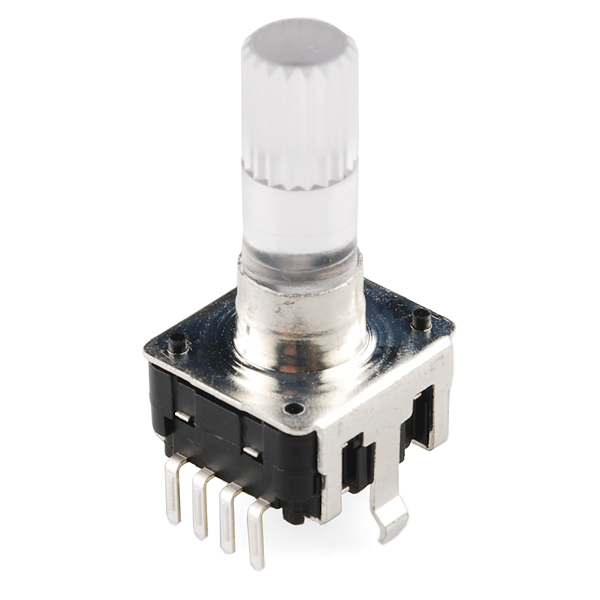
and this schematic:http://www.hobbytronics.co.uk/arduino-tutorial6-rotary-encoder
— > Step 1. Only if there is a change in state of encoder position, write LOW to the pin.
Let’s start with pin 13, just to see if I can have this happen with the light.
AND , once the state changing stops, write HIGH (ie don’t play the song)
Simply, this takes an arduino input (ie the encoder) but then outputs a DIGITAL signal to trigger a track. So here, D13 triggers a track to play when written LOW.
The outer strip on the mp3 trigger pins are GND; the inner pins are what D13 should be connected to;
———–
After a while this proved not to be so simple:
https://forum.sparkfun.com/viewtopic.php?f=14&t=32647#p145292
https://forum.sparkfun.com/viewtopic.php?f=14&t=34282#p152976
things learned: use a pull up resistor for triggering clean, LOW output. ; if any of the pins are “pulled high” none of the pins will work…
eventual code:
Protei at Ars Electronica
see more here :
http://www.flickr.com/photos/52250666@N02/sets/72157631284190044/
http://prix2012.aec.at/prixwinner/6700/
Documentation of Sneel_002
Soon I will make a how-to guide for Sneel_002 on instructables.com, as I did for the first version of Sneel, (i’m working on that) but until then…
Sneel swam in central park
The hardware:
Like a real snakes vertebrates:
I used Arduino Mega with multiple servos attached, using multiple 6V NiMh battery packs, placed along the body, with an xbee mounted on top to control three parameters of wave behavior: period, wavelength, and amplitude.
I taped the bottom of the Arduino so nothing shorted:
First I stuffed the arduino + xbee into a waterproof sac:
Then I decided that was overkill so I just stuffed everything into the tube (as I had sealed each servo motor with epoxy and had a water tight seal on the tube top and bottom)
See wires etc. stuffed in the tube:
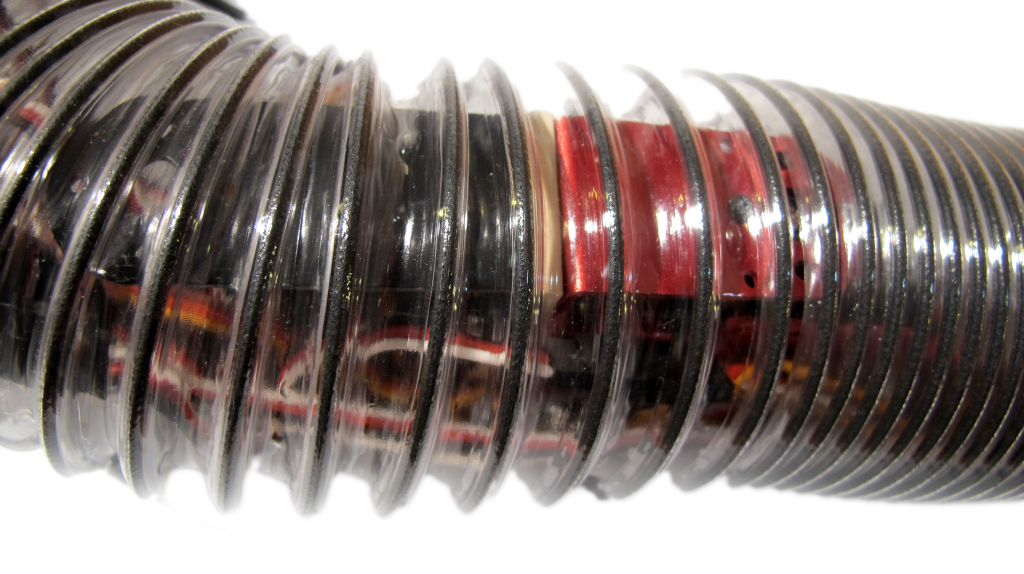
The Software:
A diagram of the control firmware and the relationship between the classes:
I wrote an Arduino library called ServoWave to control period, amplitude and wavelength of the oscillation for Sneel’s swimming behavior.
See how each servo motor oscillates – in the following graph, I print out values of each servo as each motor rotates in a sine wave slightly out of phase from each other. The x axis is time and the y axis is angle, and each colored line is a different motor.
After getting everything packed up in the tube, I tested Sneel_002 on the floor of ITP.
He seemed sort of real:
Sneel in the wild:
Well, Sneel_002 swam pretty well, sort of like a real snake, but there’s much work to be done…
Model shot:
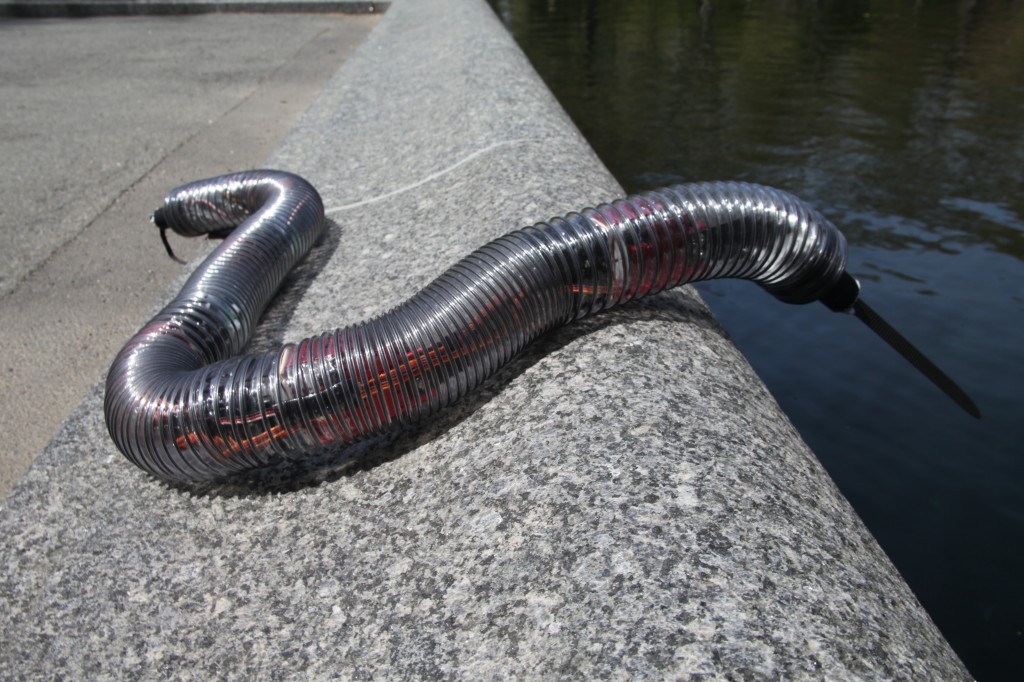
Progress ON Snake
a quick start:
questions for consideration:
snake or eel( float or sink)
hydraulic pump?
propeller for forward propagation?
behavioral test – think better about mechanics of aquatic locomotion
______________________________________________________
I got the snake into the tube.

Here are some images of the progress:

I think I’ll bring the boat here:

______________________________________________________________________
my email to the p comp list:
It turns out something weird is happening with my batteries – I can run the lipo batteries I have with two DC motors, giving me a current draw of 1800 mAmps (around there anyway when I tested with the multimeter)m, at around 8 V .
When I try to power solely one servo, the voltage drops immediately to below 2 V. The batteries seem to be fully charged , as indicated by the charger I’m using and when I try to give them voltage from a power supply of 8.4 volts at 0.25 mAmps limit, the power supply shuts to 0 (I think this happens with LI ion batteries, a chip prevents over charging if using a regulated power supply…?)
Anyway, what can possibly be preventing me from running one servo with a current rating of 0.3 Amps peak , but I can run DC motors , with 1800 mAmp peak? ?
I can’t figure out what might be wrong – if the battery was damaged, I thought I’d not be able to use it for the DC motors, but since it works fine that way… what can be the problem?
OK another Totally Weird thing is happening:
when I try to test the amperage on one servo by plugging the multimeter in series between the battery +7.4 V and the servo + power , the servo DOES seem to move a bit (slower than when I use just a 6V non rechargeable battery).
When I but without the multimeter in series I get no motion (immediate voltage drop to 1.5 V from 7.4)
What/??
Also, the multimeter is reading 0 amps even when in series with the battery and Vin on the servo
SO I realized I can’t stack it… UGH. I dont understand why I can’t combine two LI ion batteries to make 7.4 V from 3.2 V. WHy?
And now I am using vivitar batteries from cameras, but my voltage regulator, which brings the voltage down to 5.8 V gets super hot. this scares me.
Also, the small servos get super hot. Especially the Emax MD (i’m also using Emax A ).
SO I think I’ll buy some larger servos now, from servocity , as well as perhaps a 6 V NImh battery. Ugh.
TO REMEMBER:
get bigger servos
get new battery
get charger
tighten screws
put more screws on black servos
put on loctite
test o rings
put dielectric / marine grease
seal with epoxy the rest of the large servos
get more vacuum tubing
figure out battery pack, arduino power, face, etc
glue rubber
pugs
screws
bellflower voltage logging solar panel
logging voltage here: http://www.levinegabriella.com/bellflower/bellflower_dataLog.txt
arduino code here:
https://github.com/gabriella/bellflower
php and more to come…
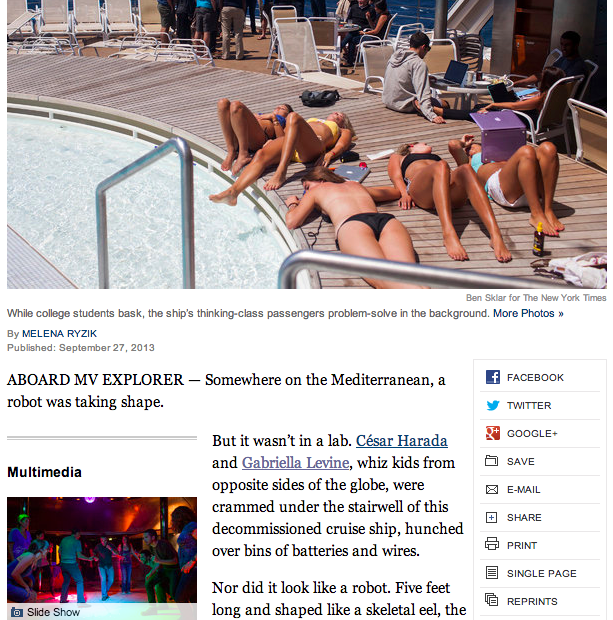
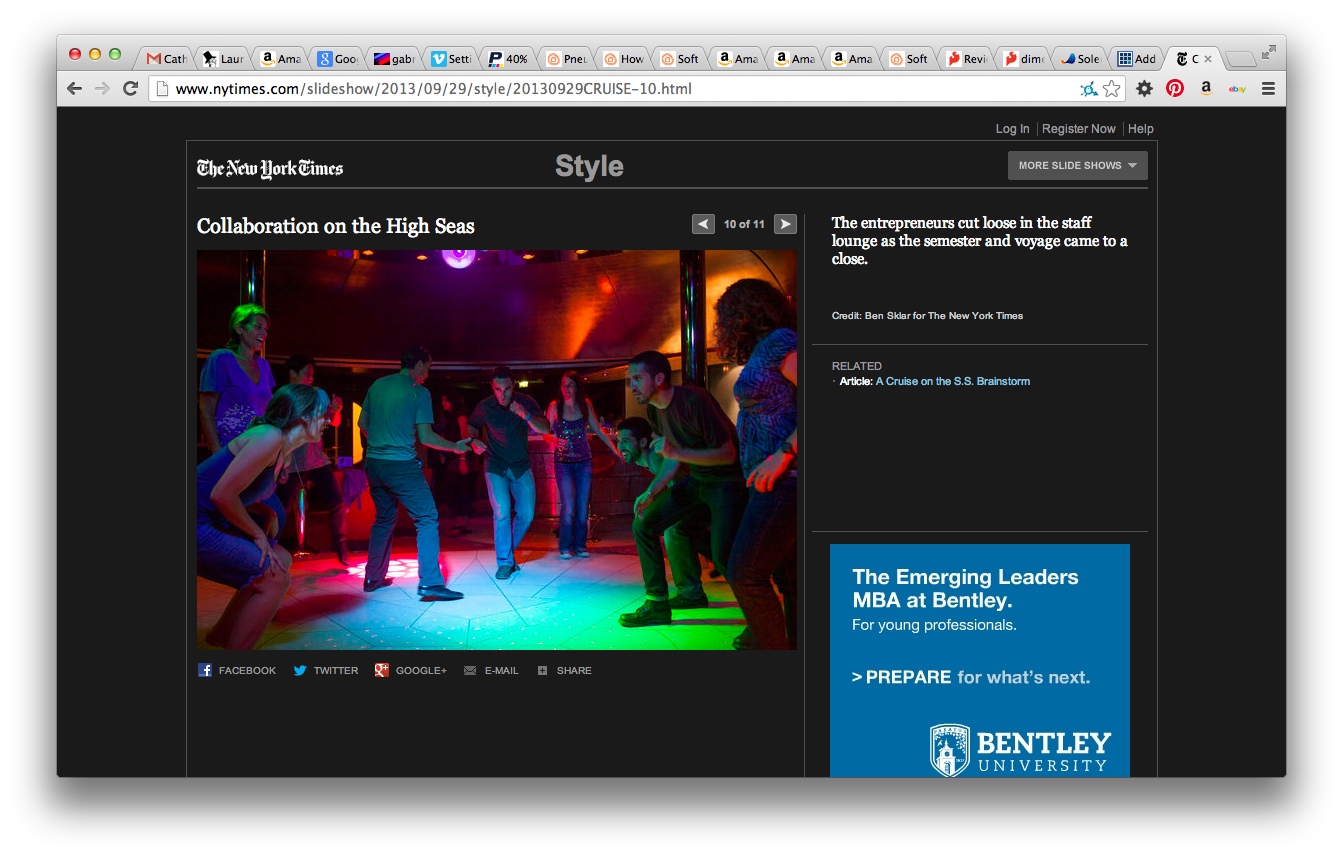
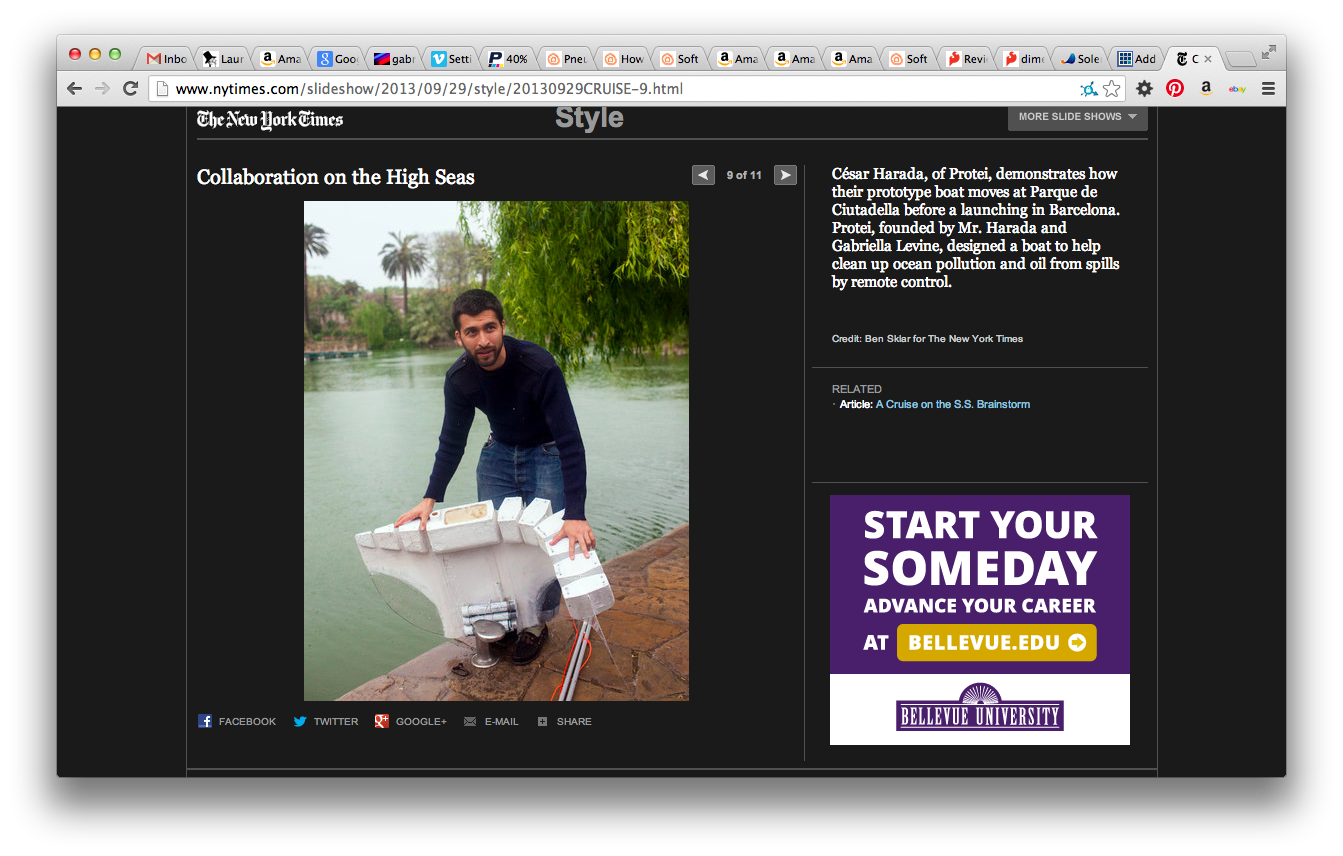
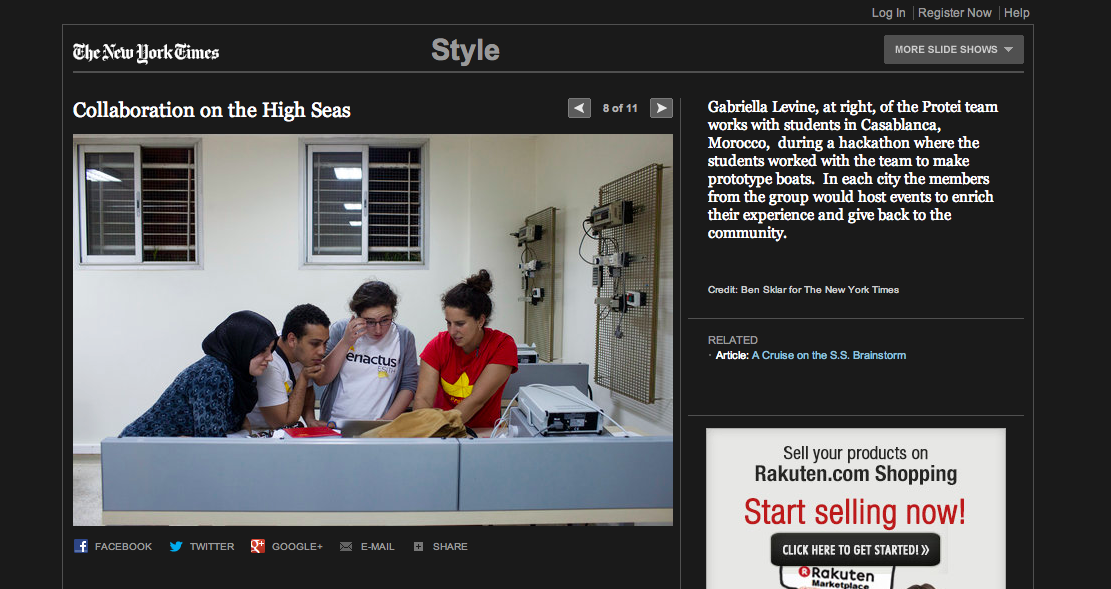
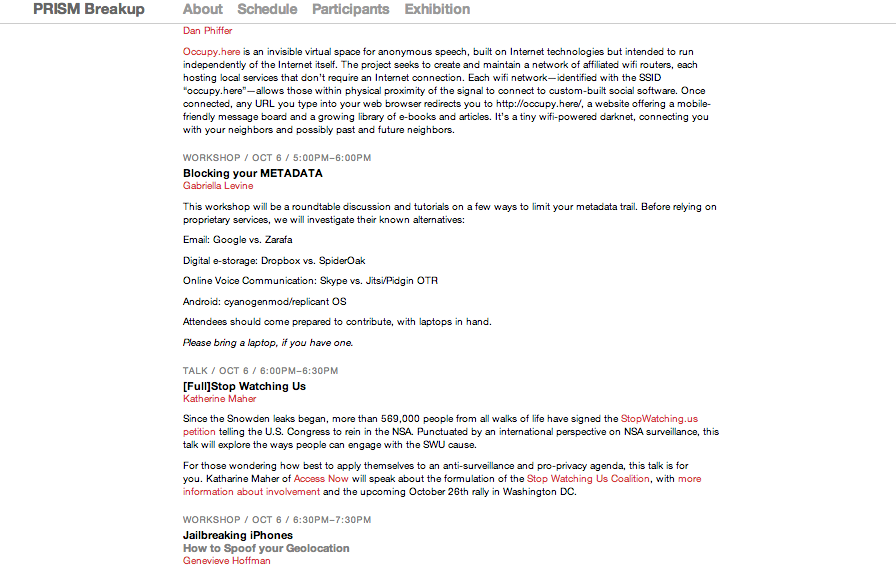
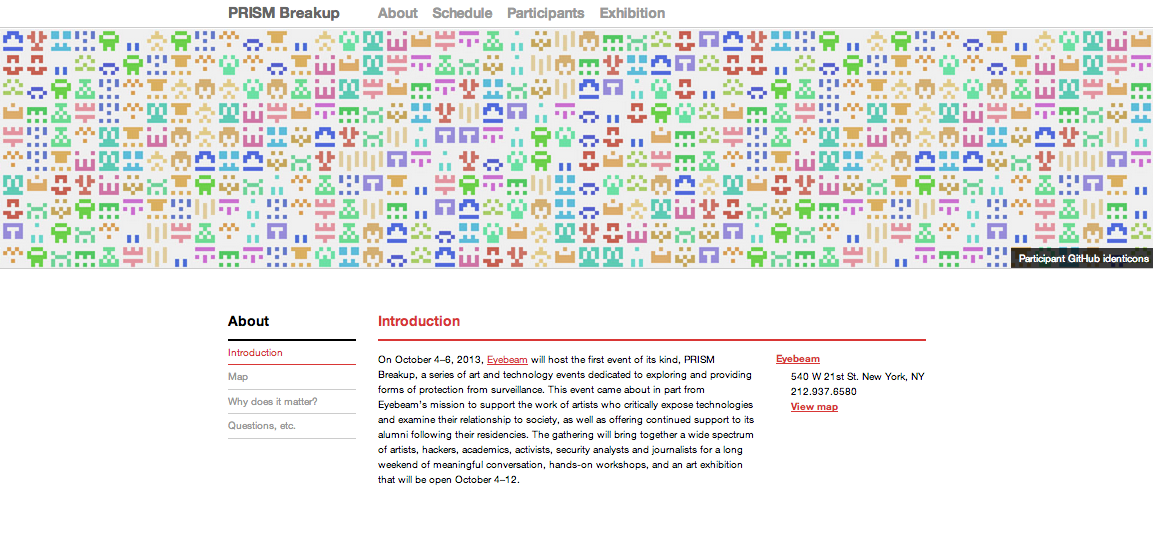
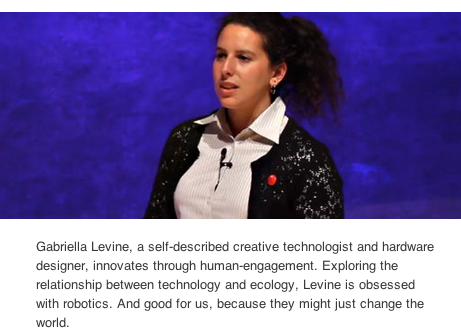


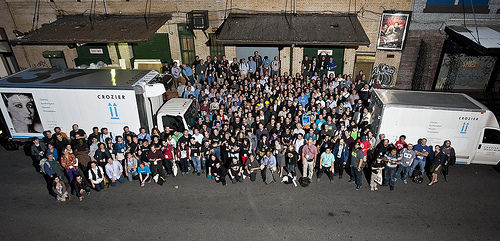


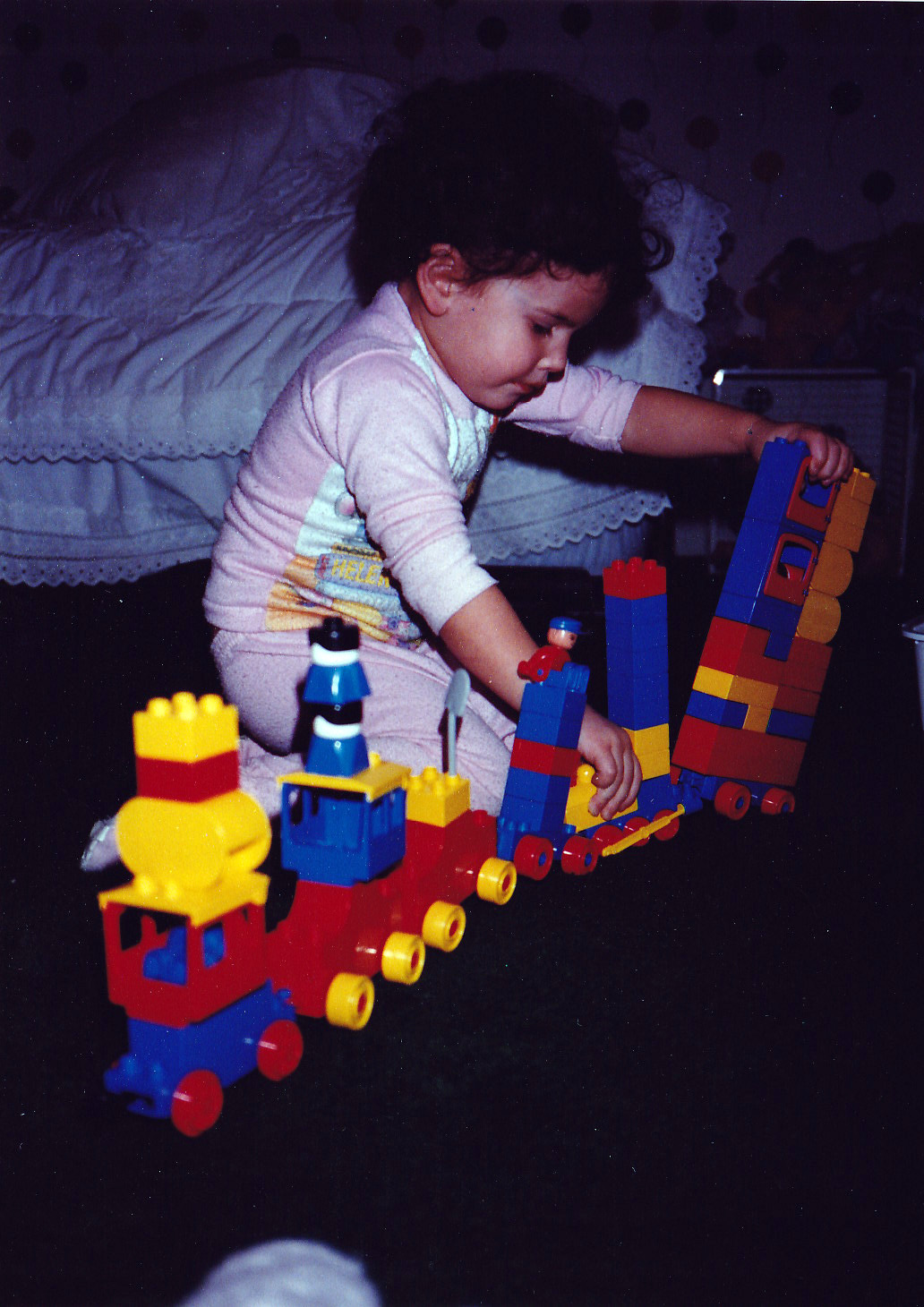


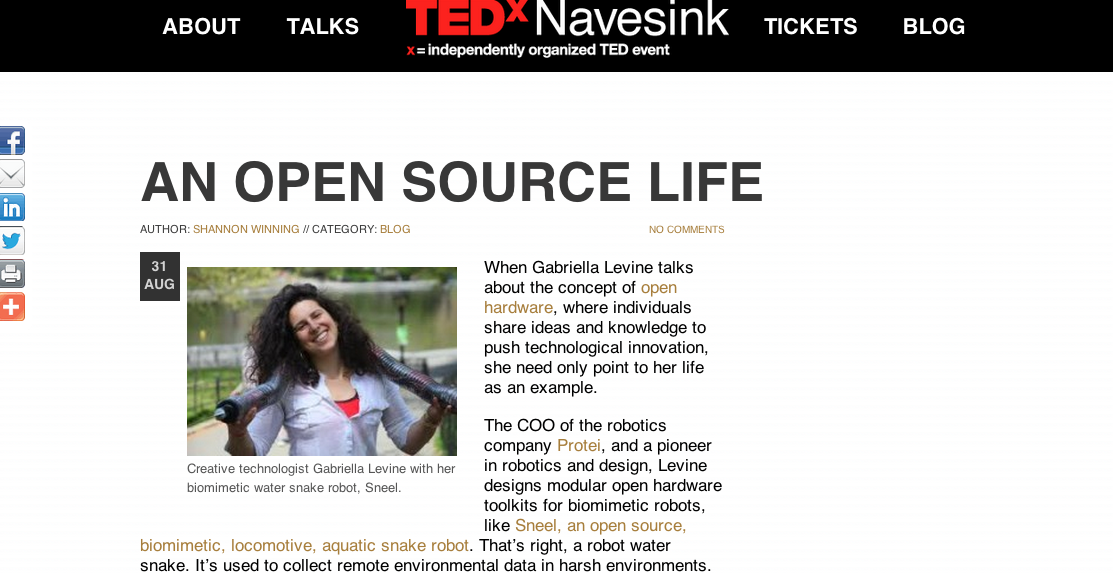
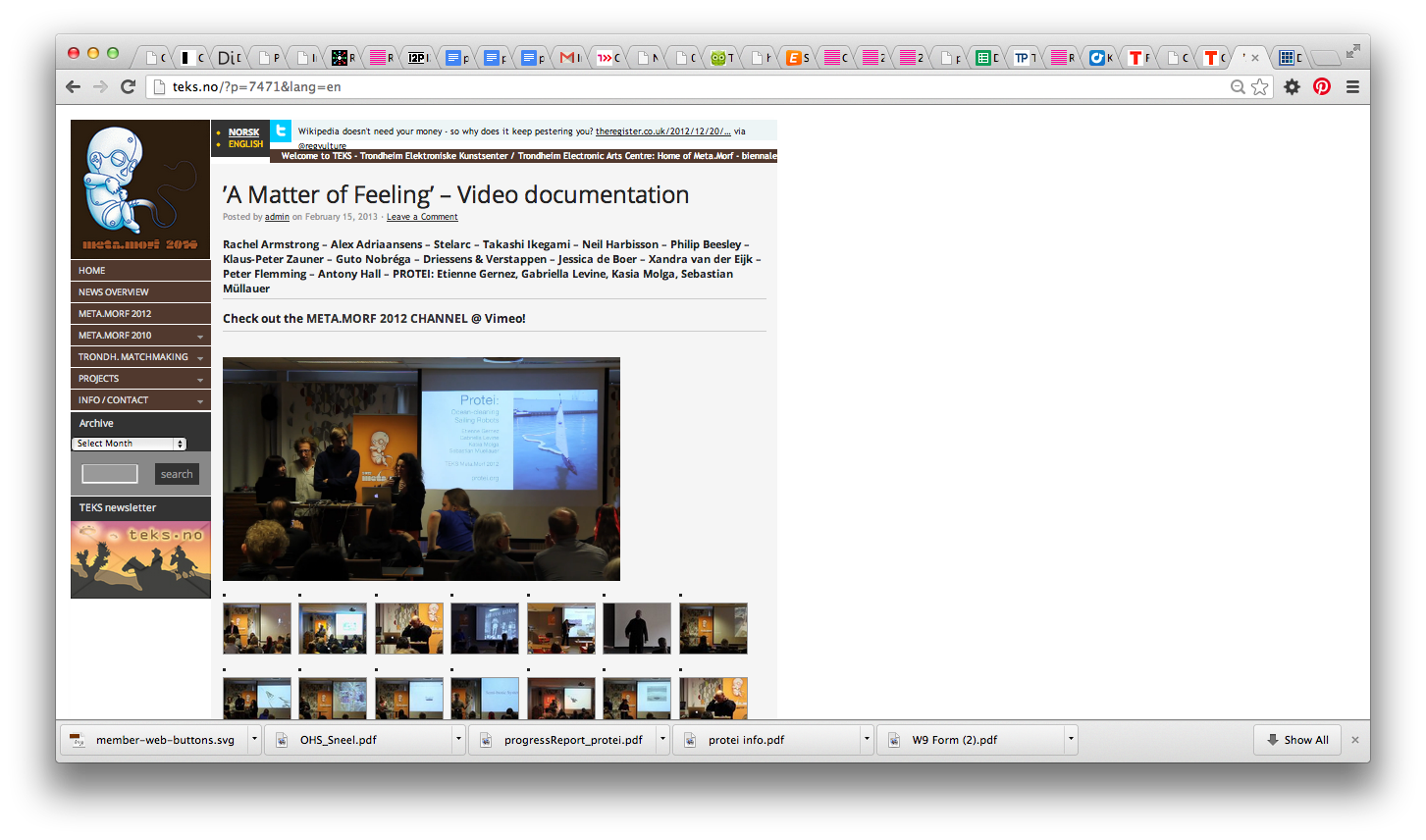

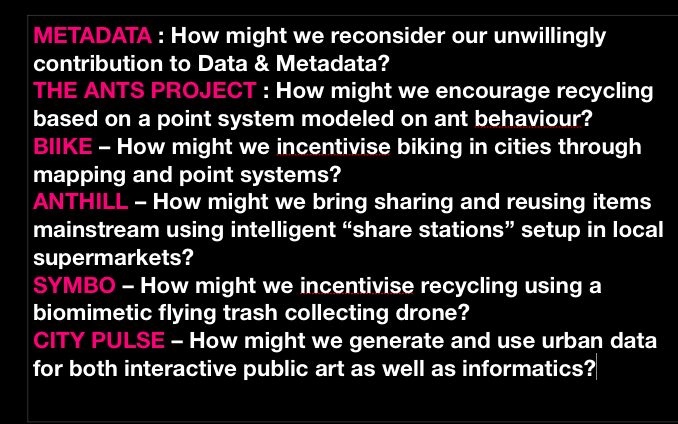
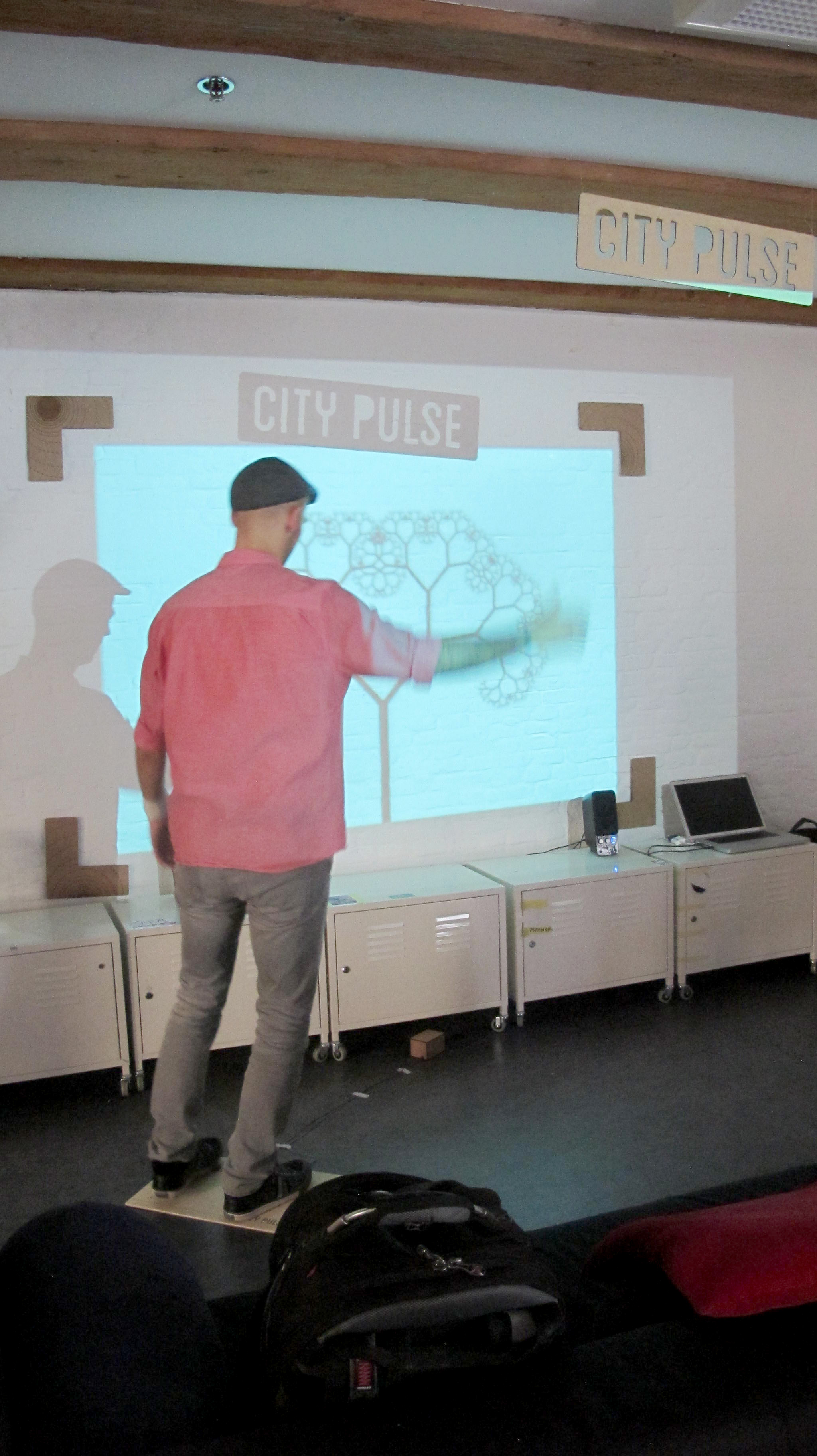
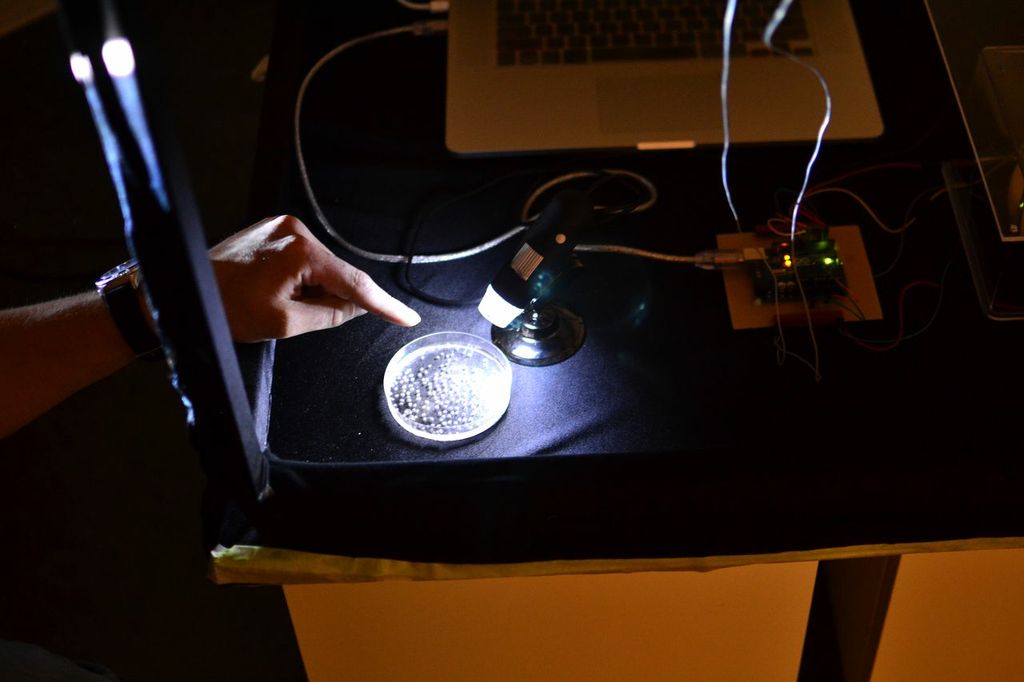
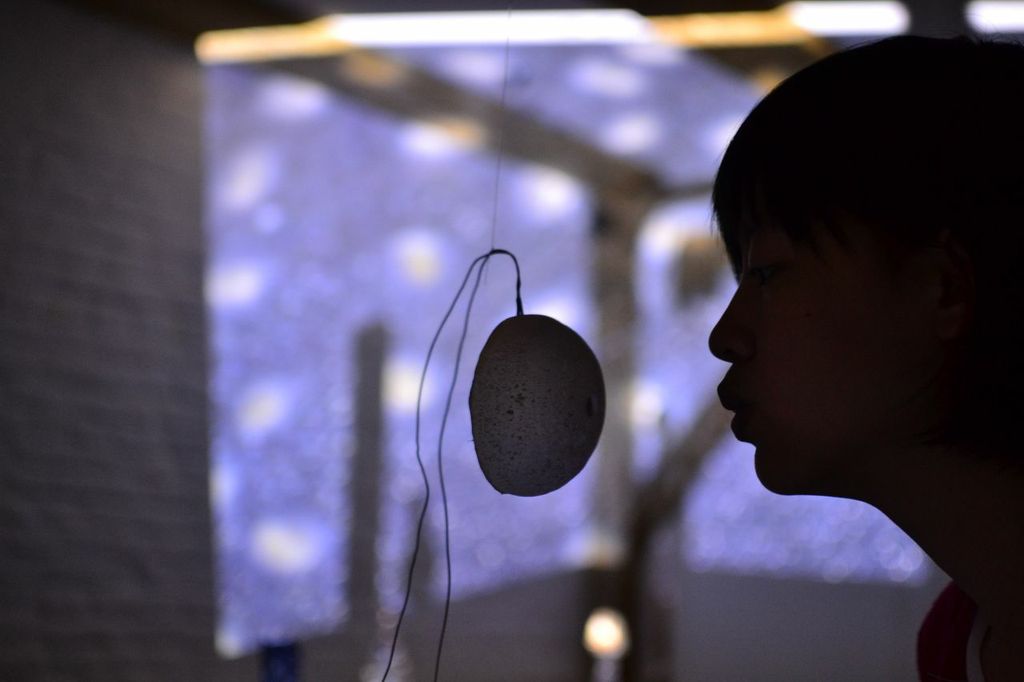
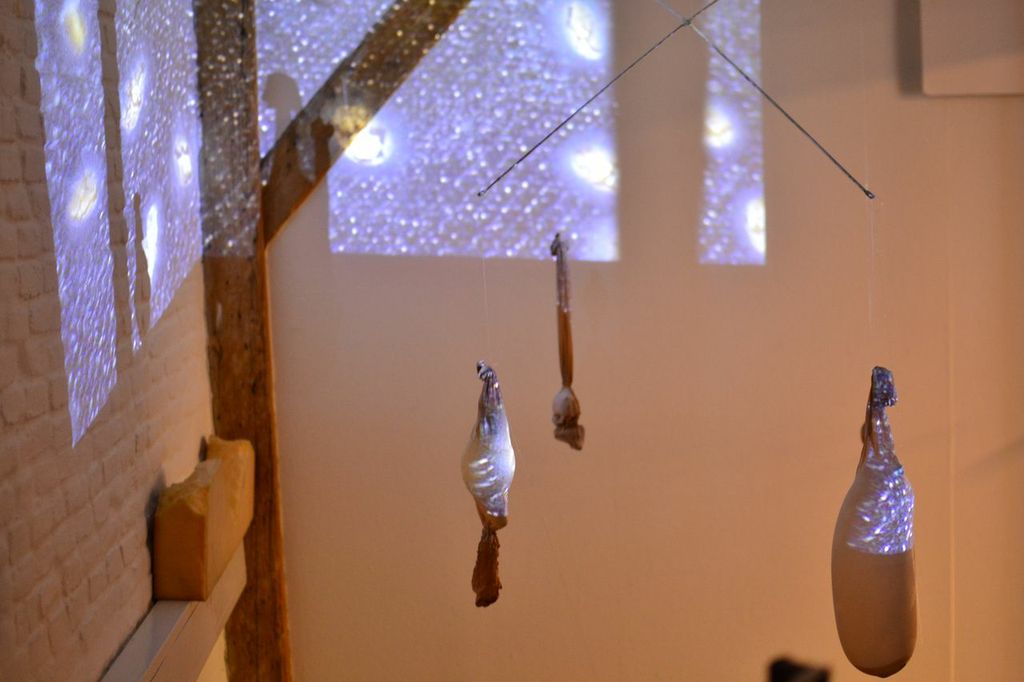
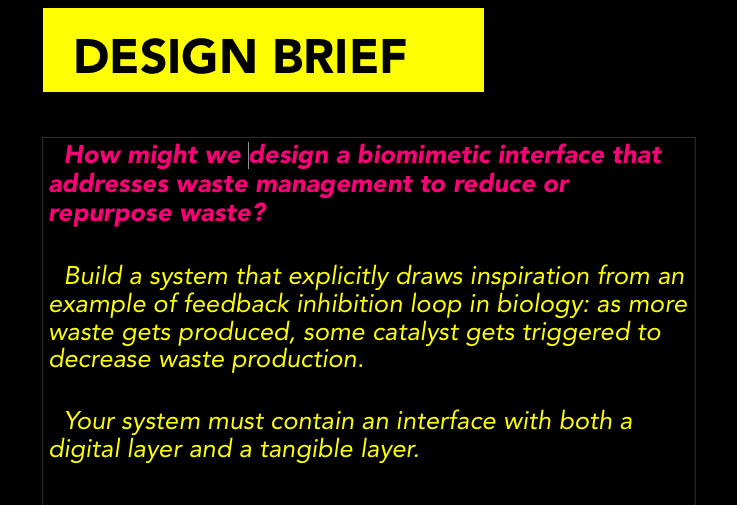
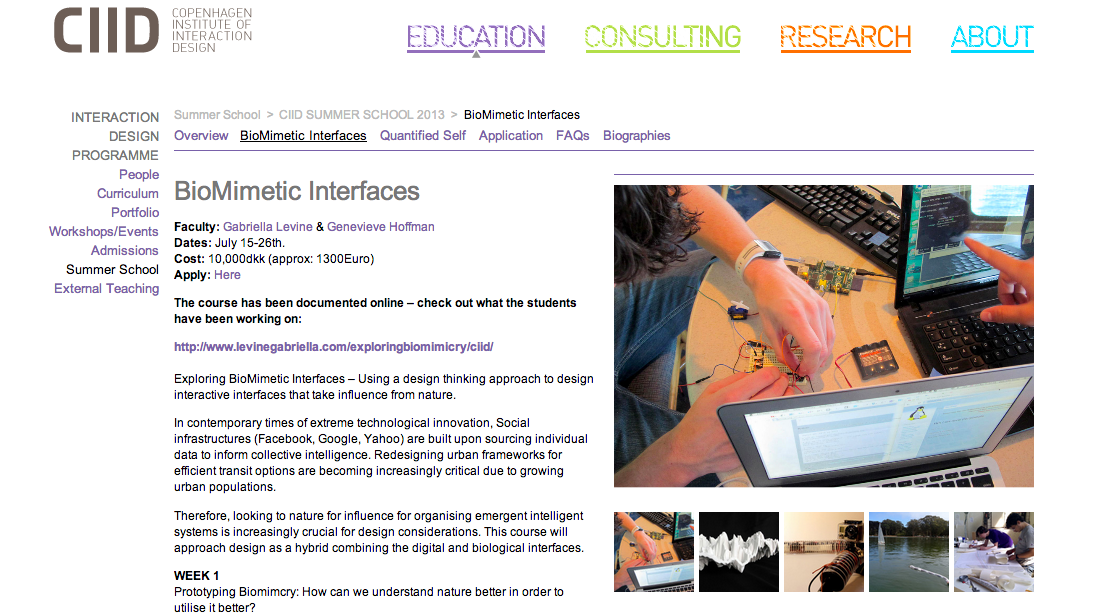
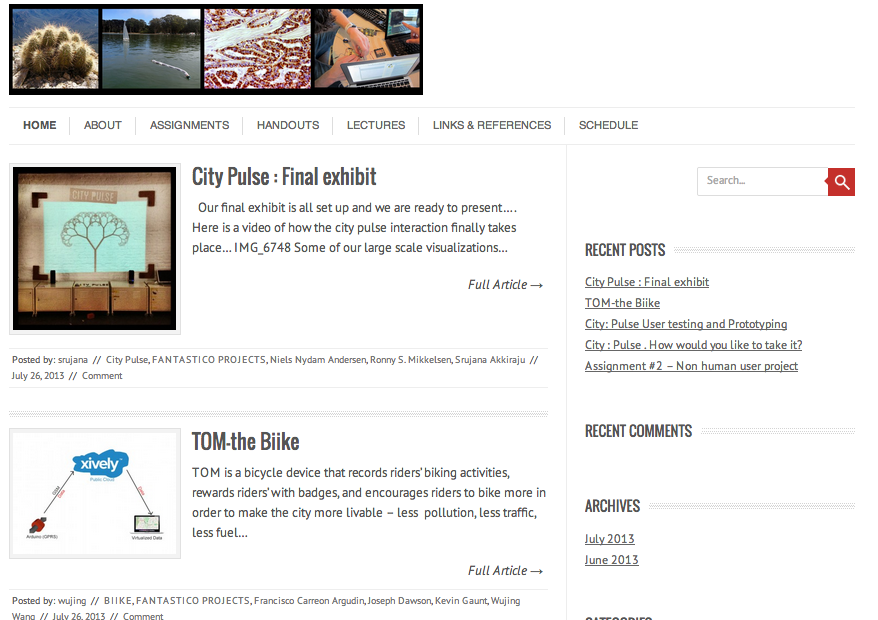
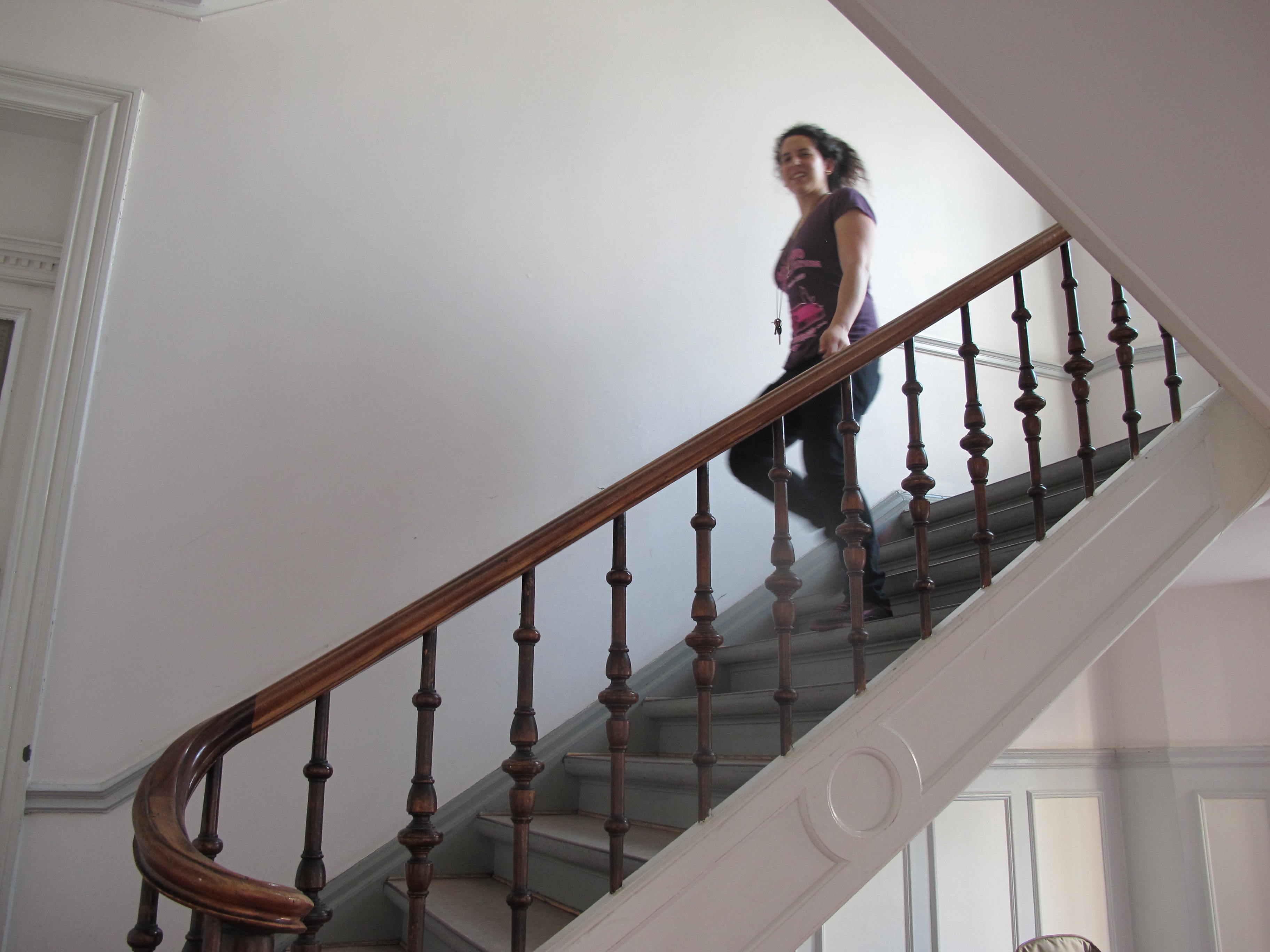
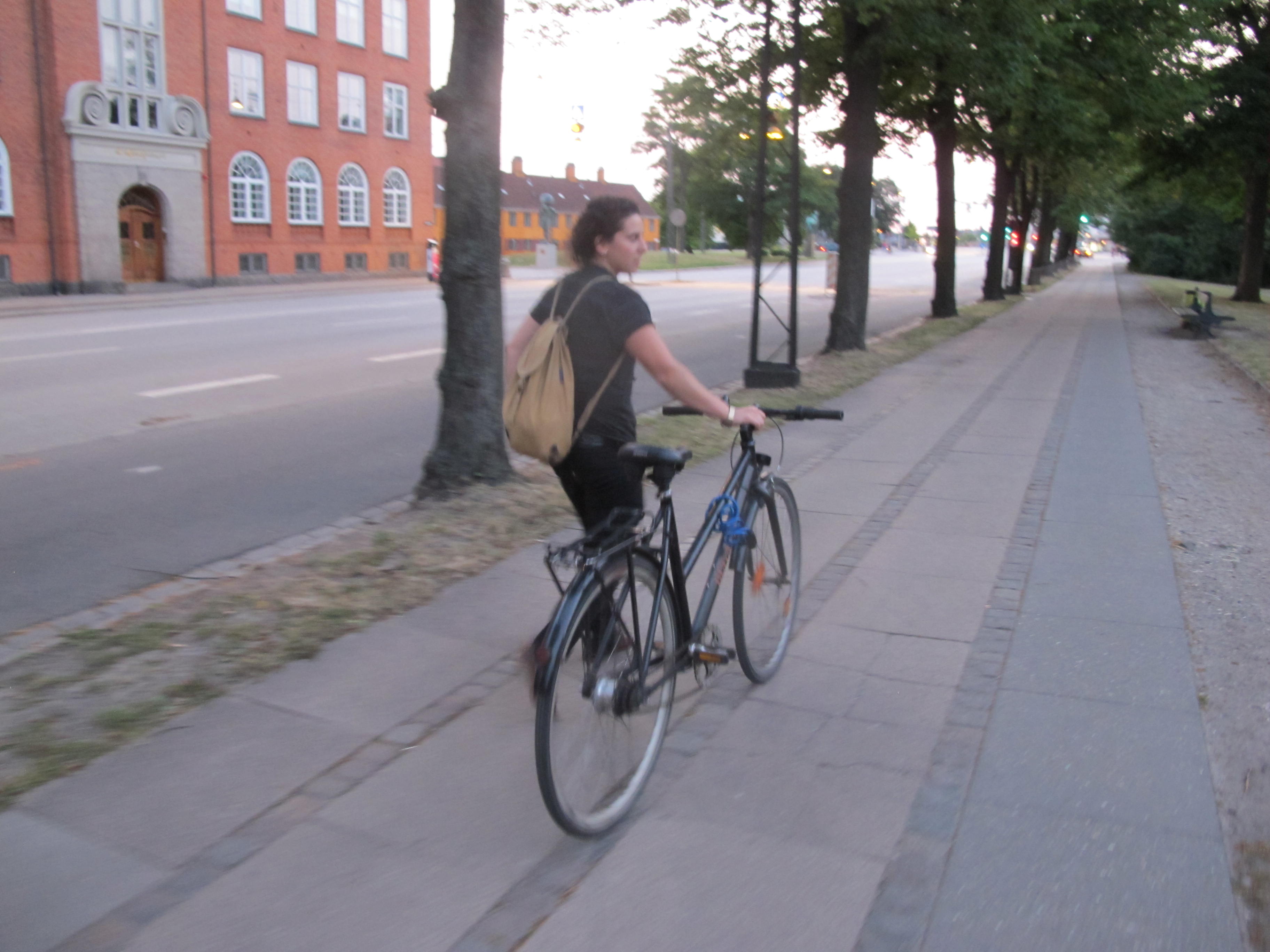
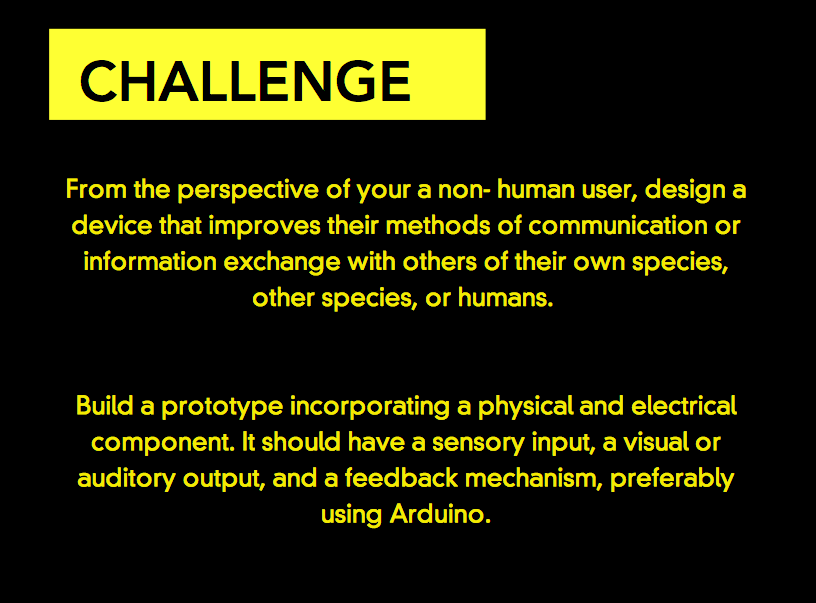
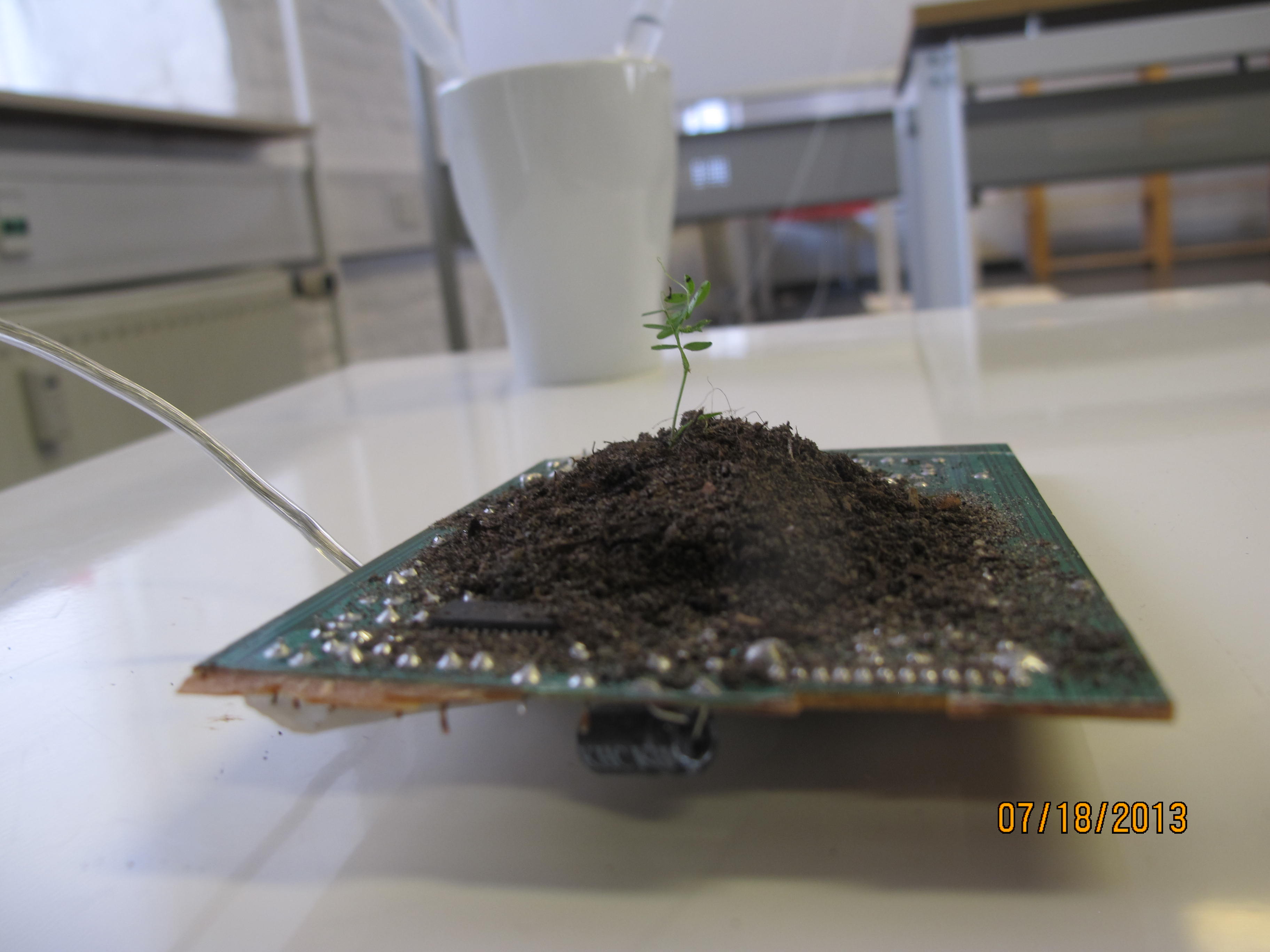


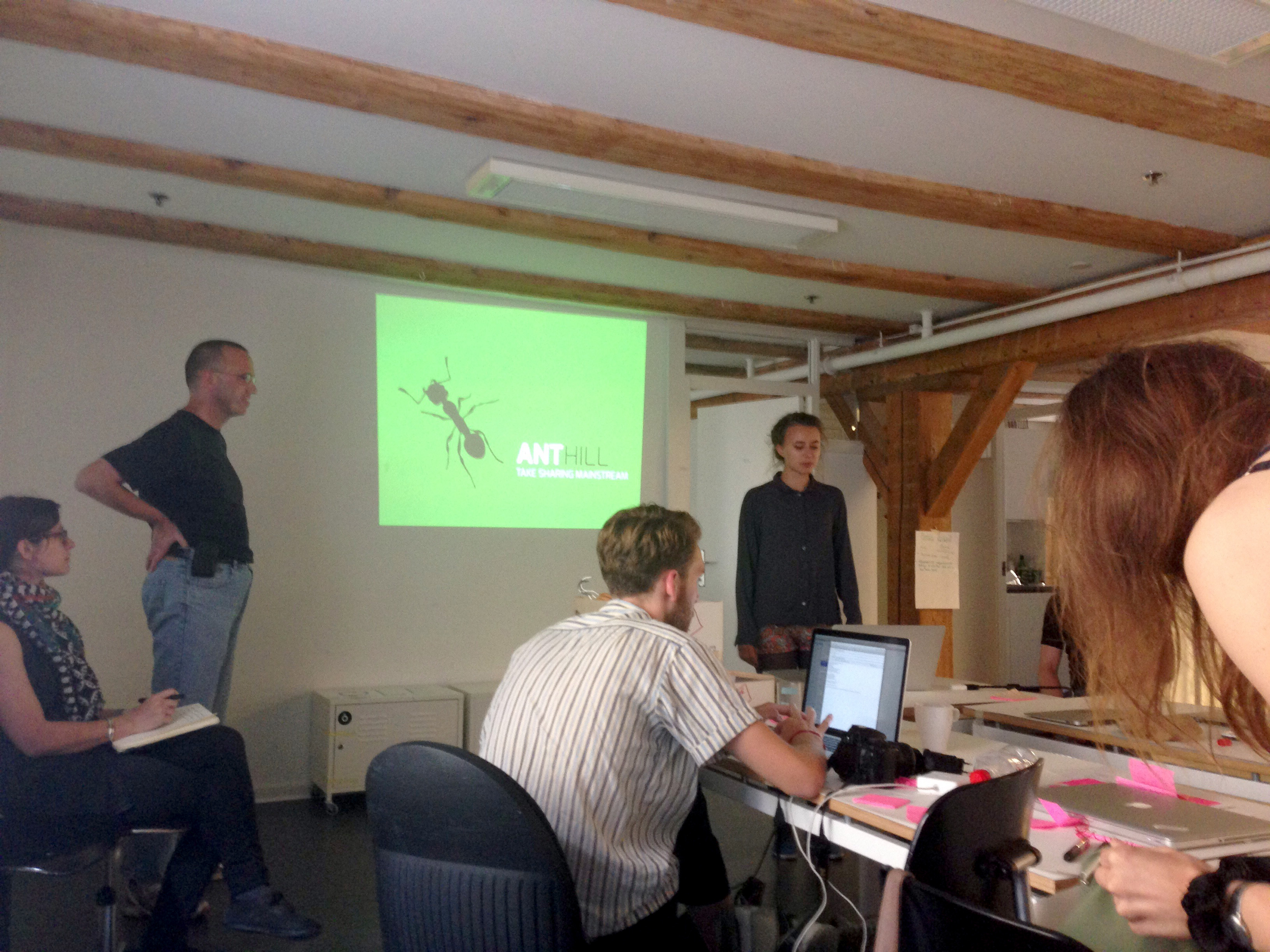
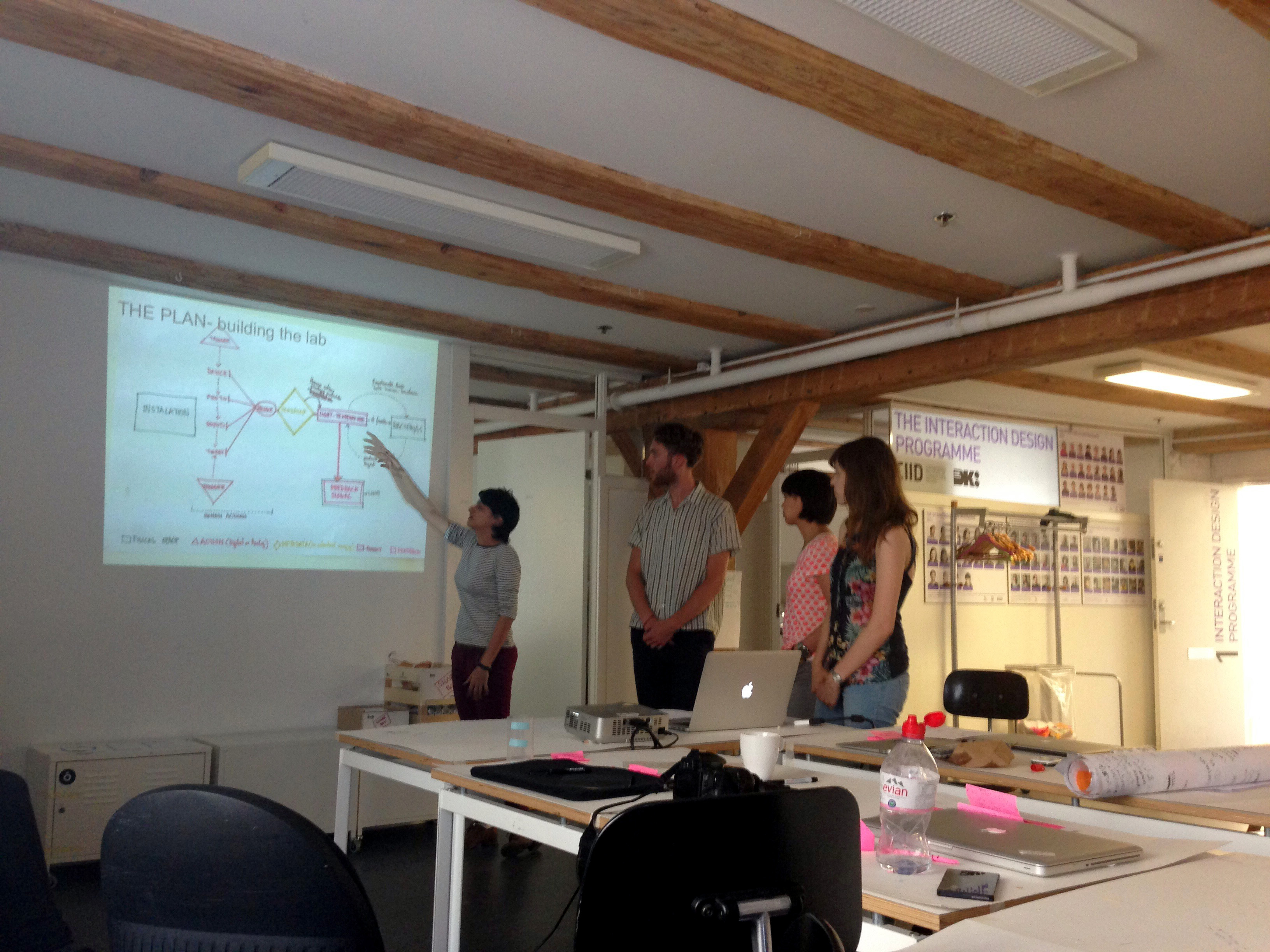
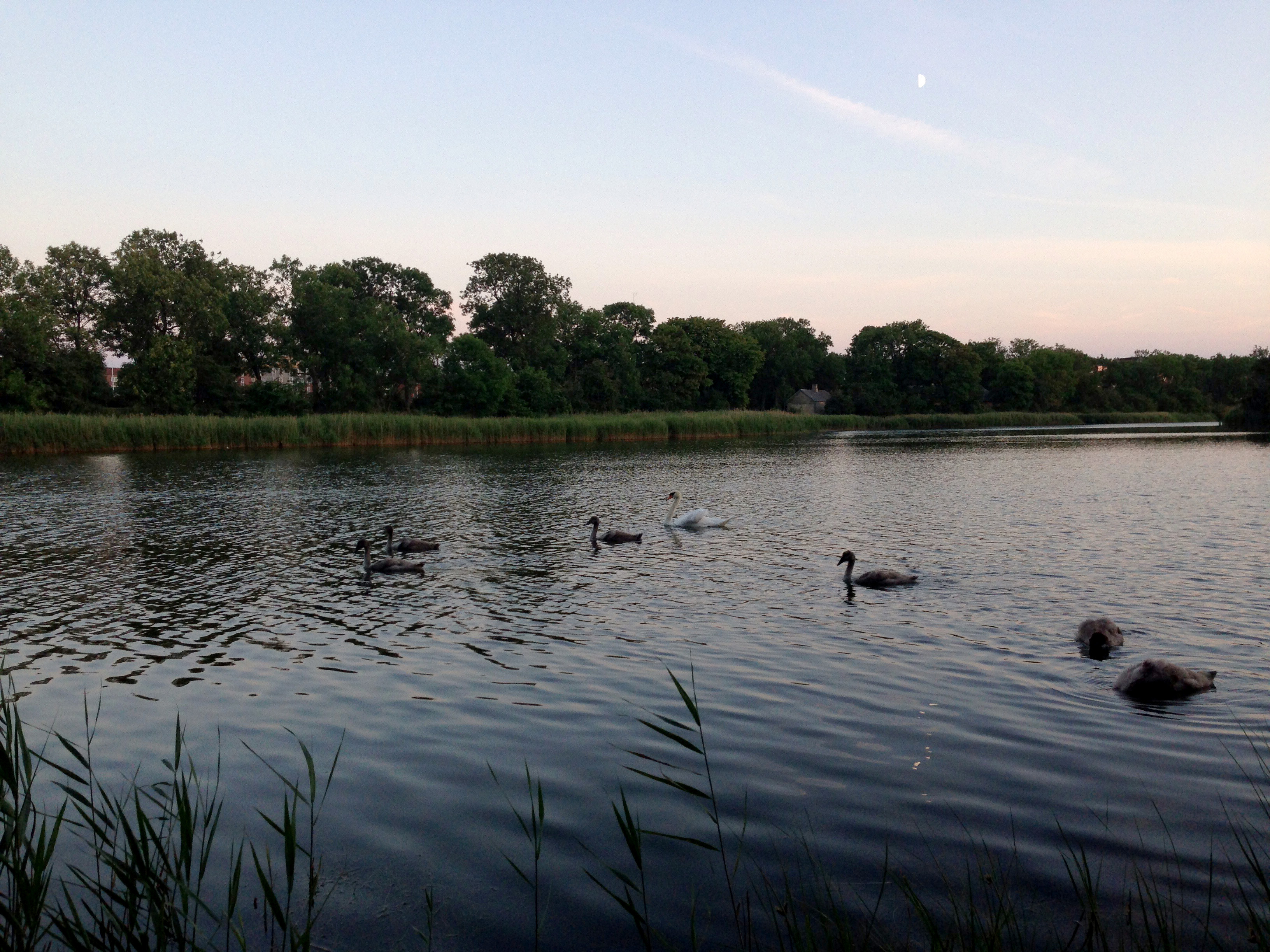

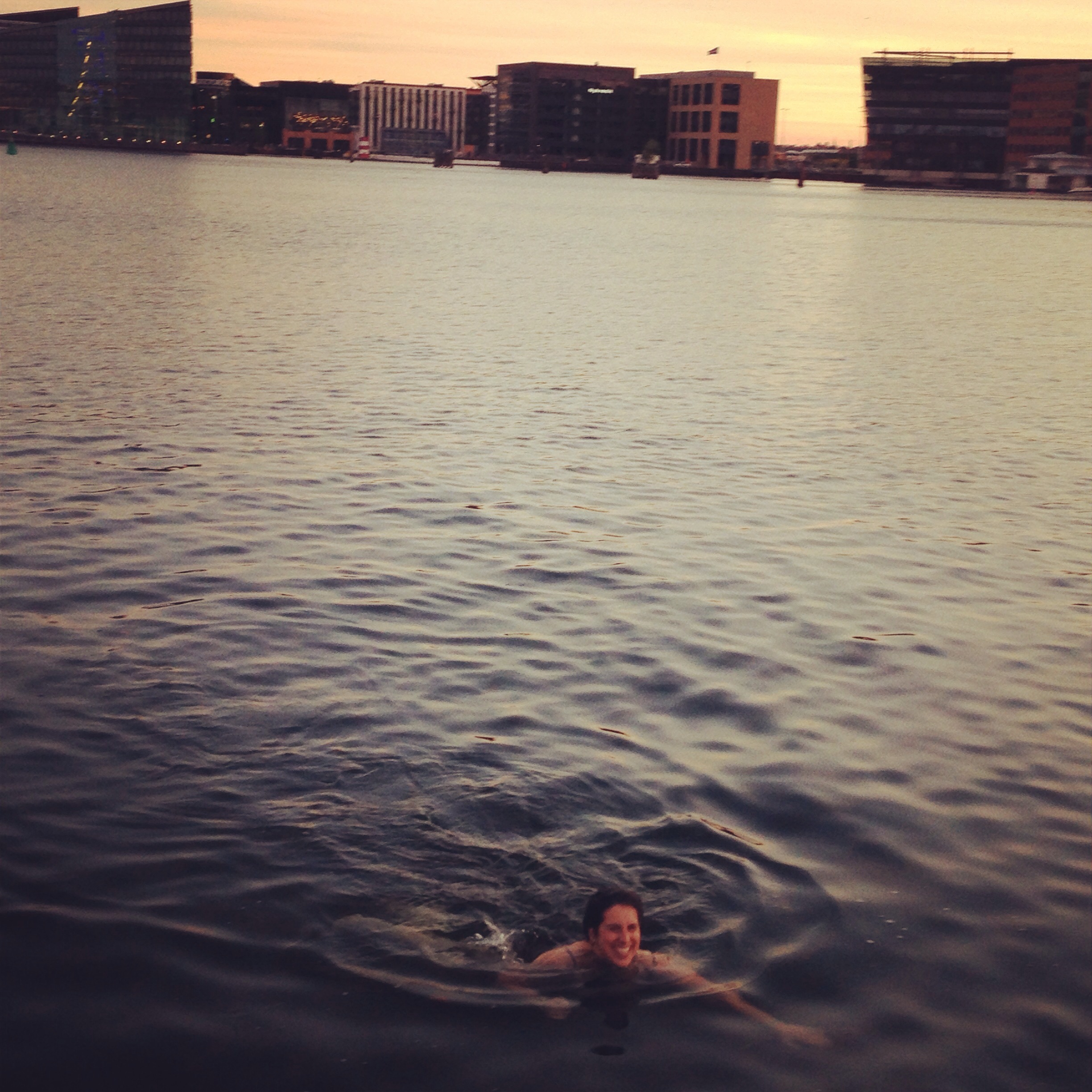
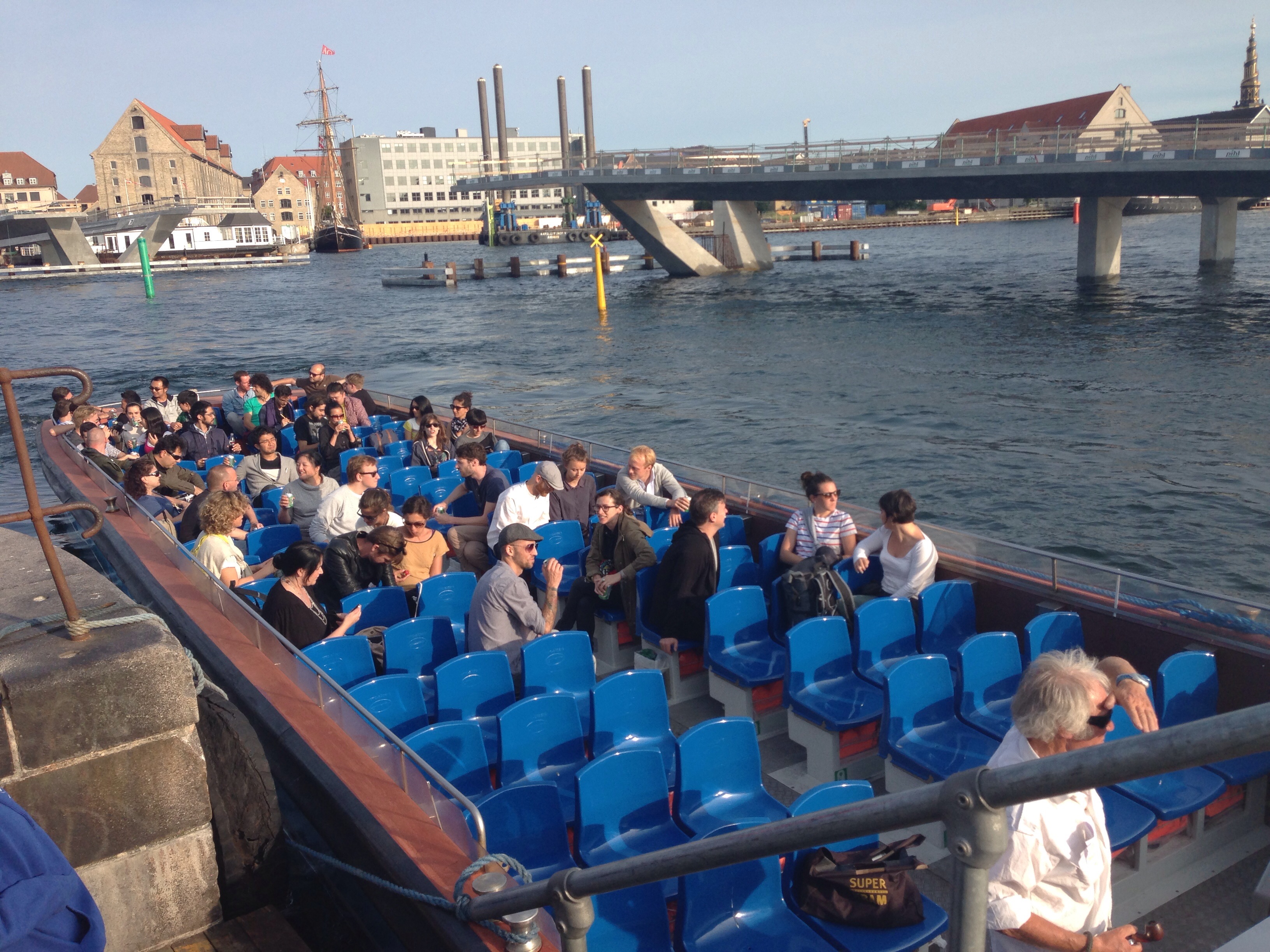

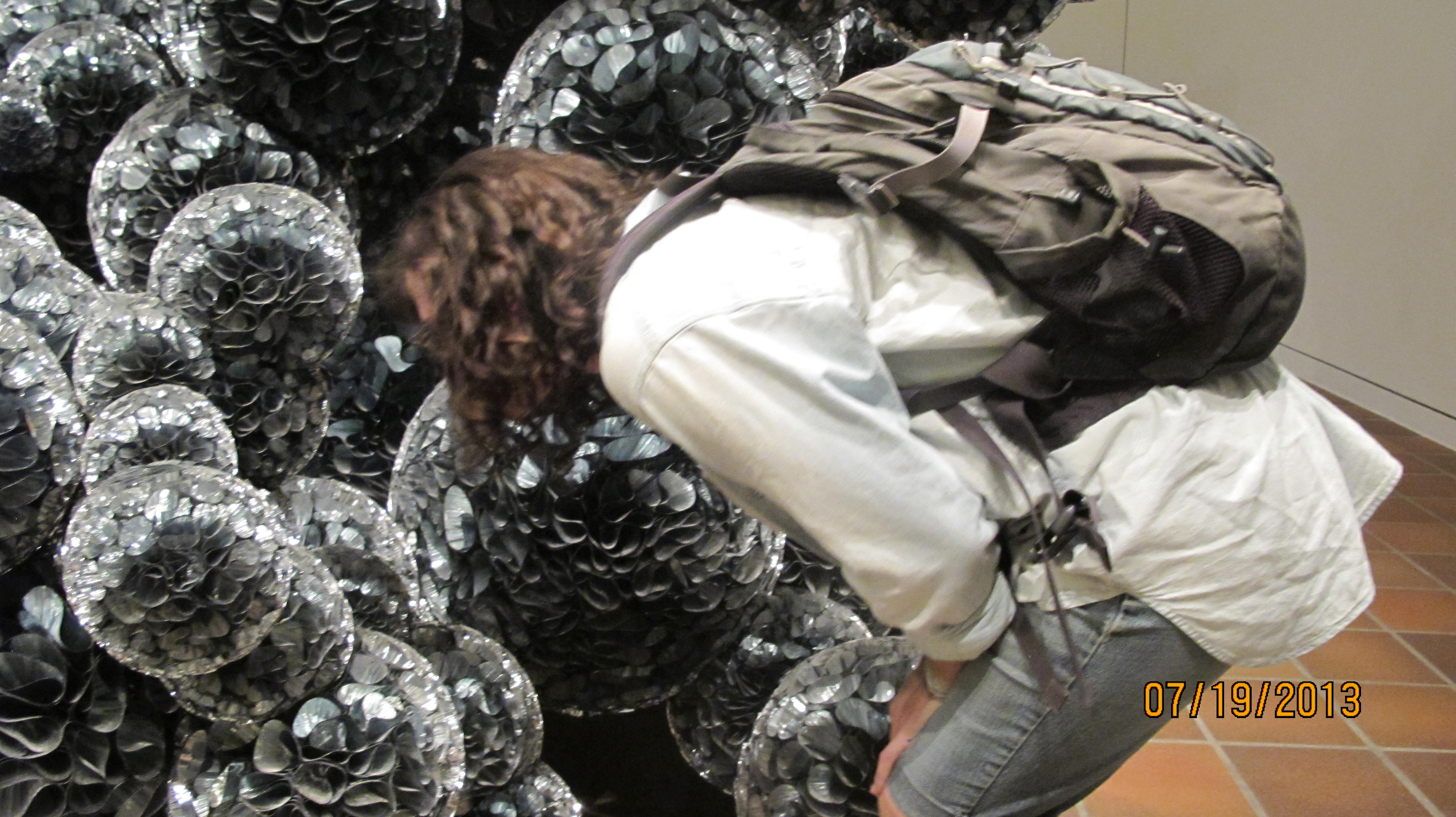

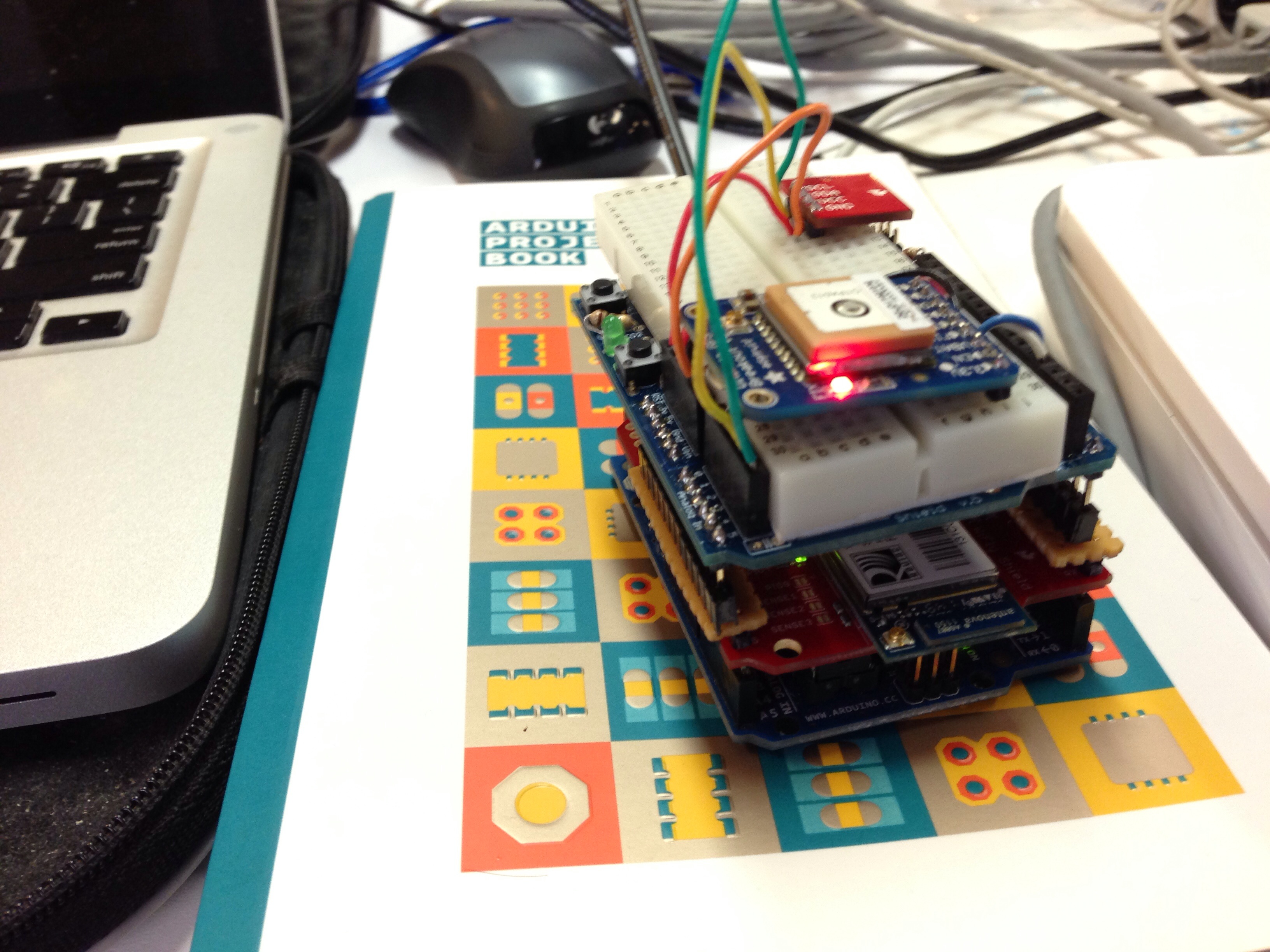
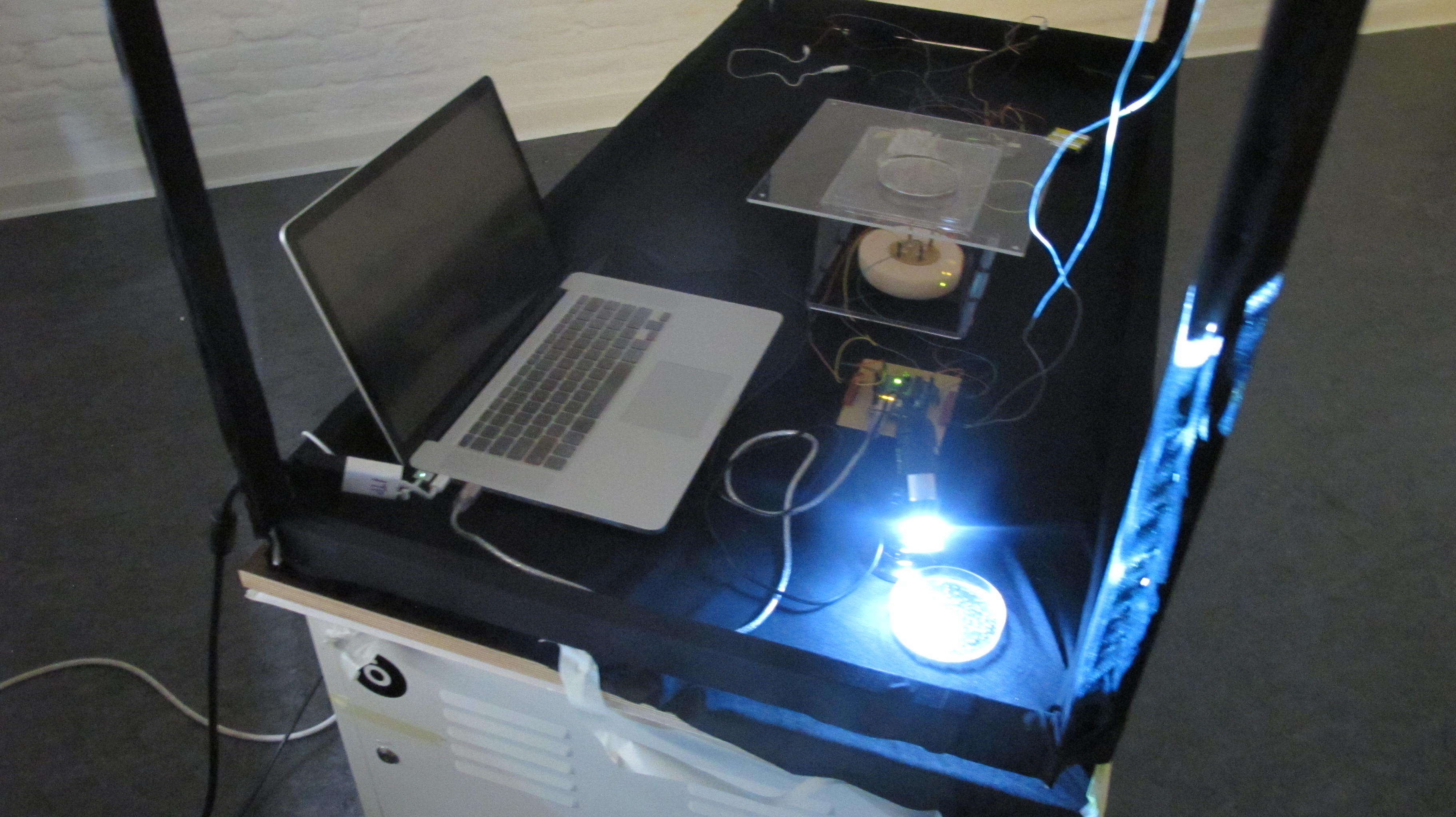


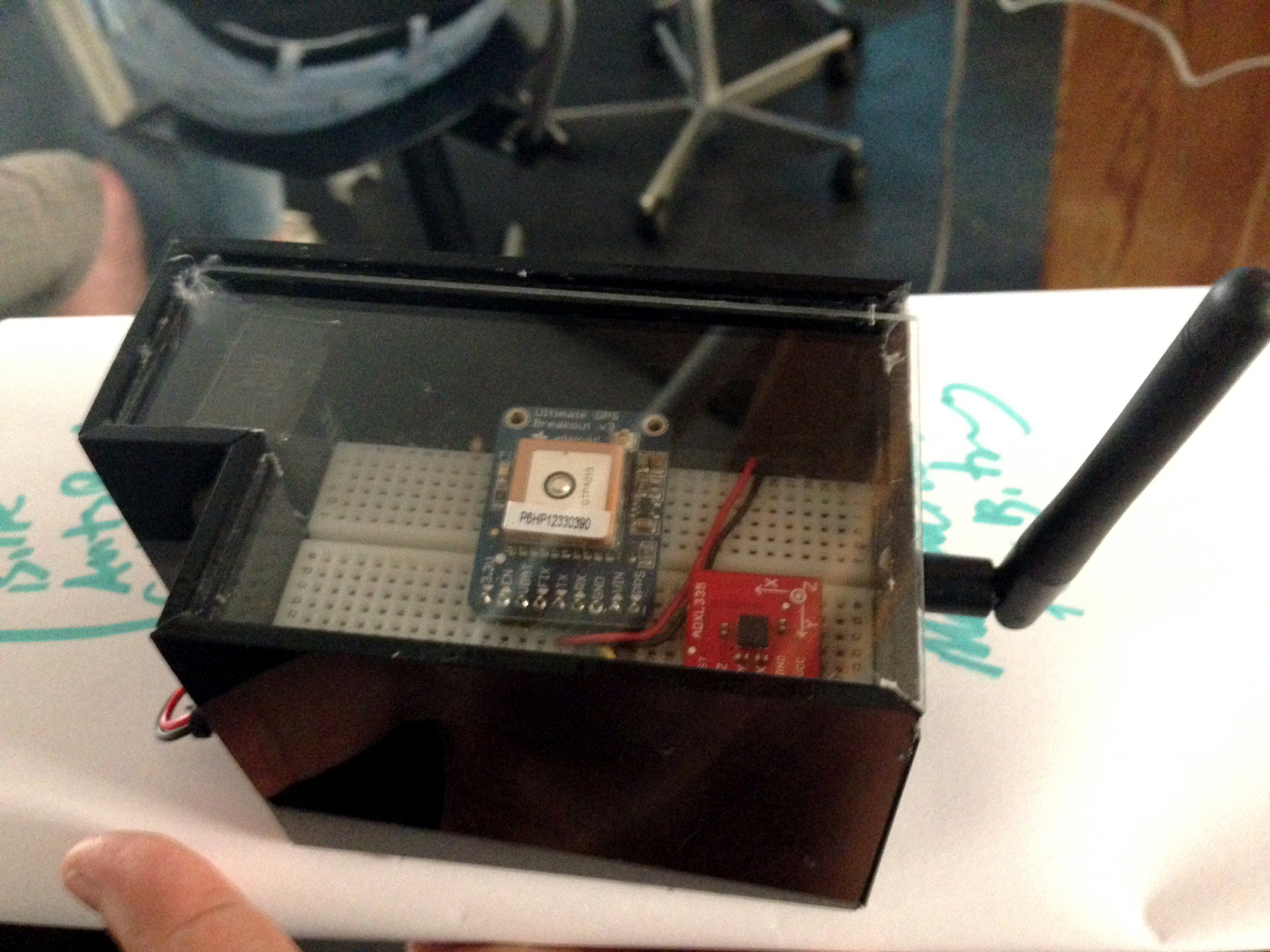
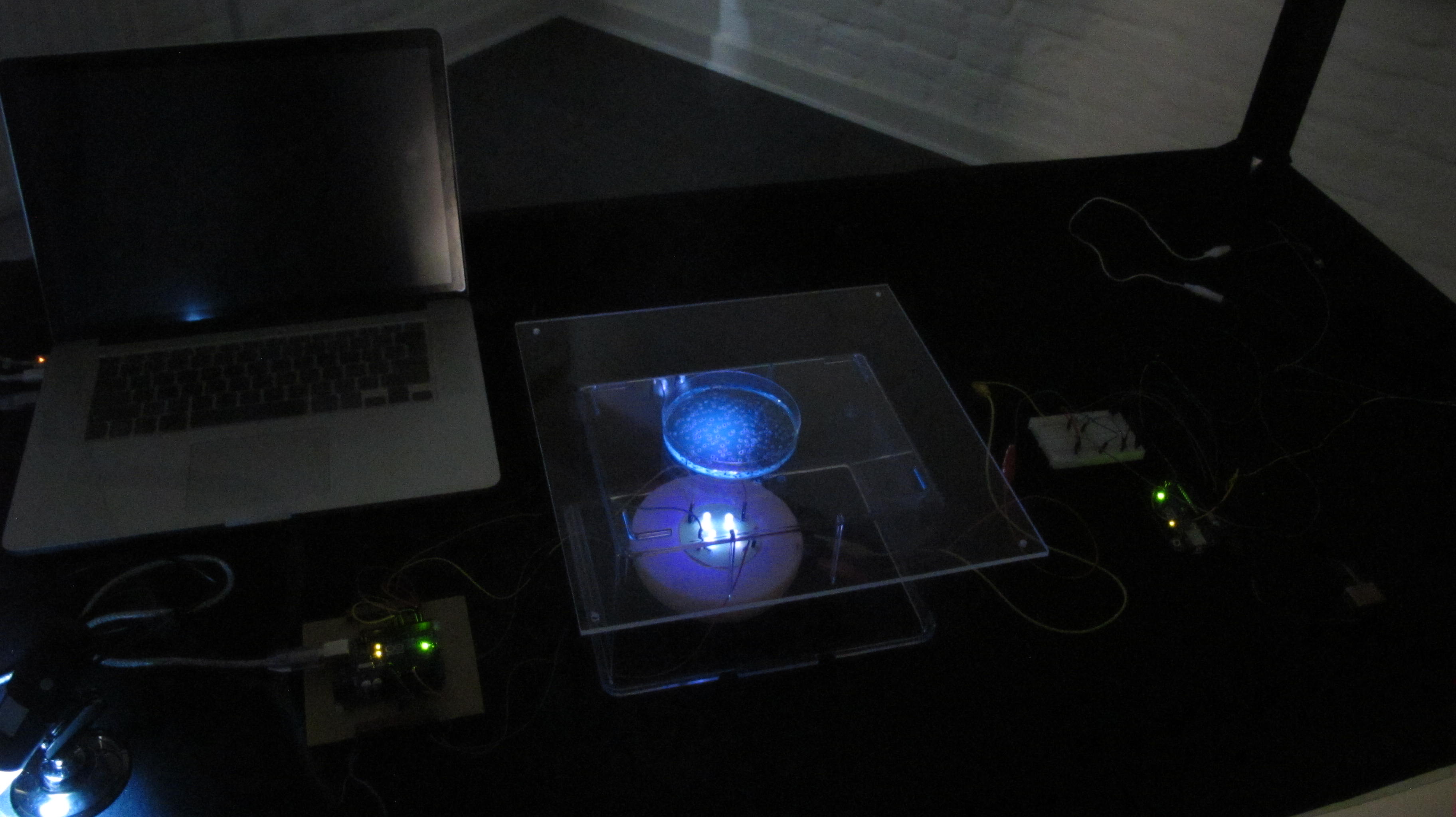
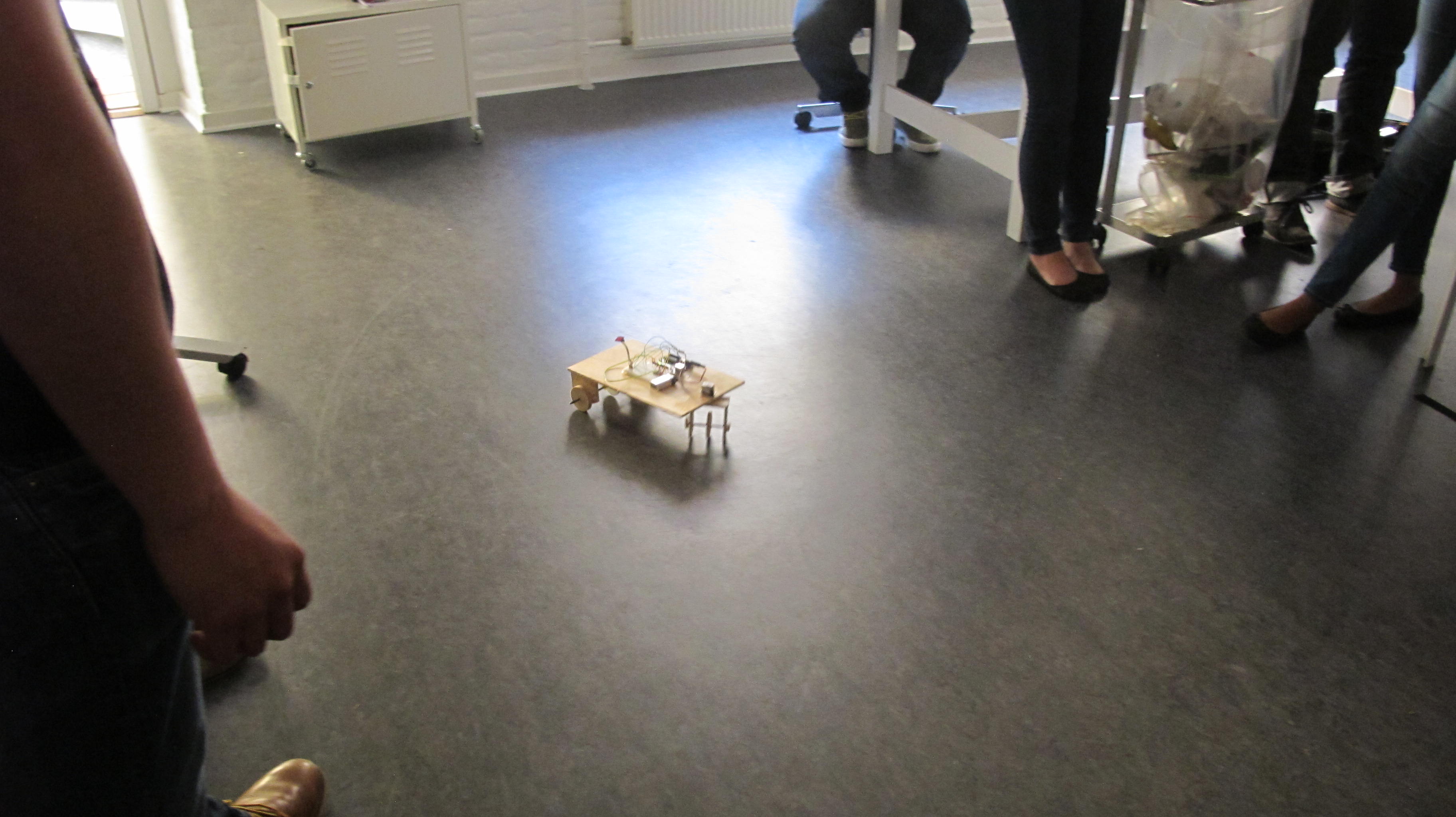
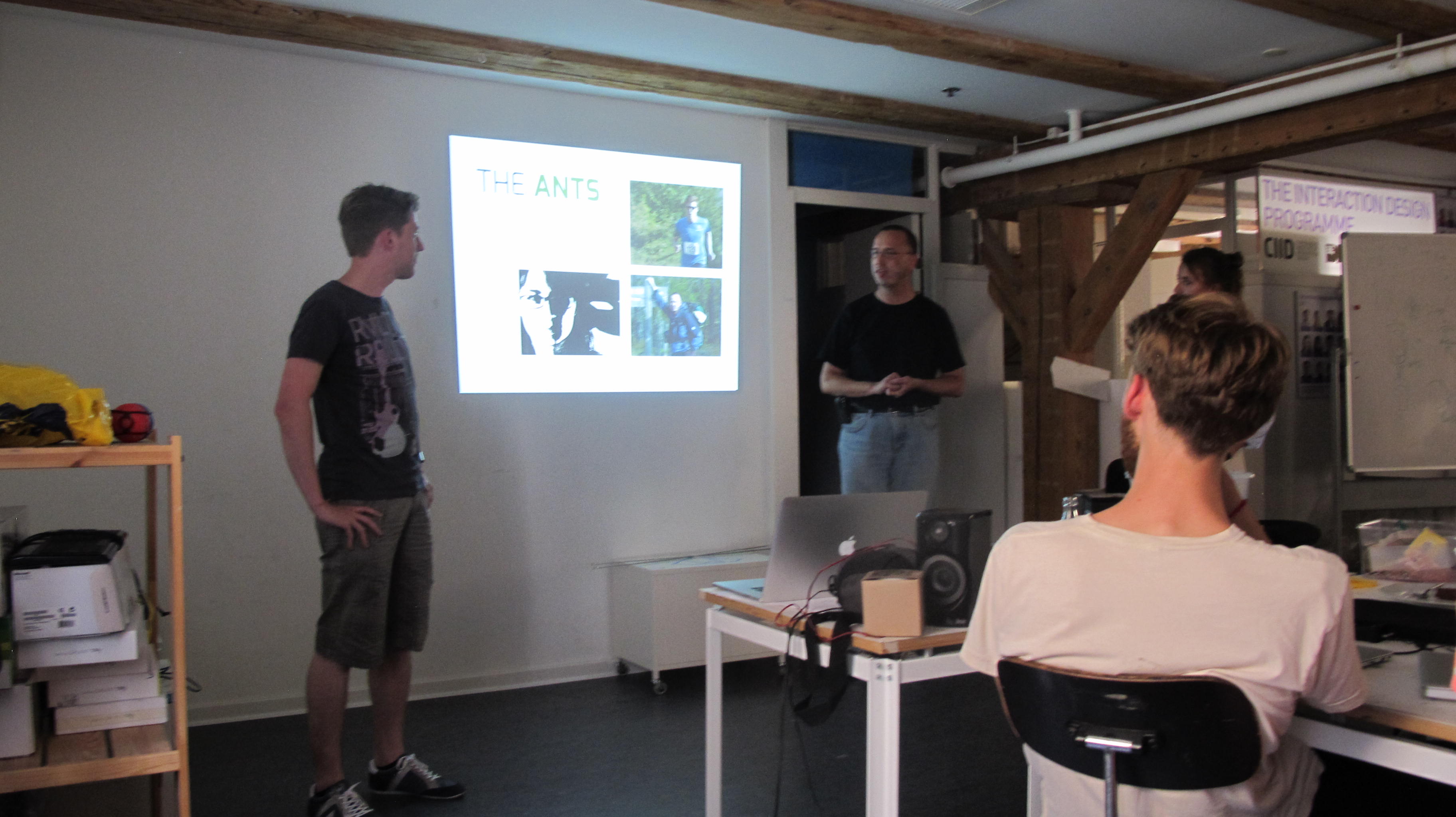
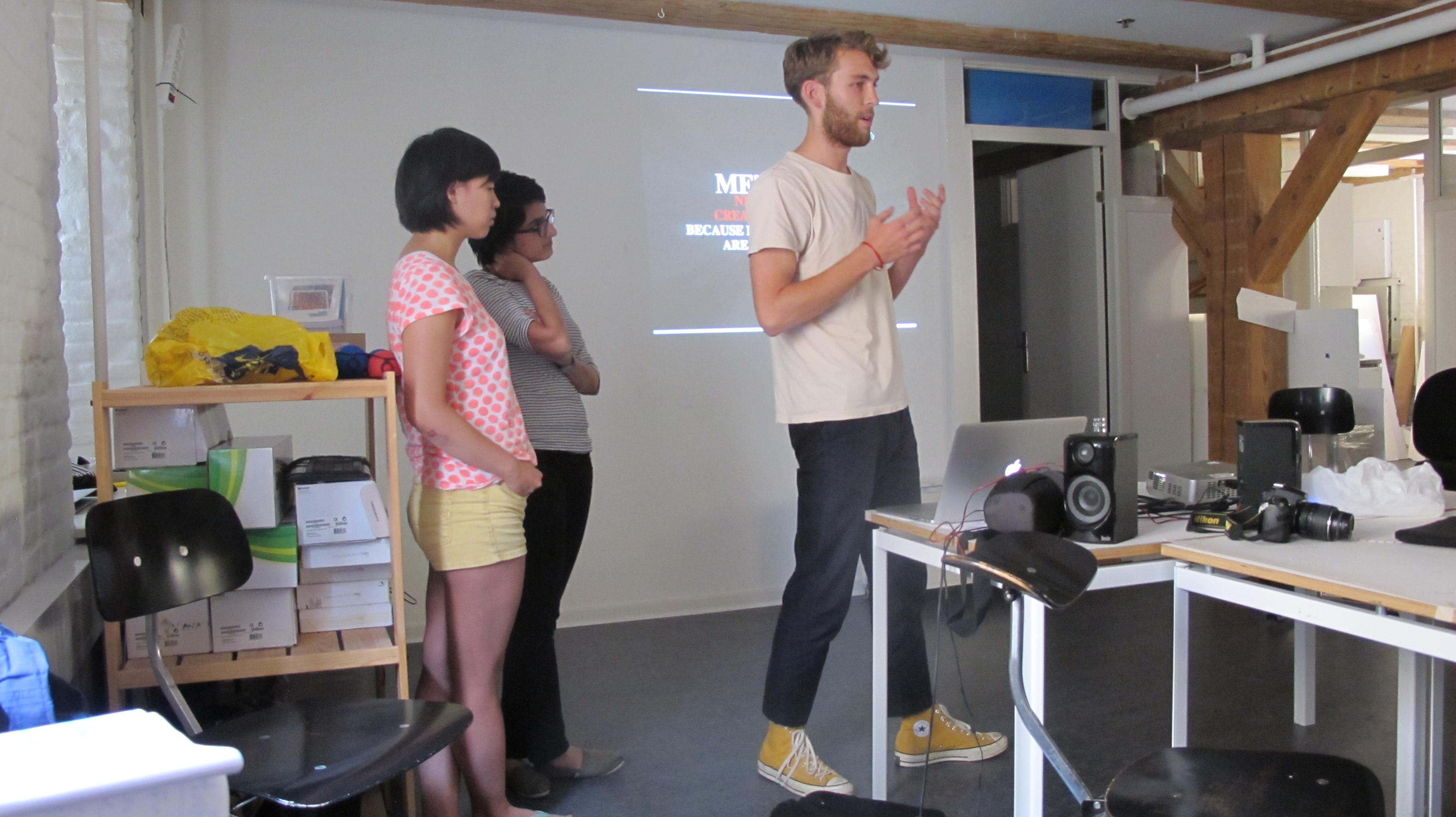
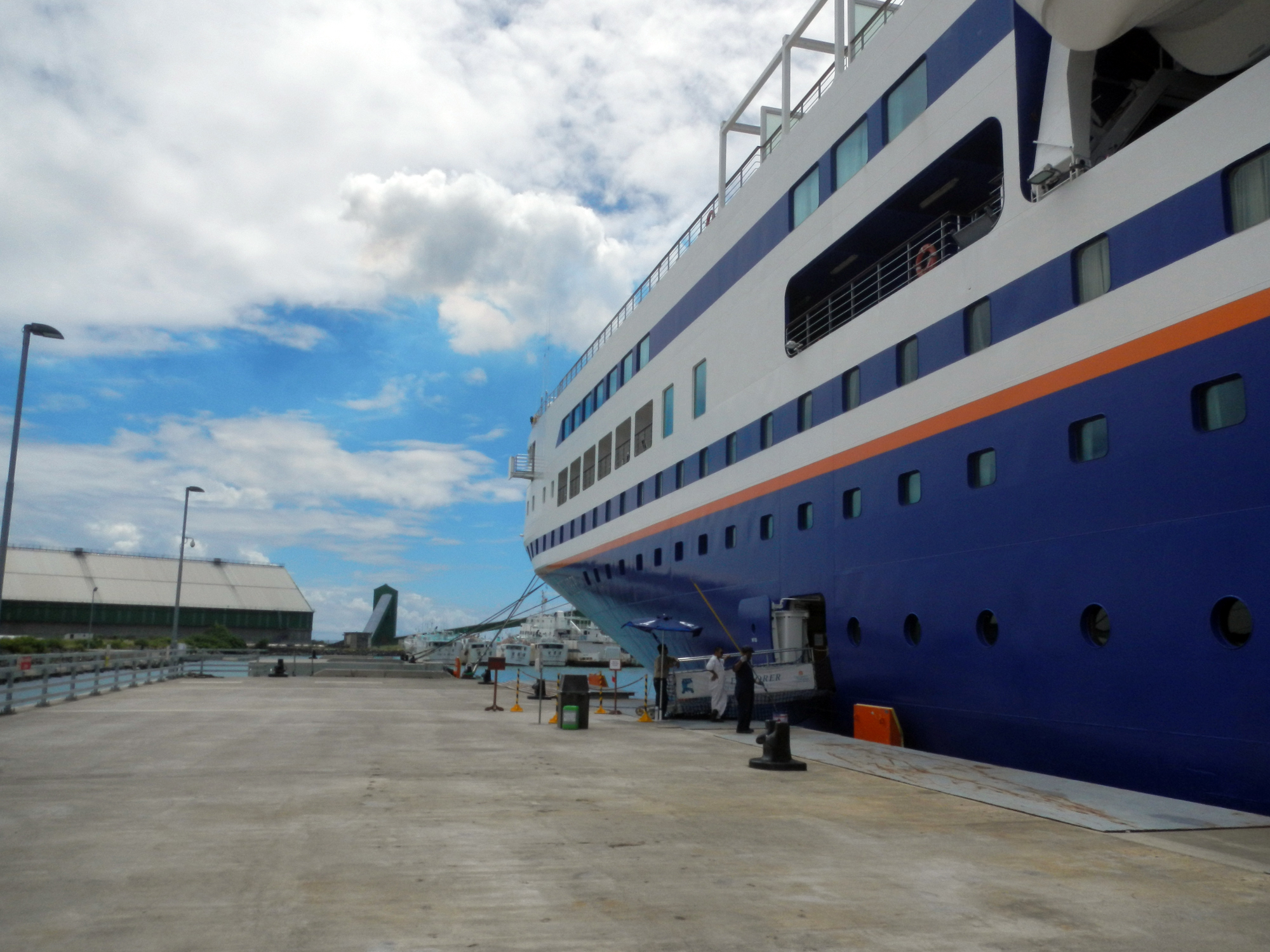
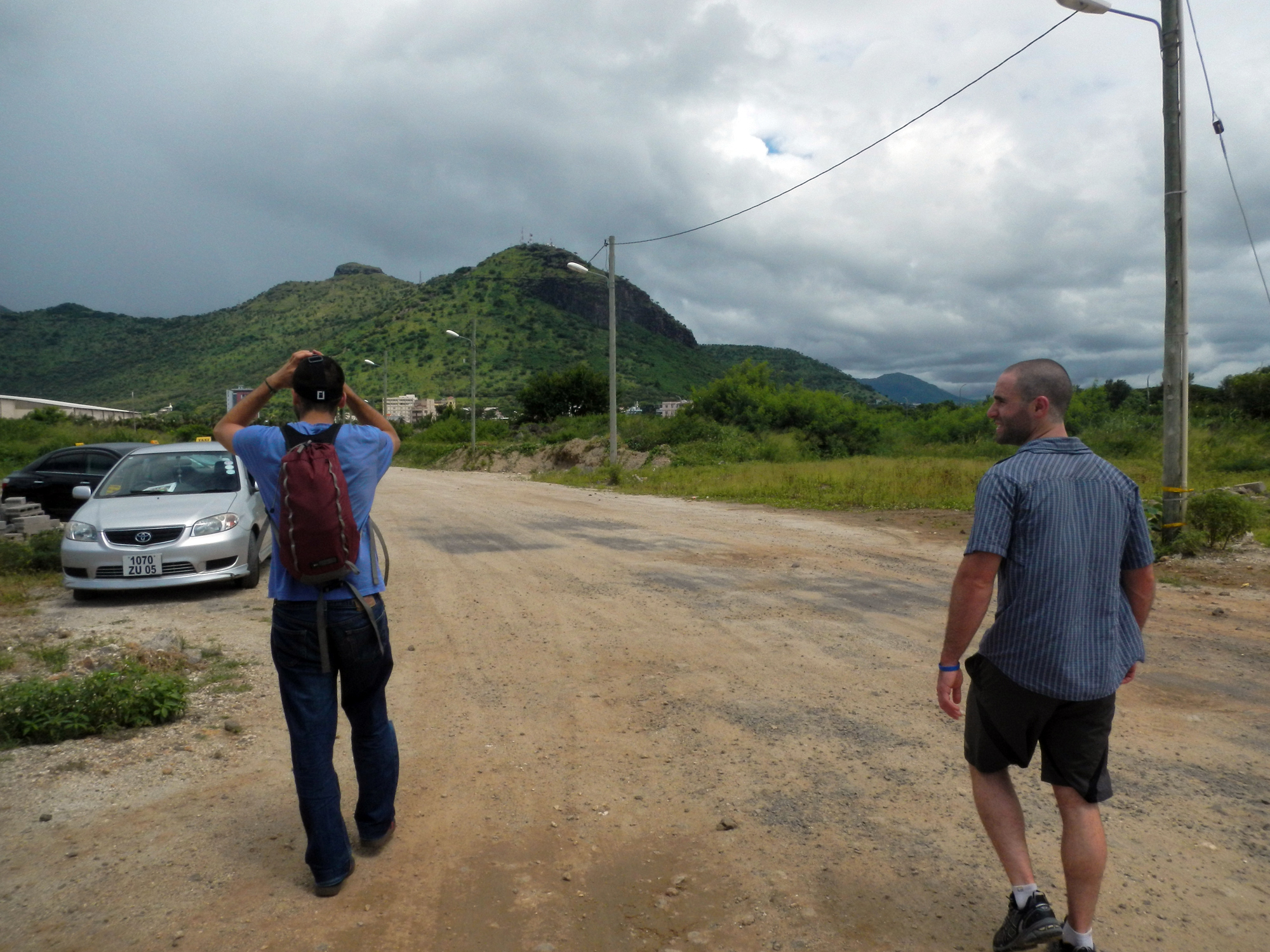
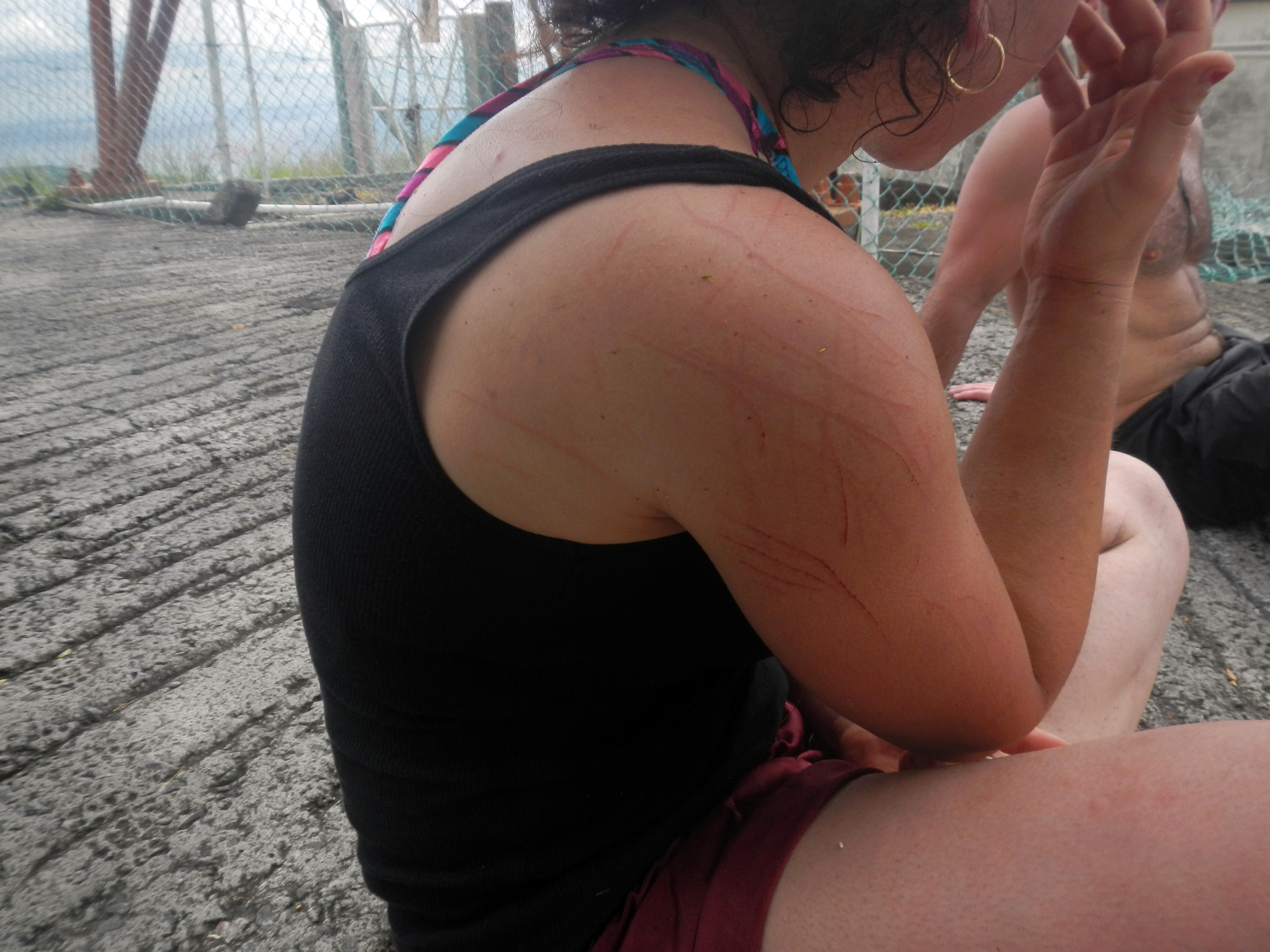
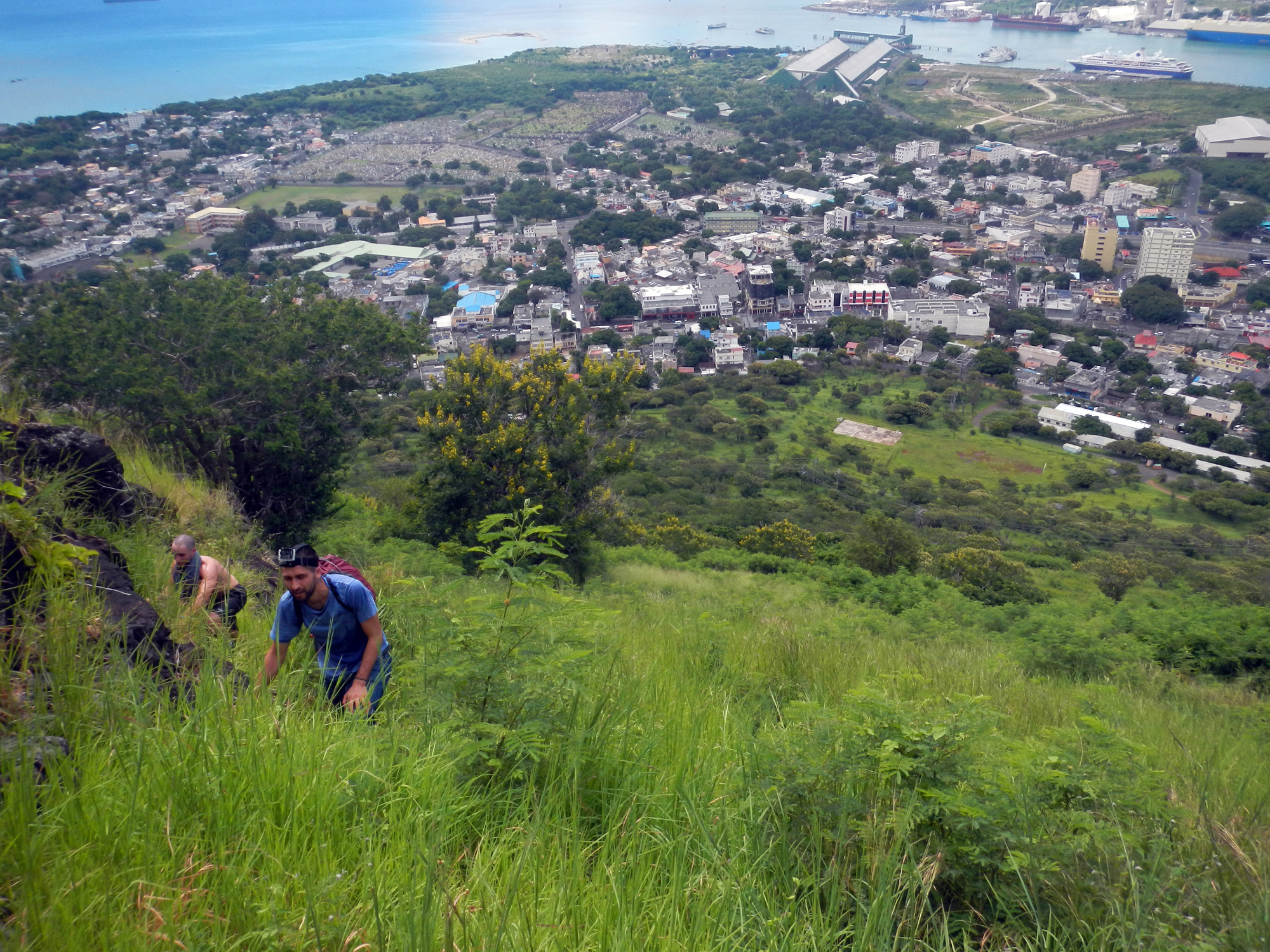
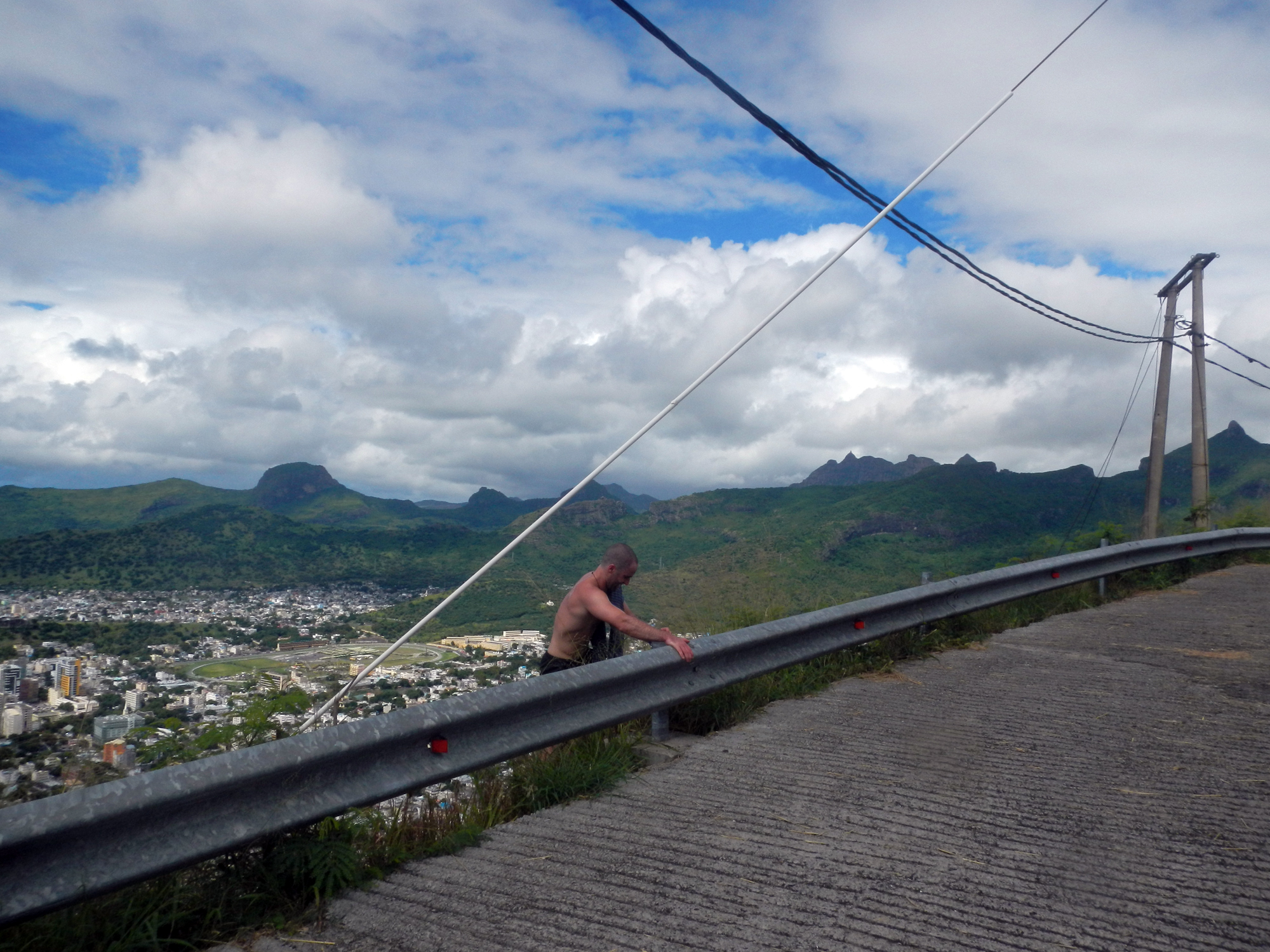
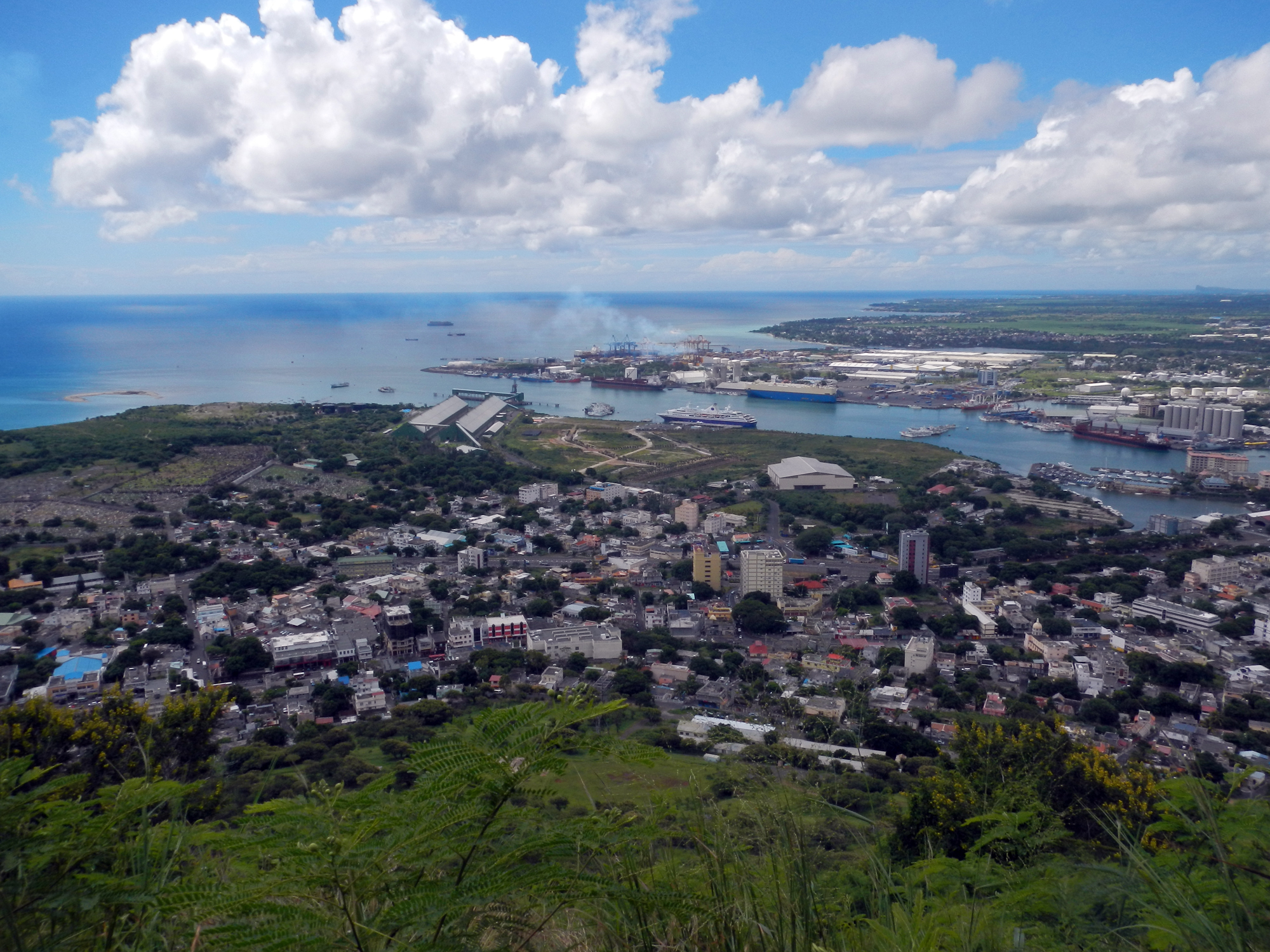
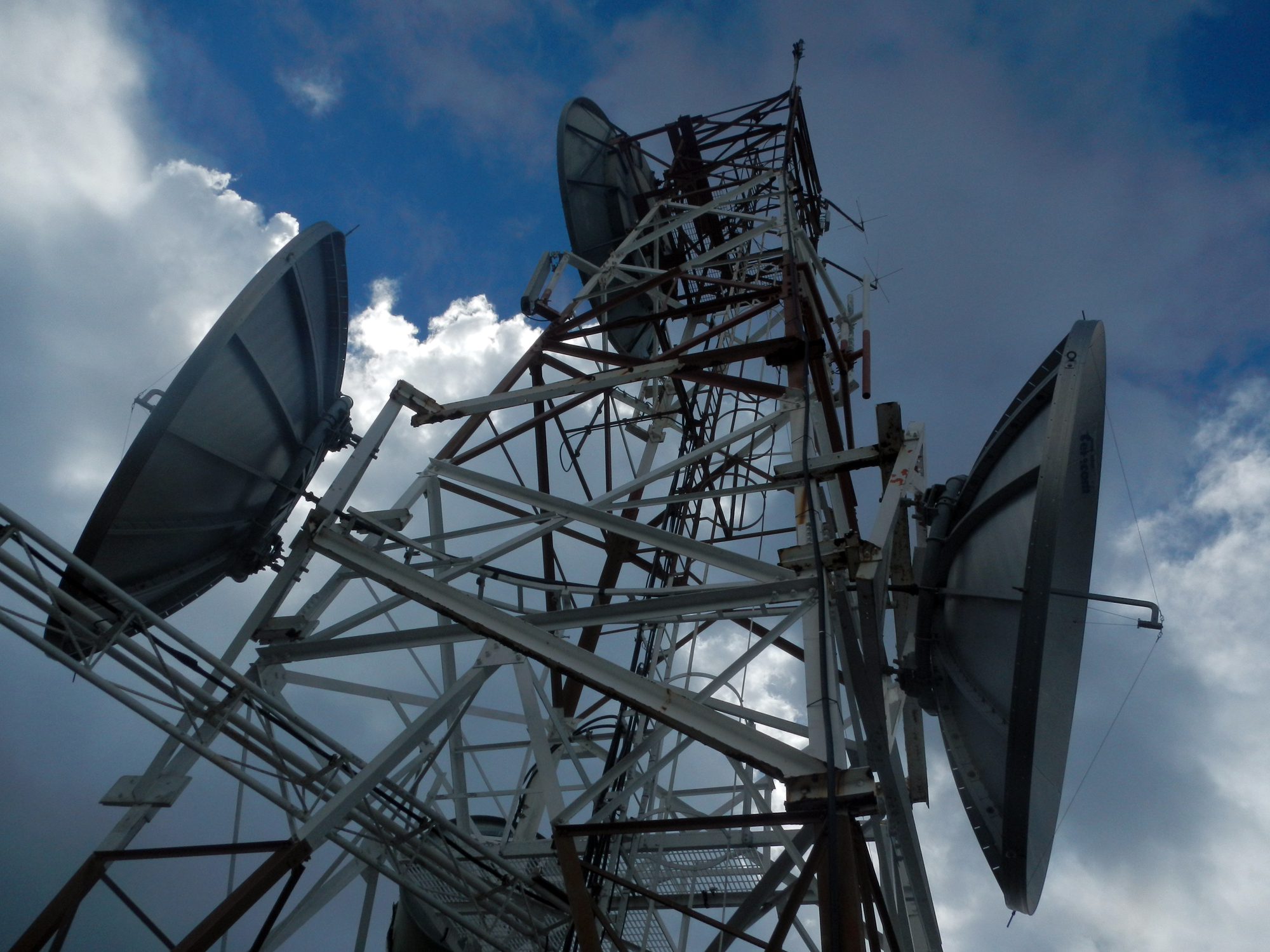


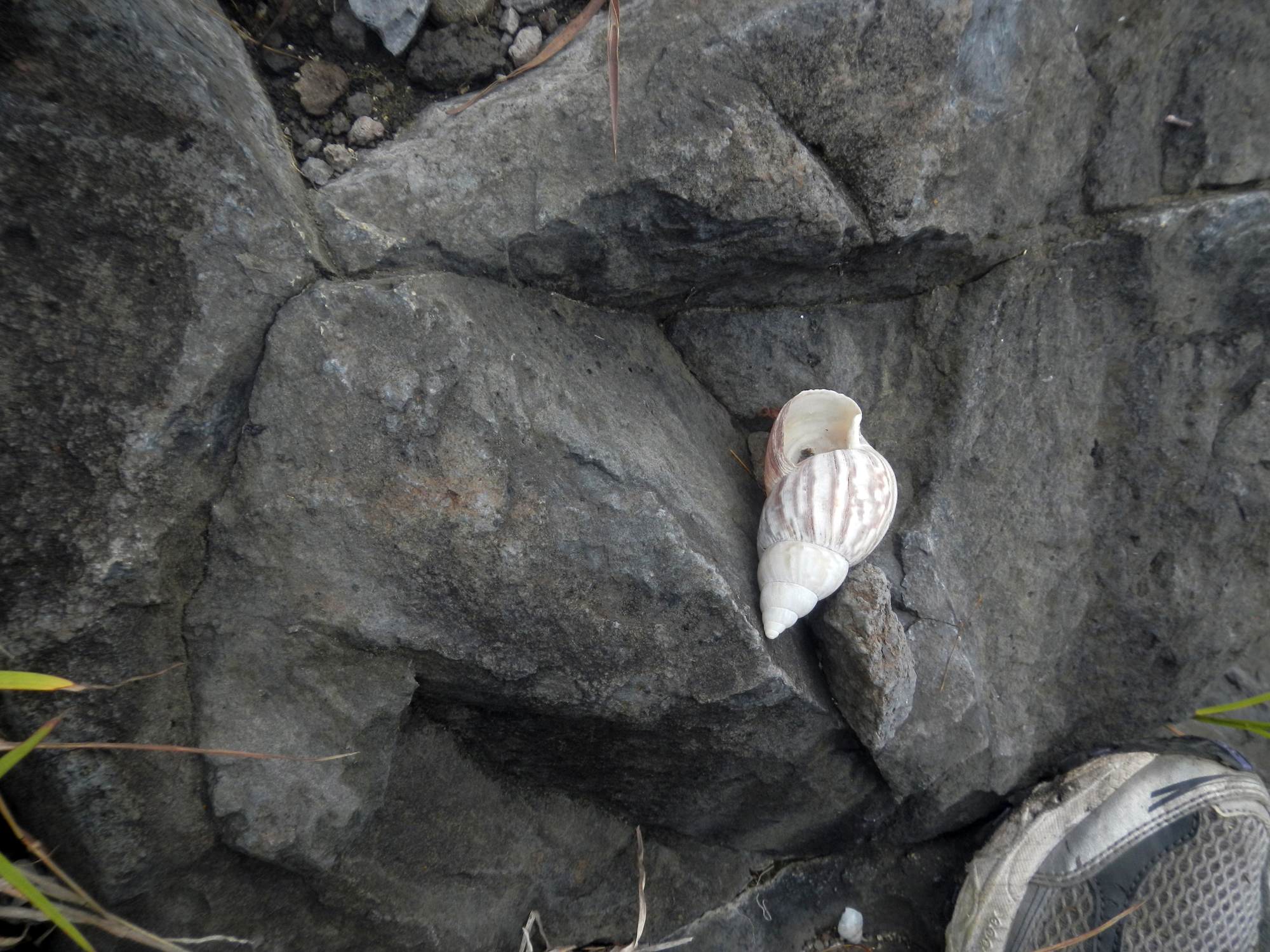
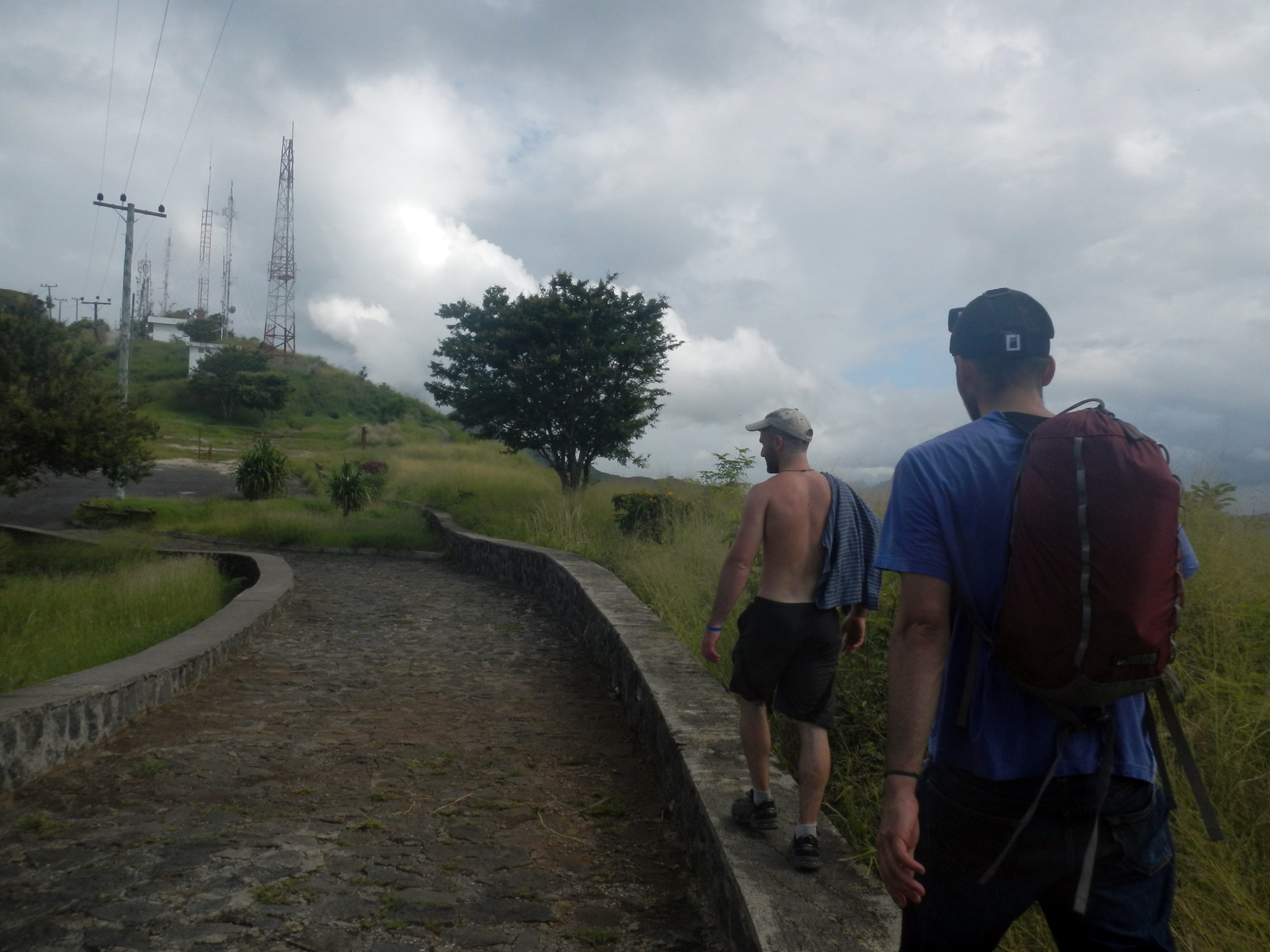
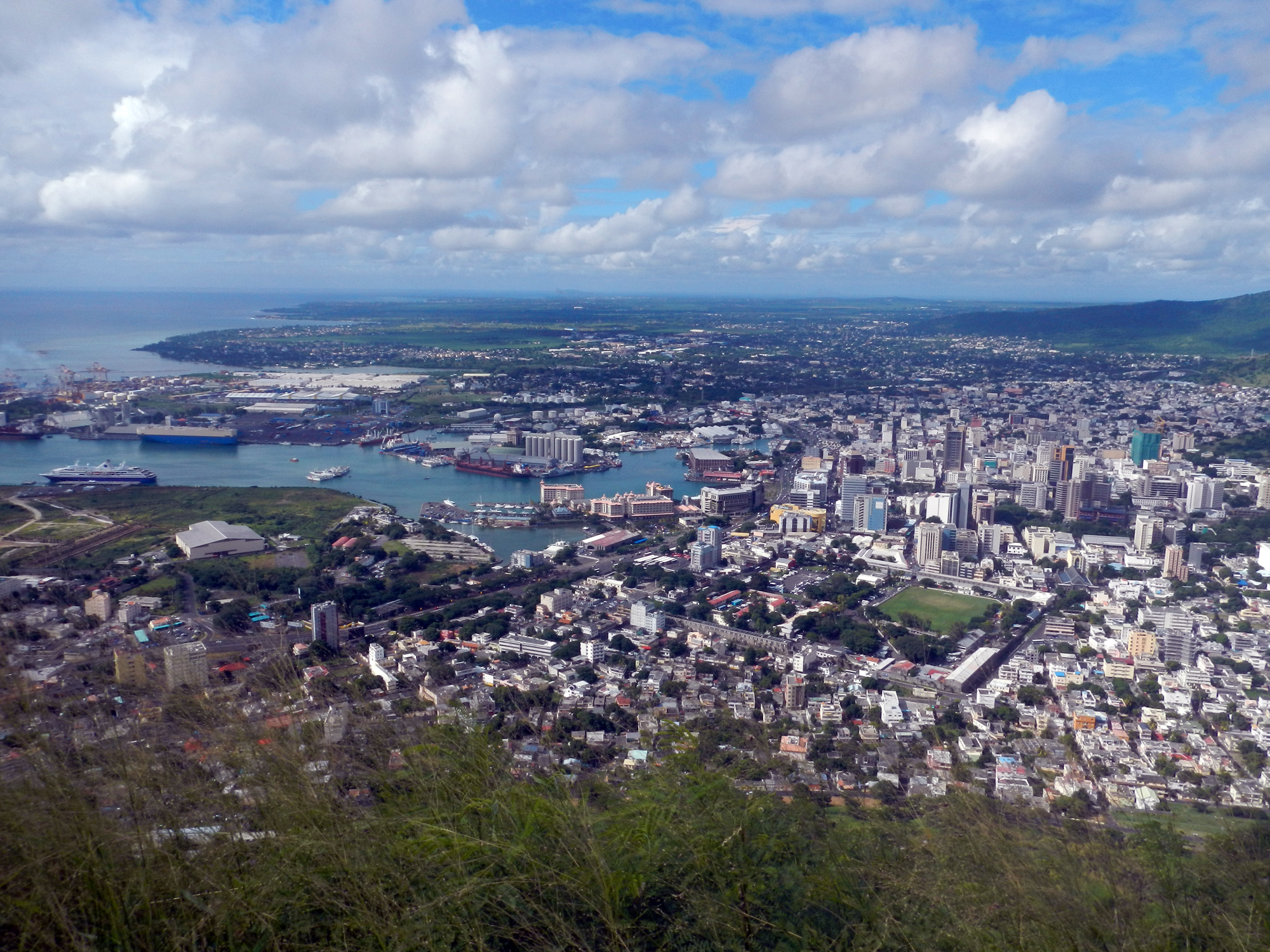
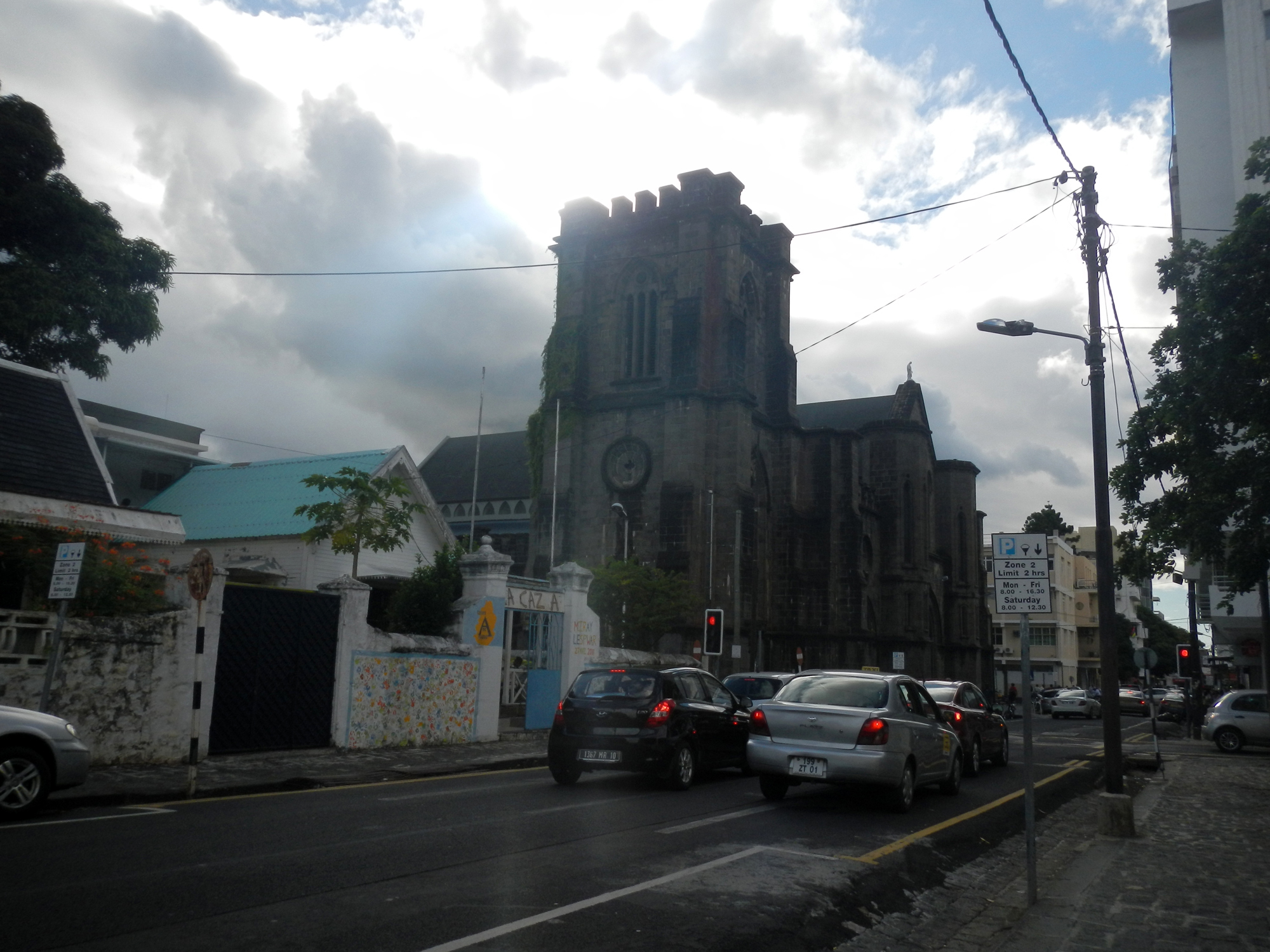
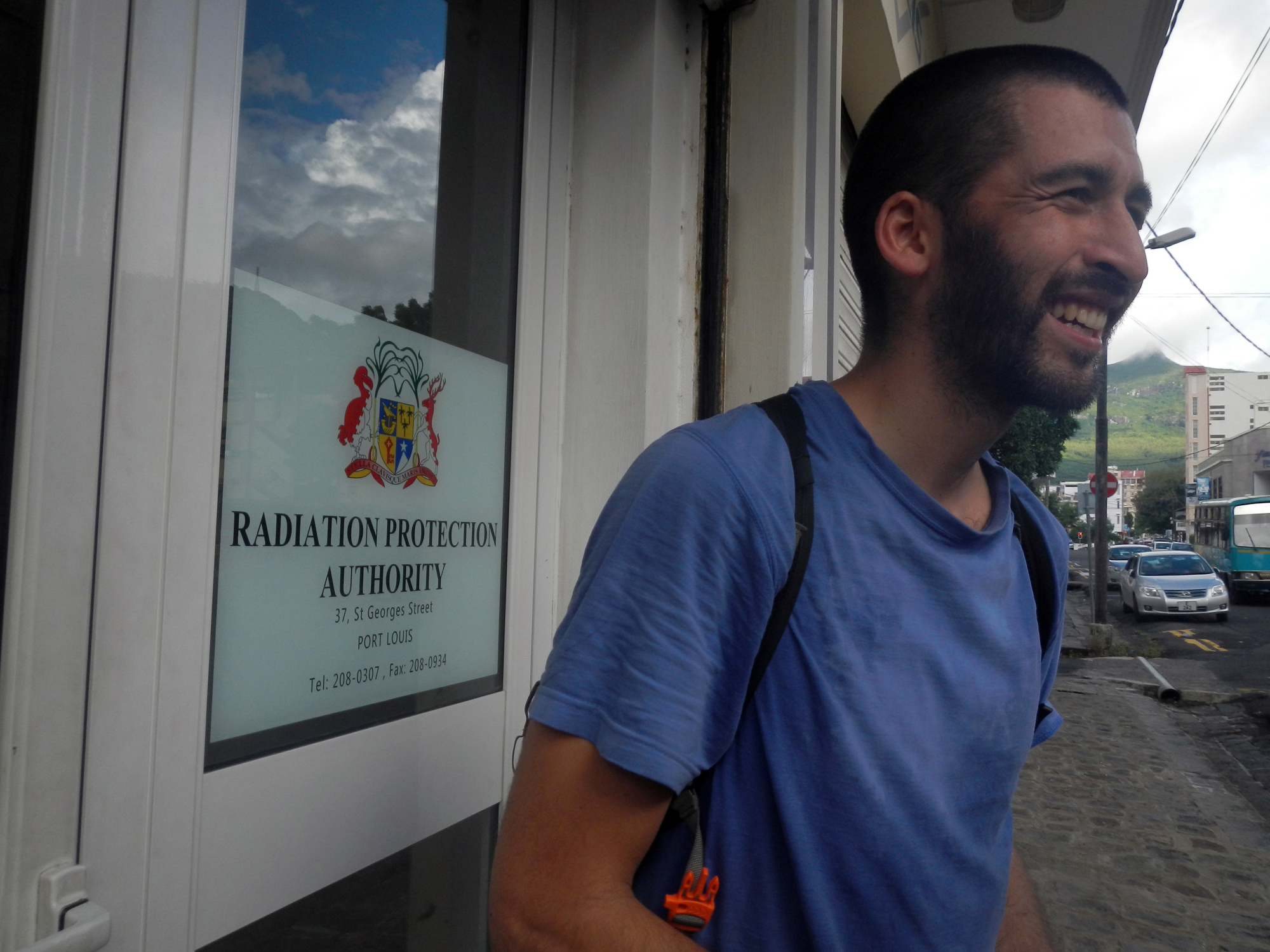
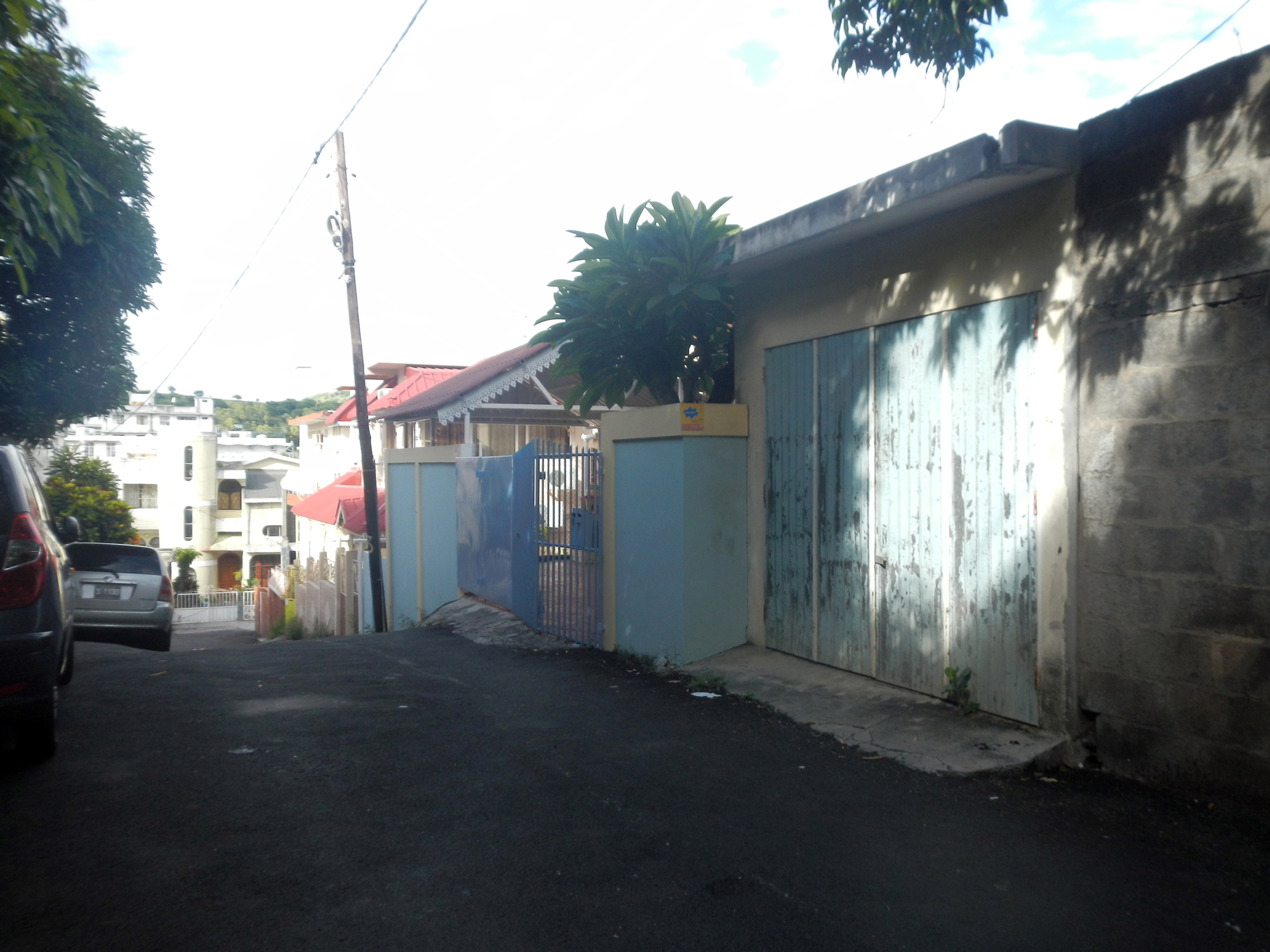
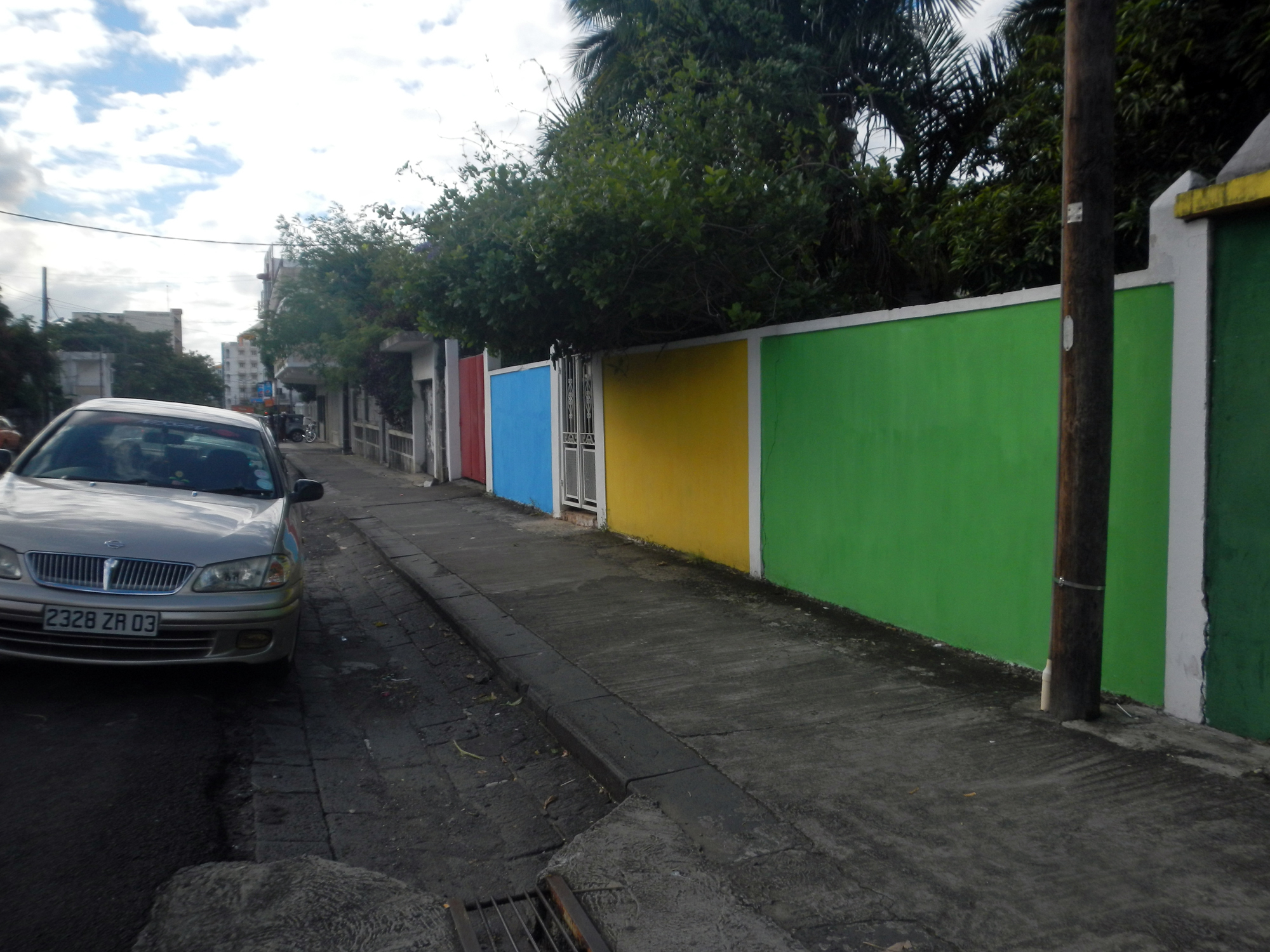


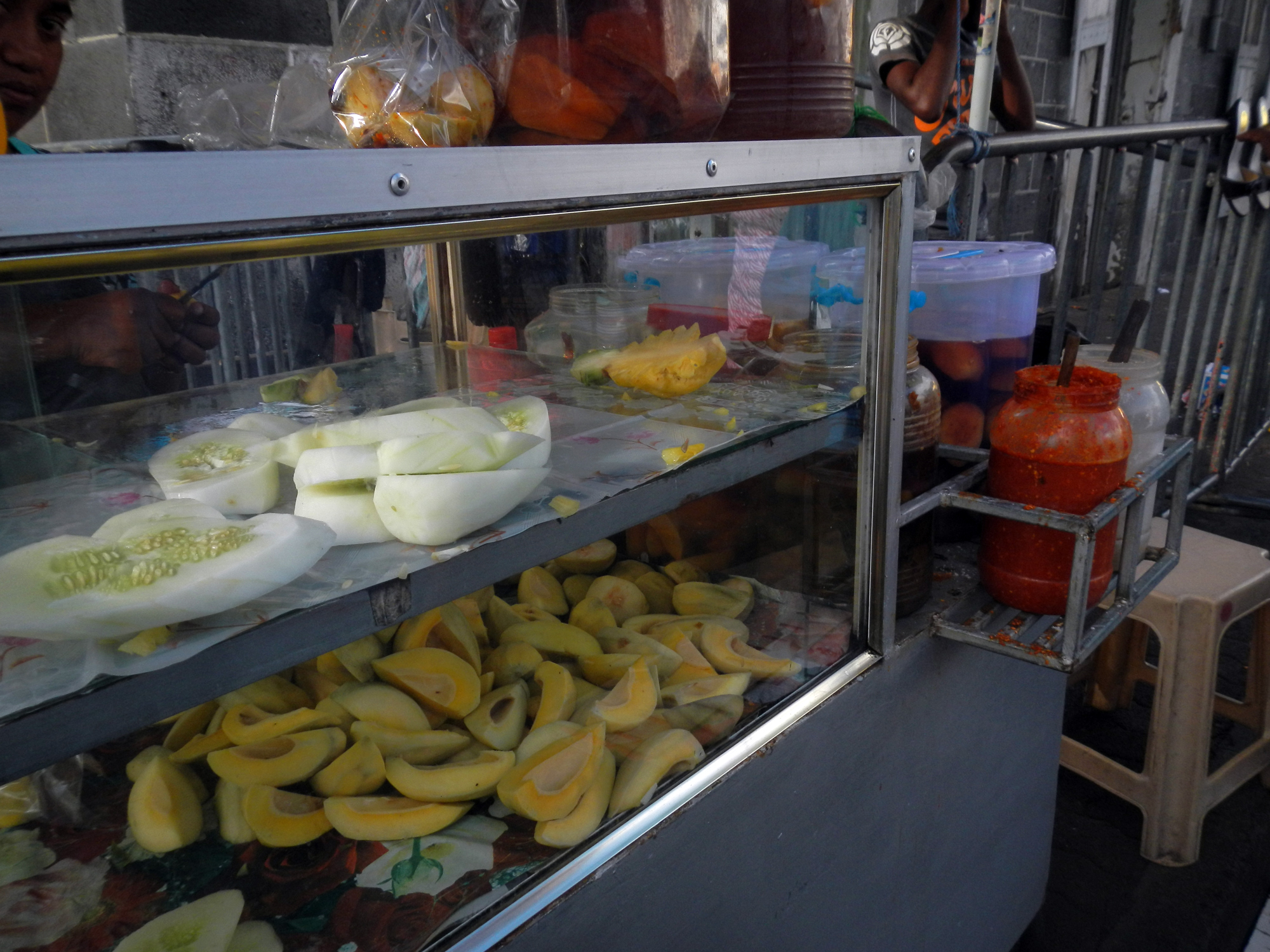

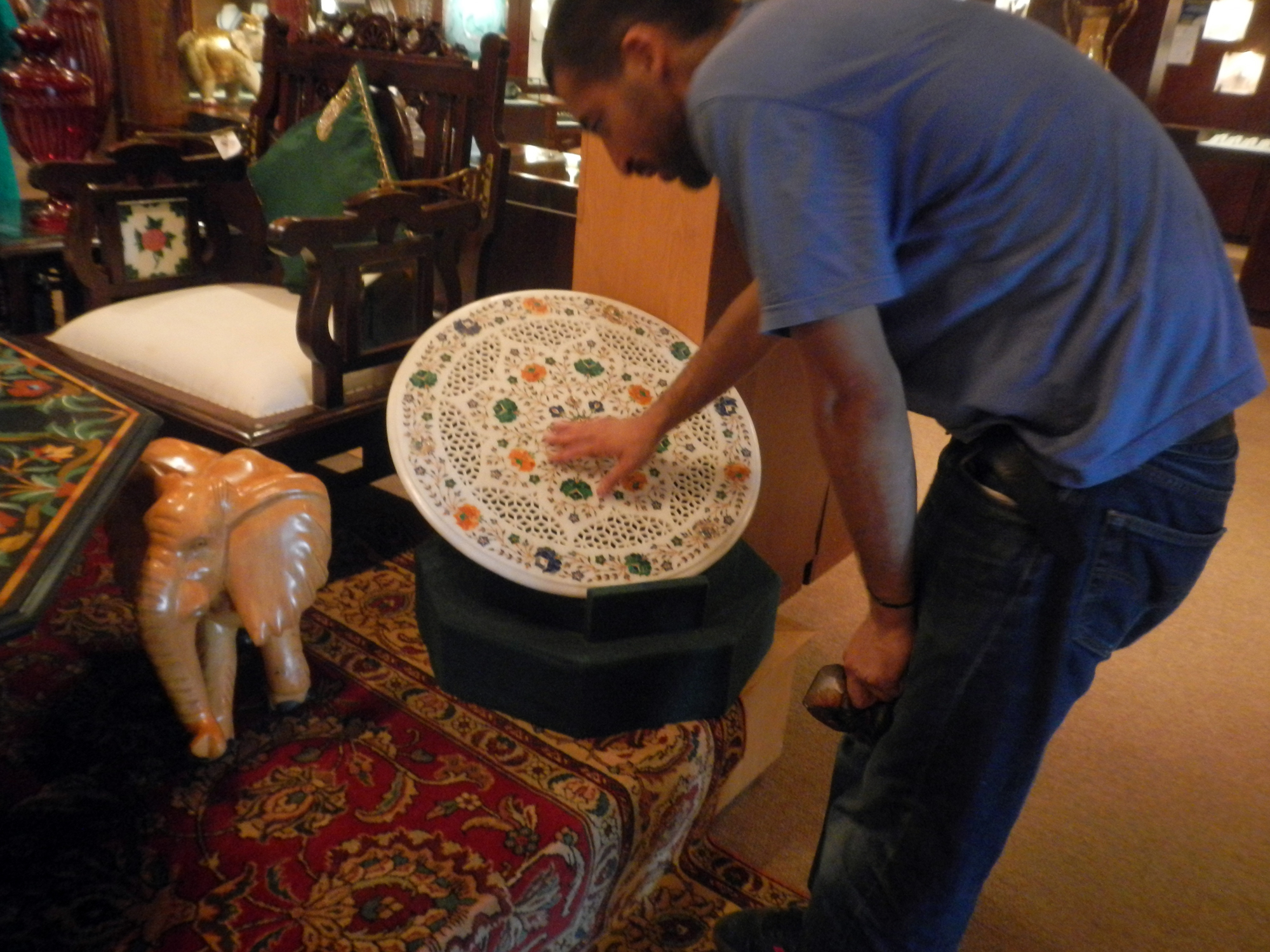
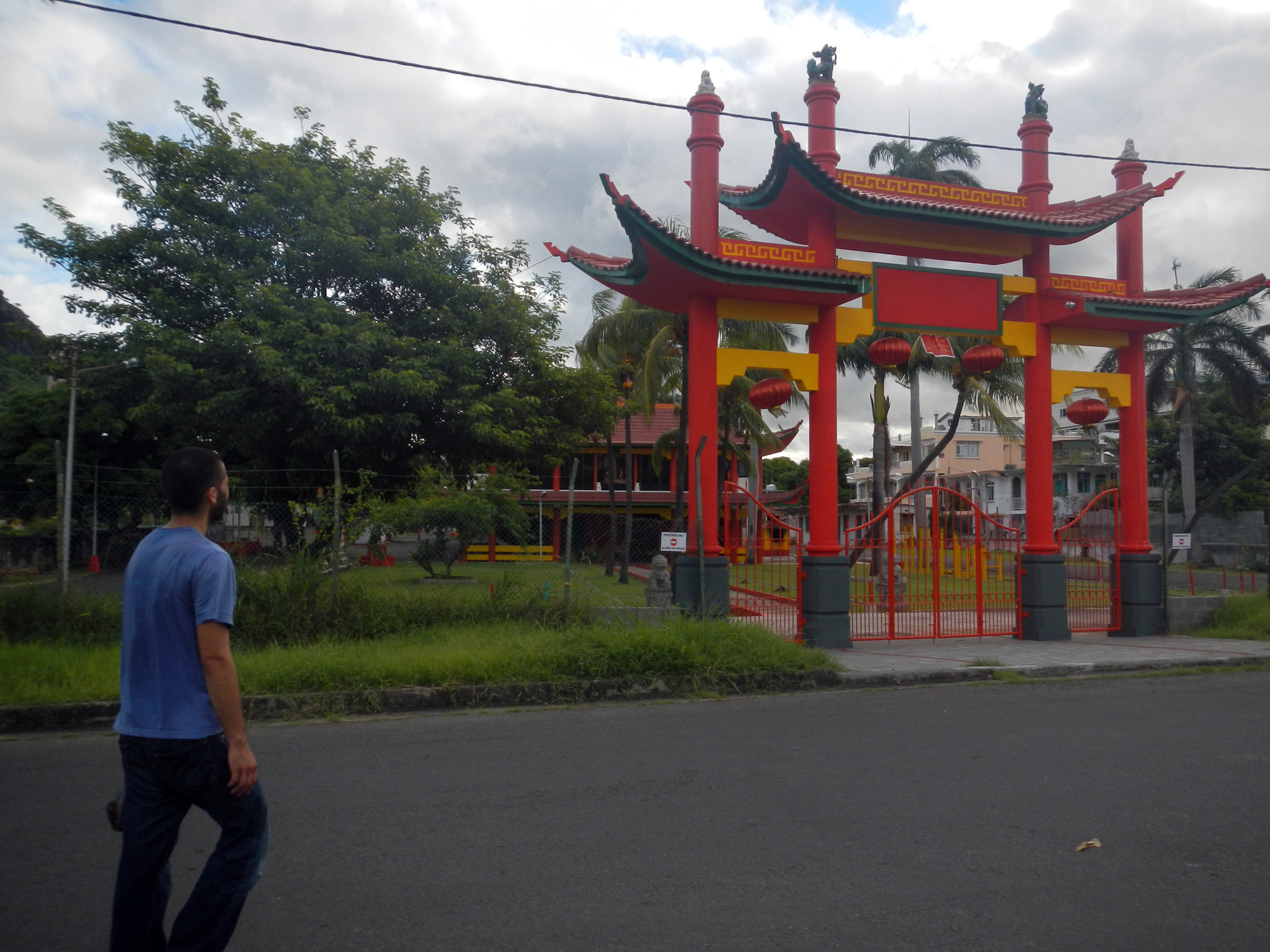

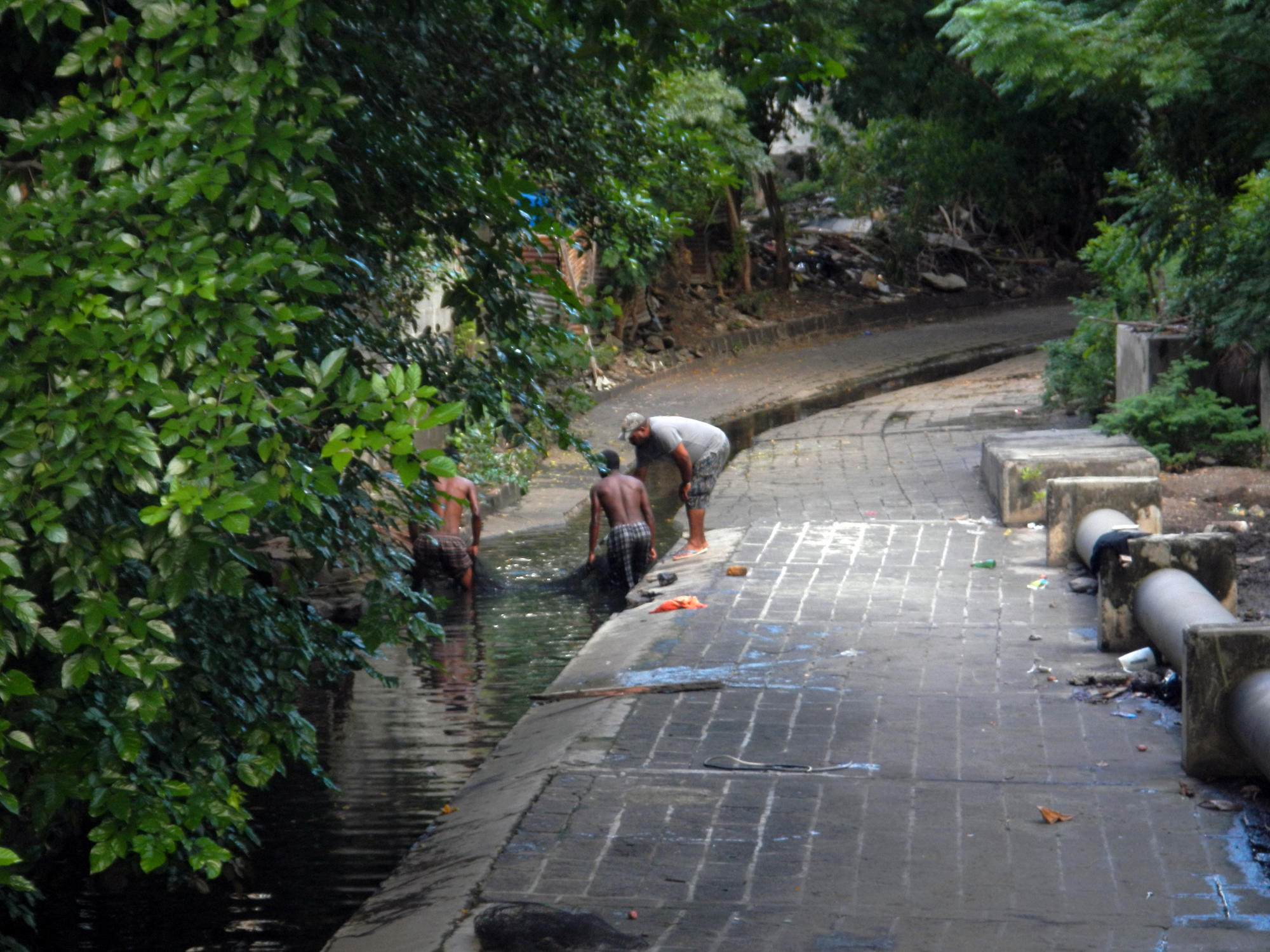
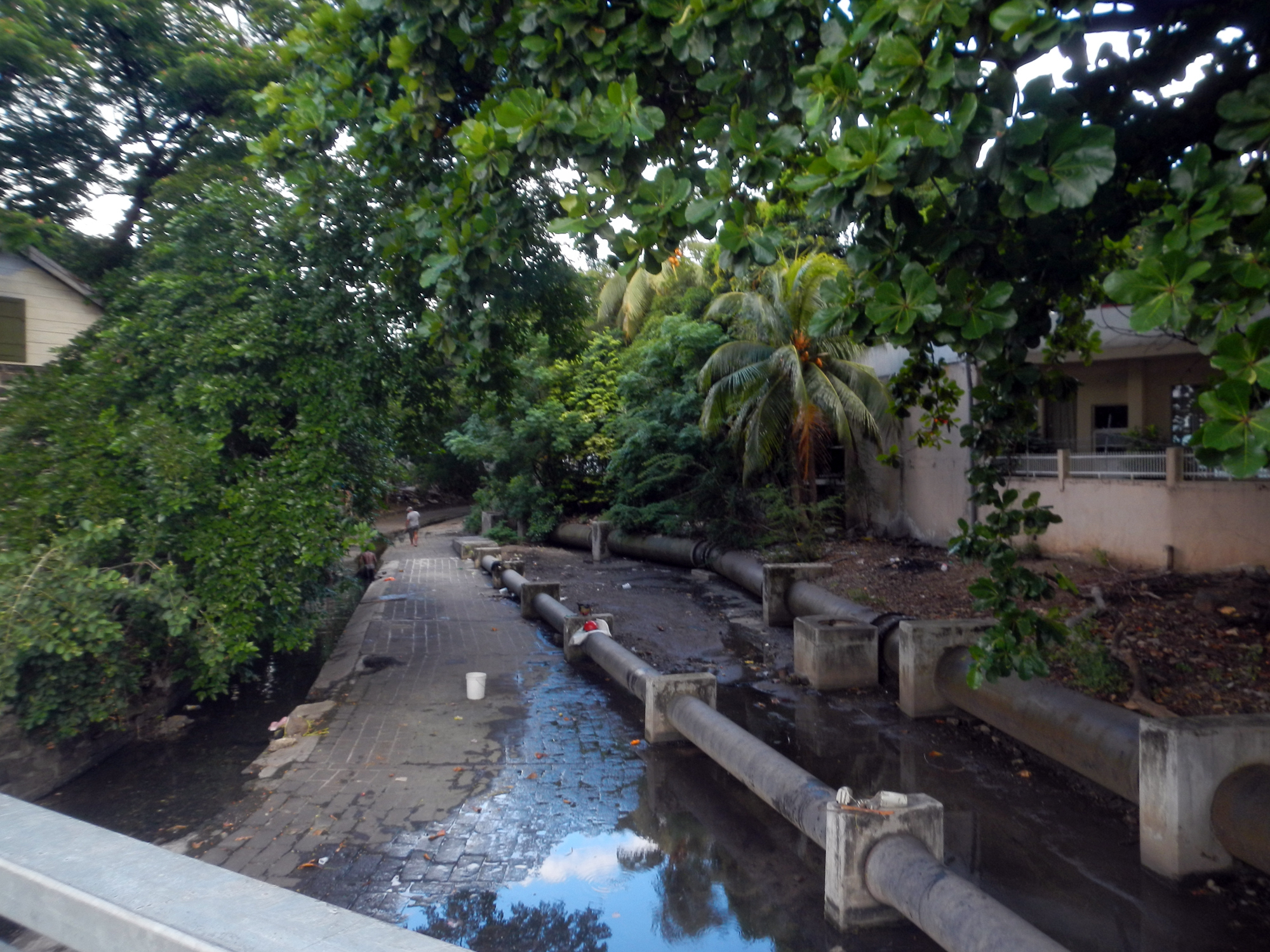
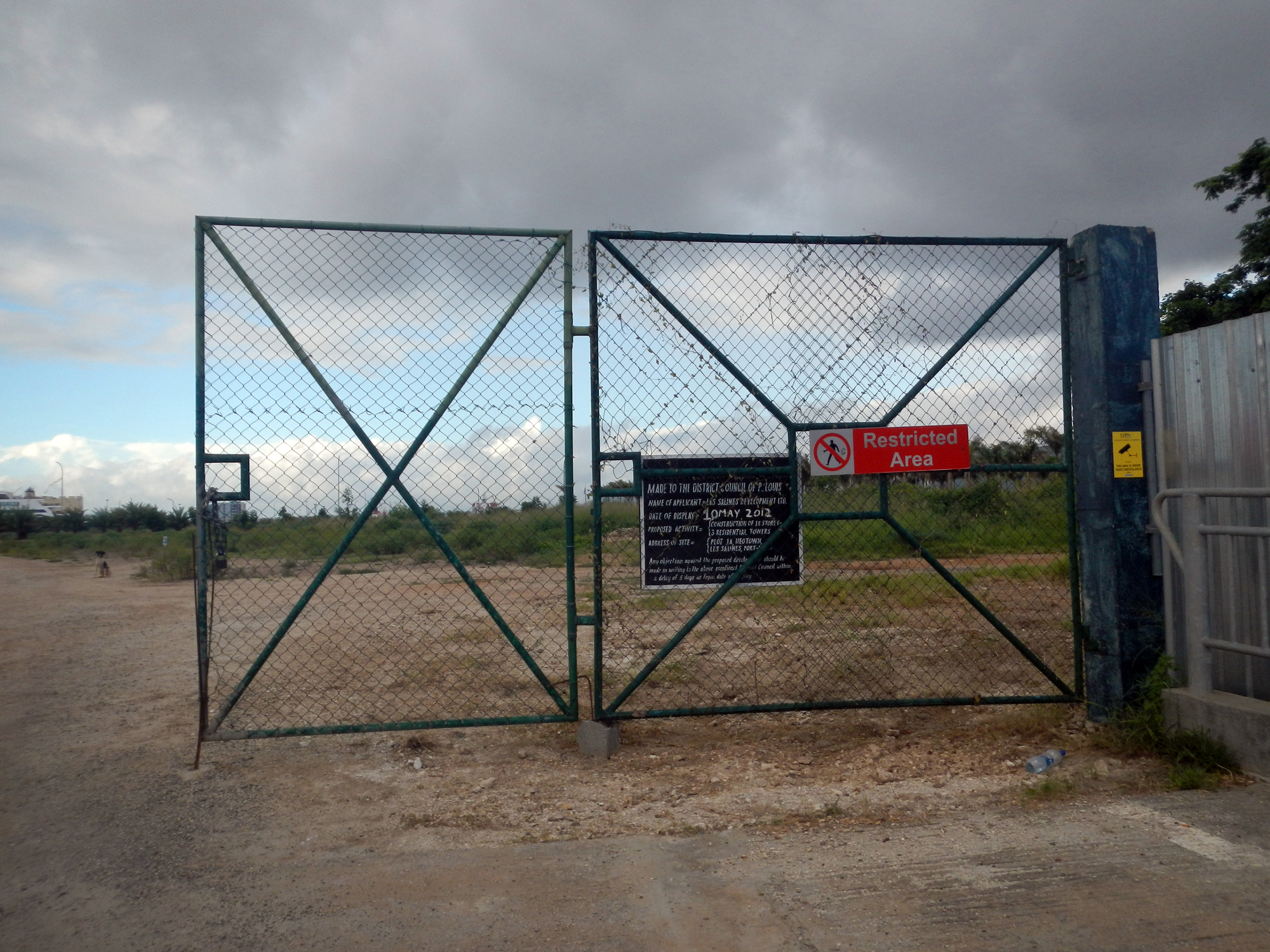
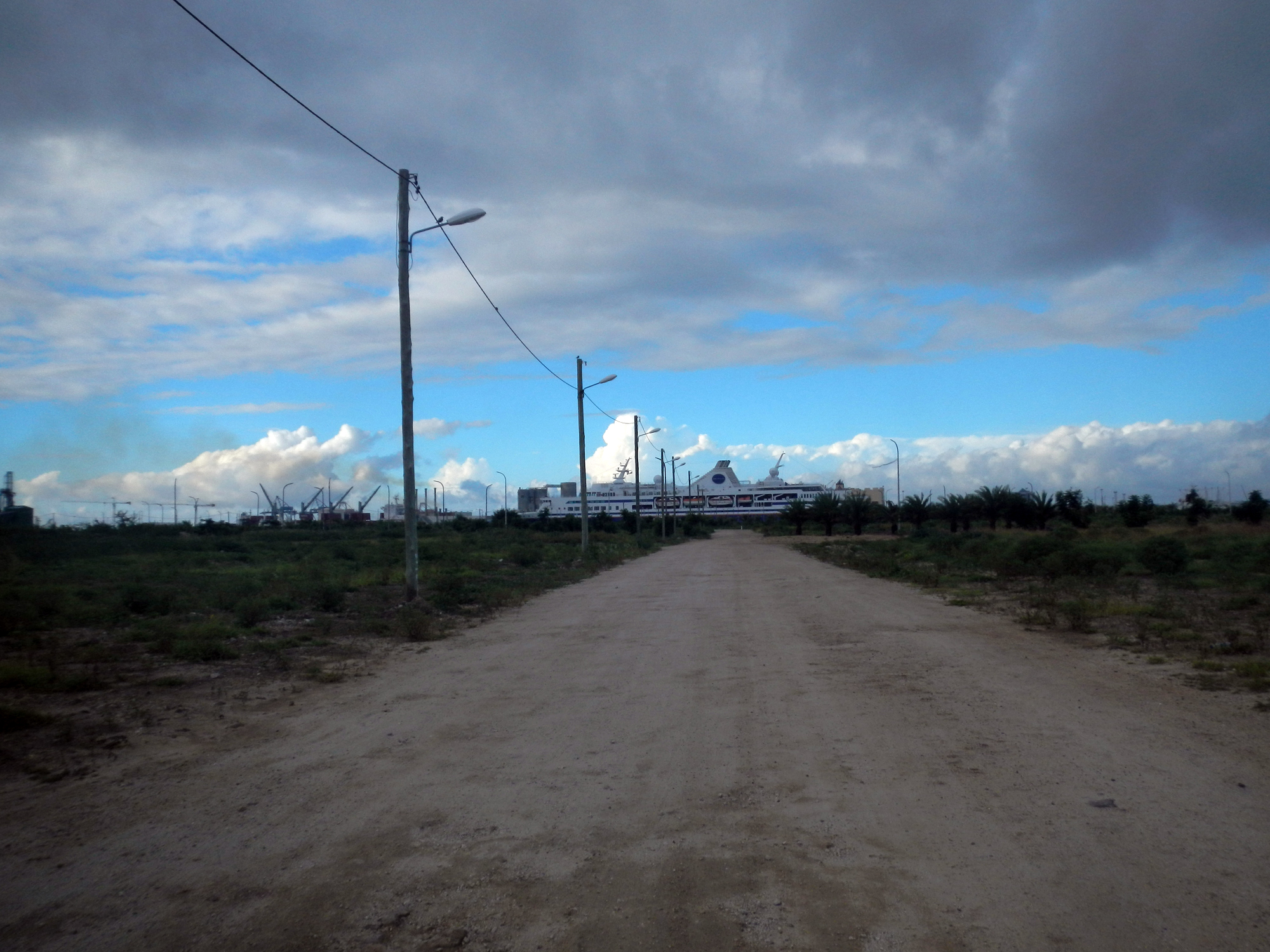
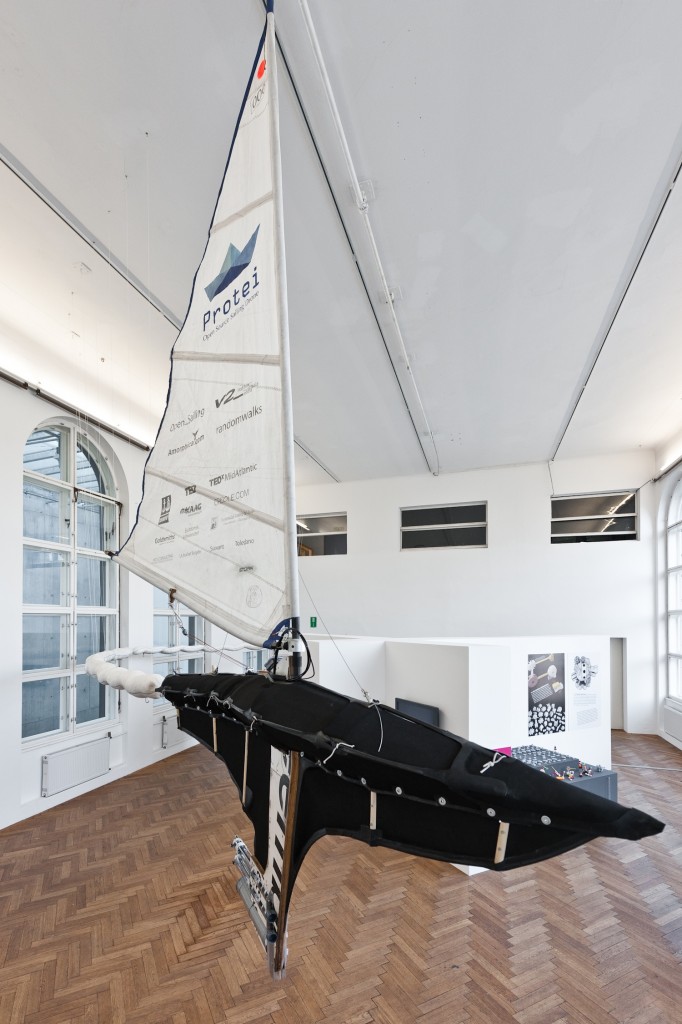
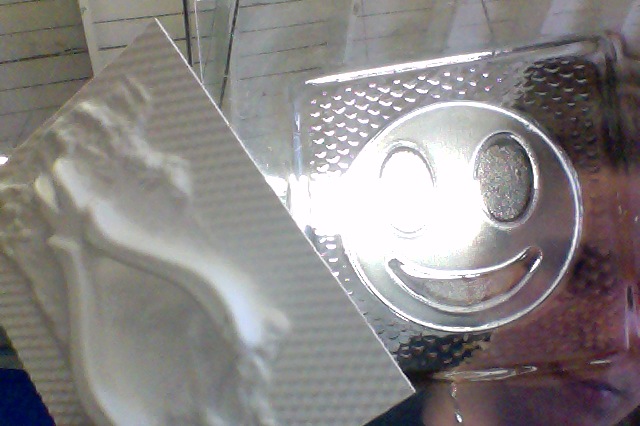
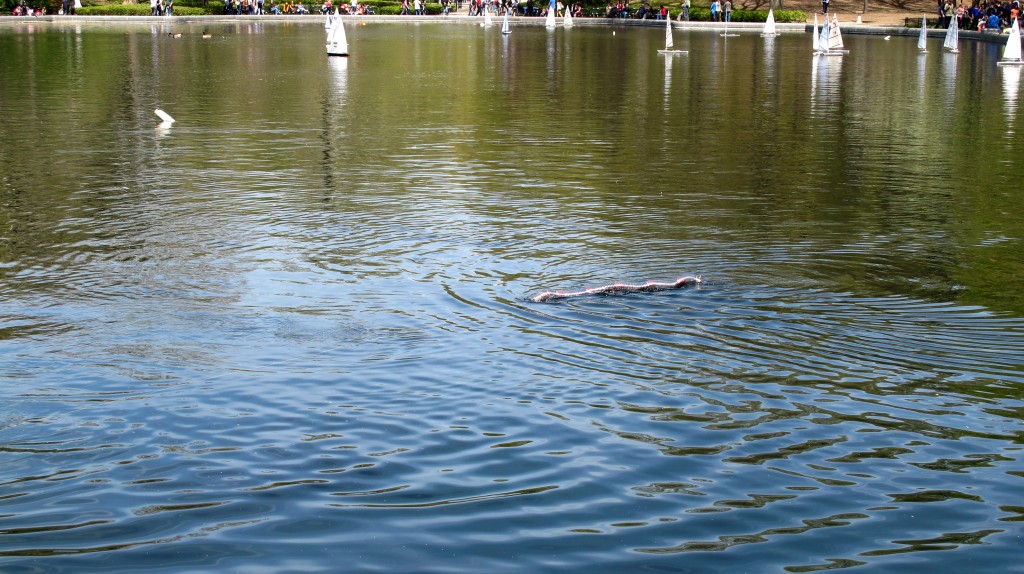
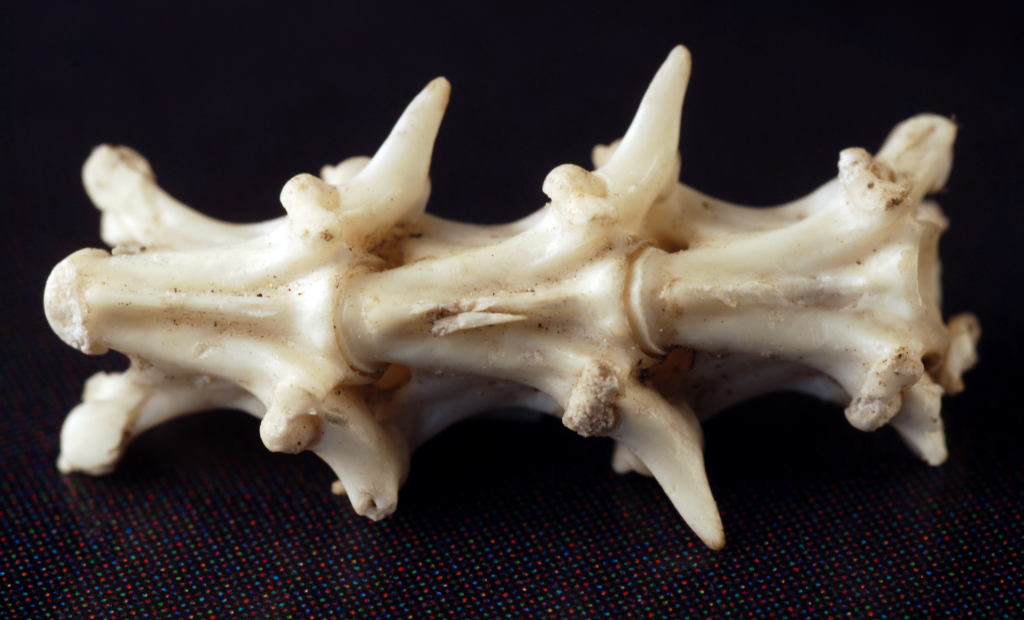
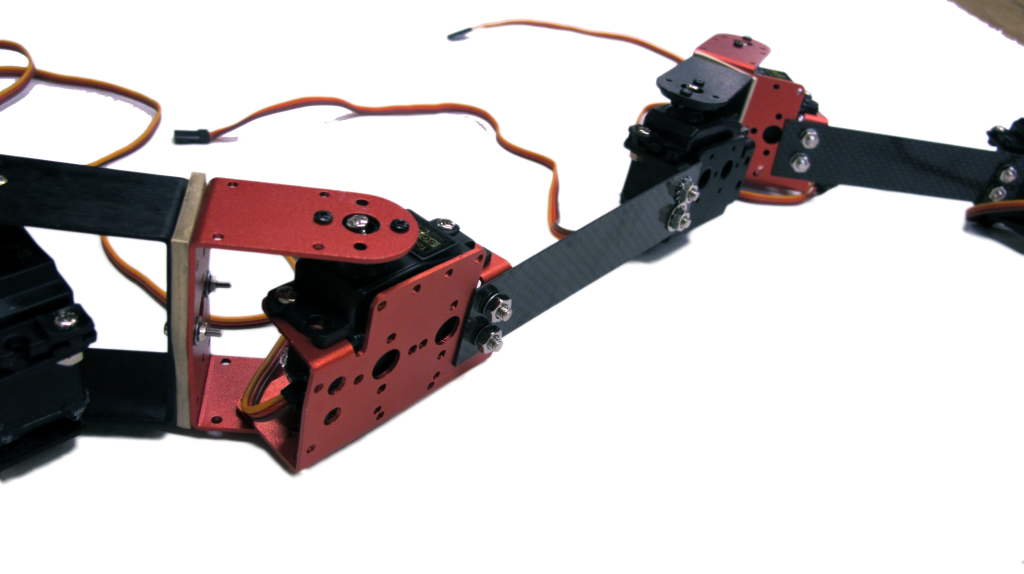
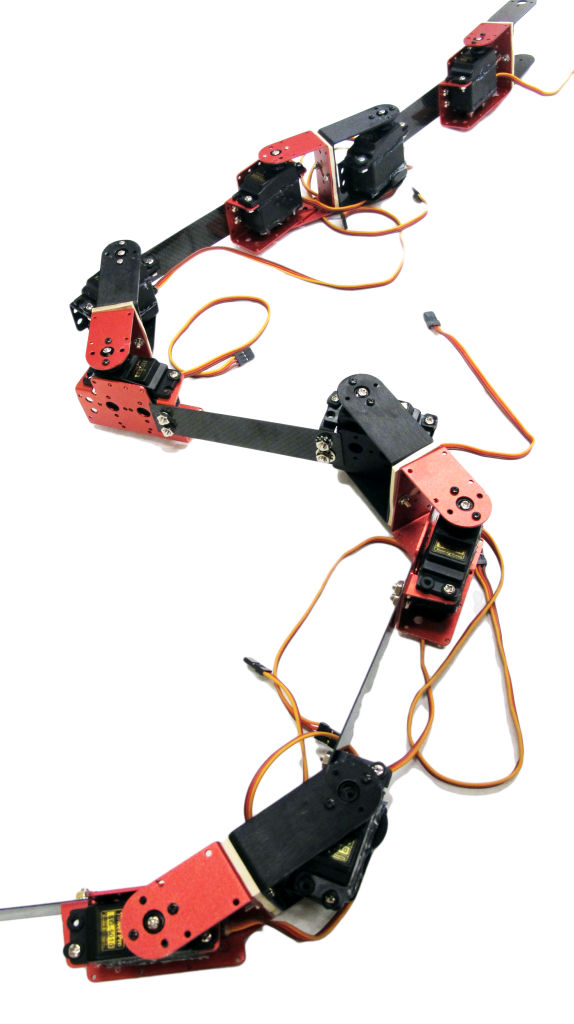
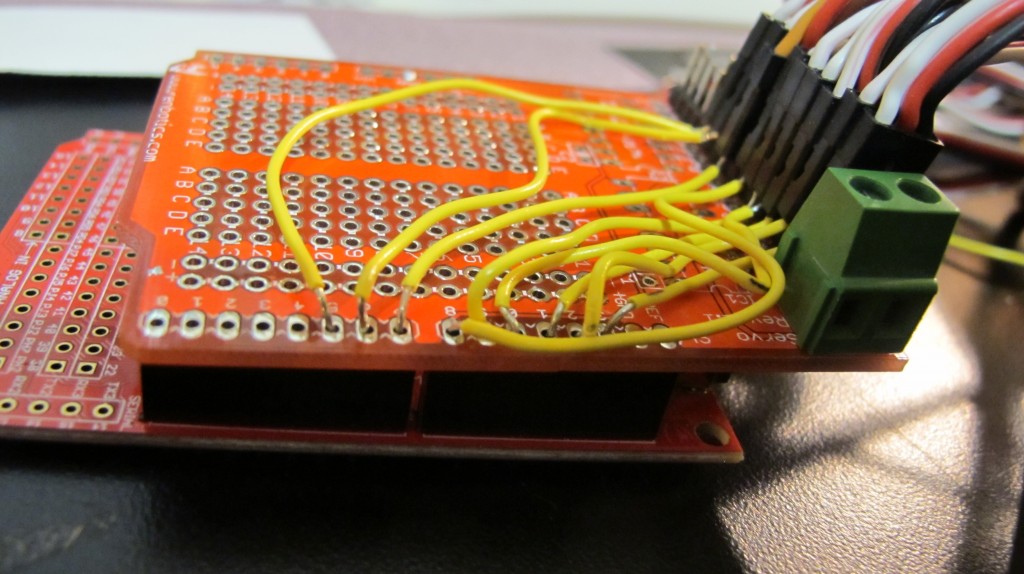
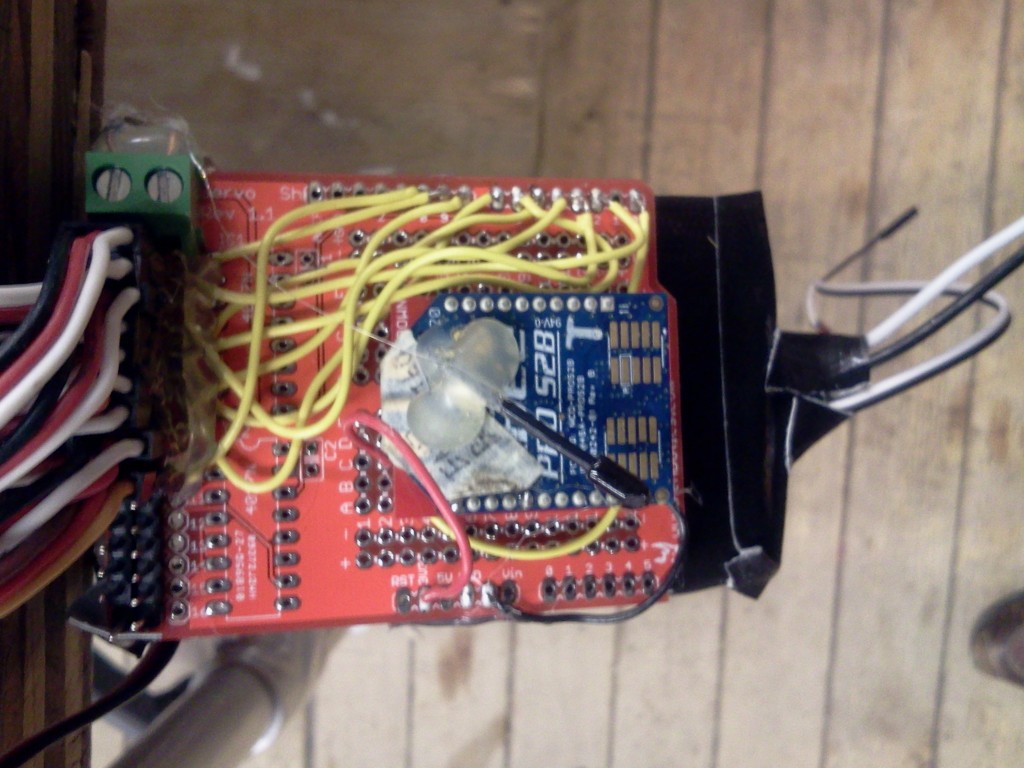
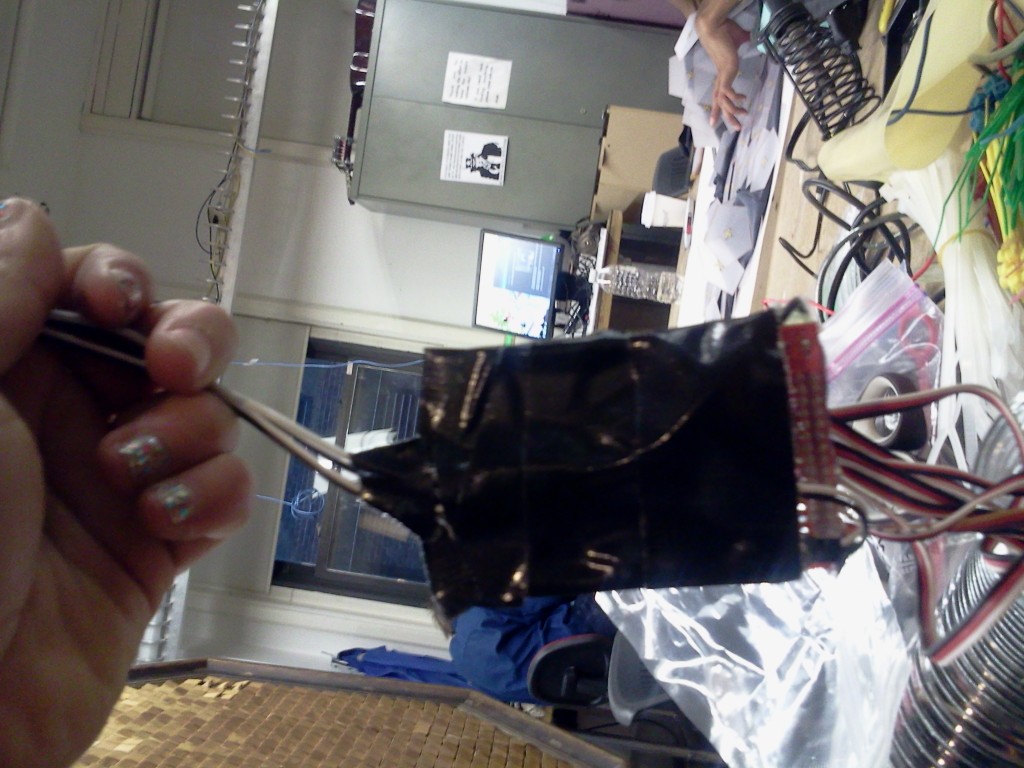
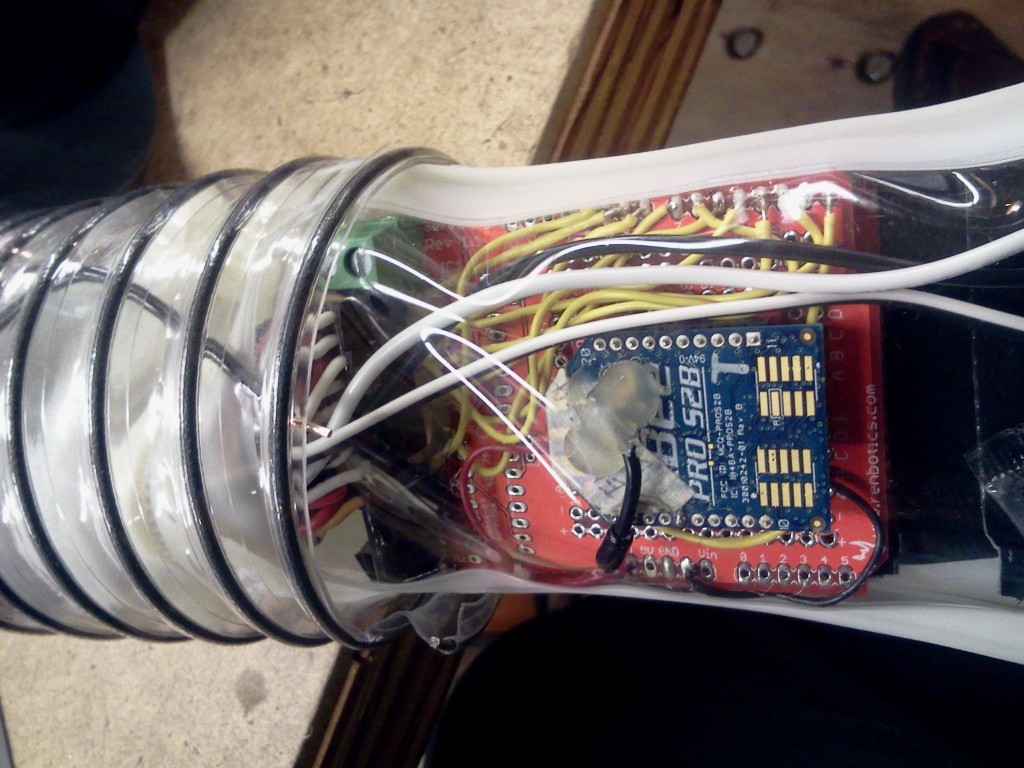
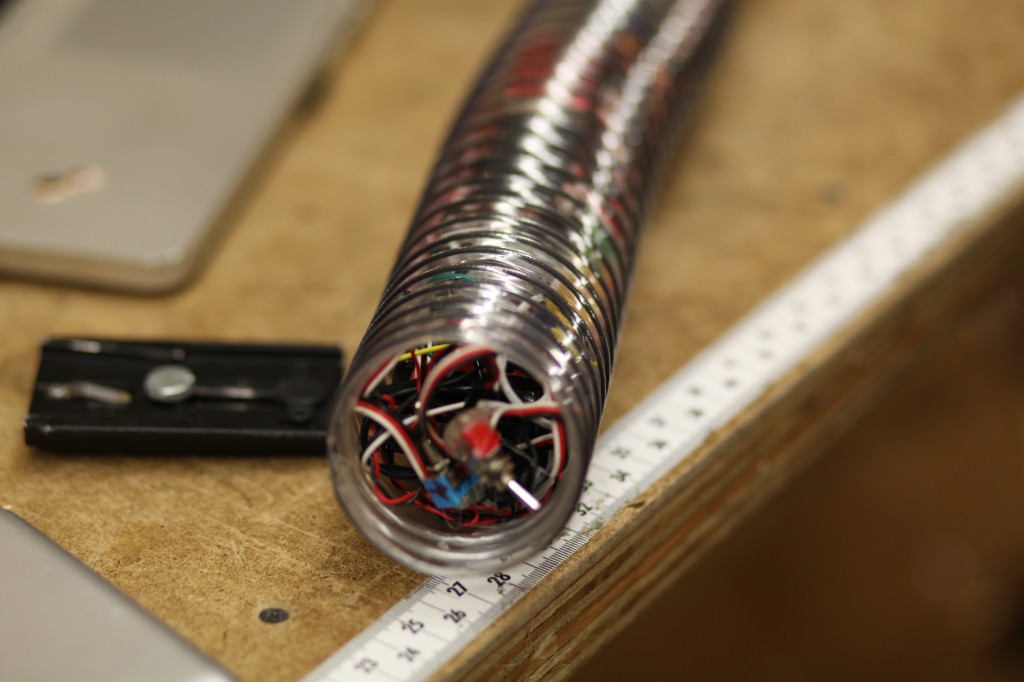
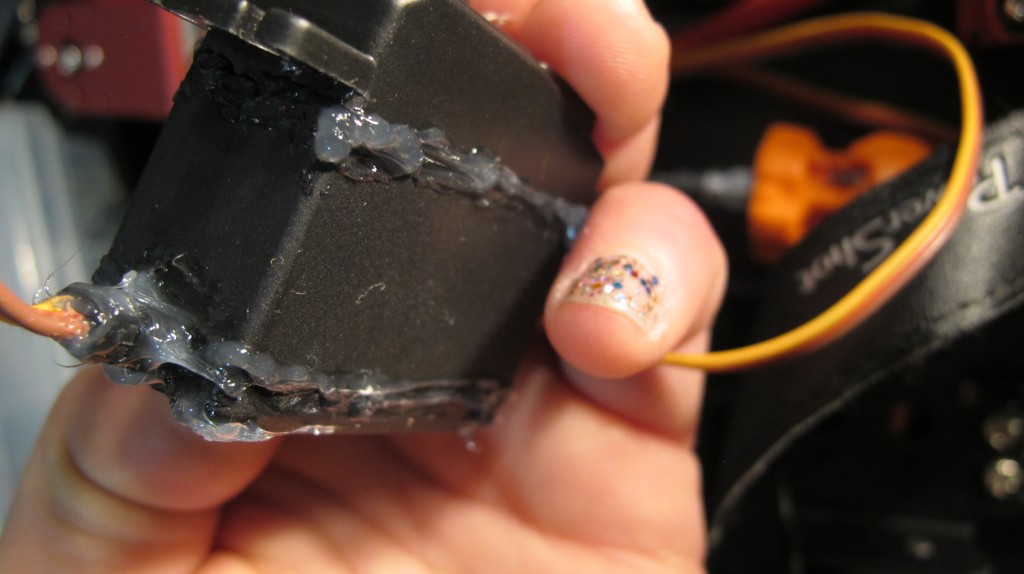
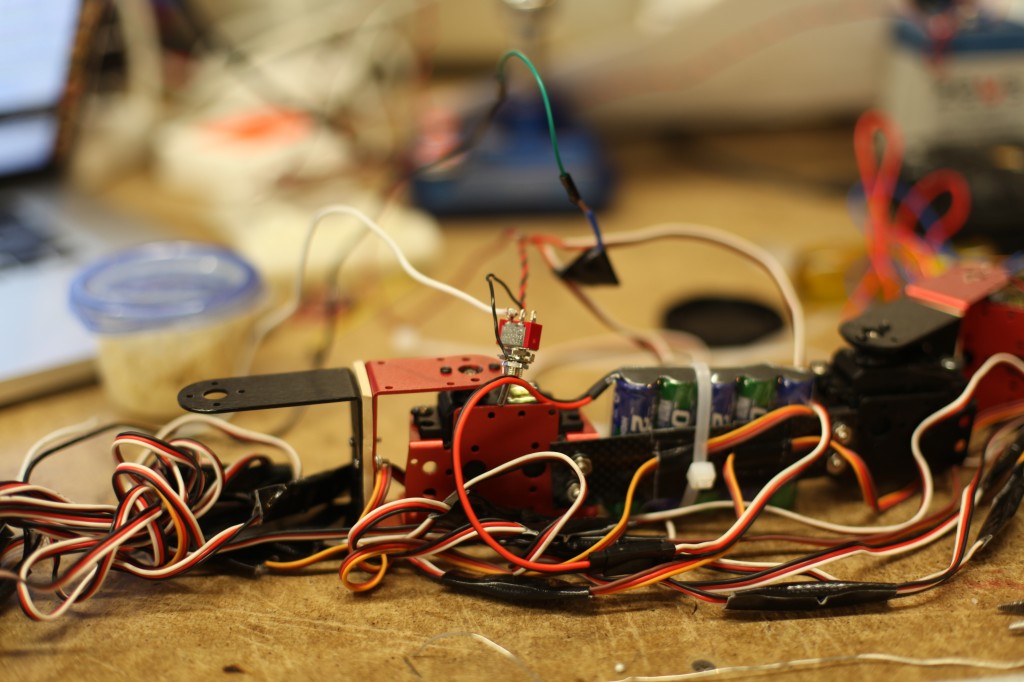
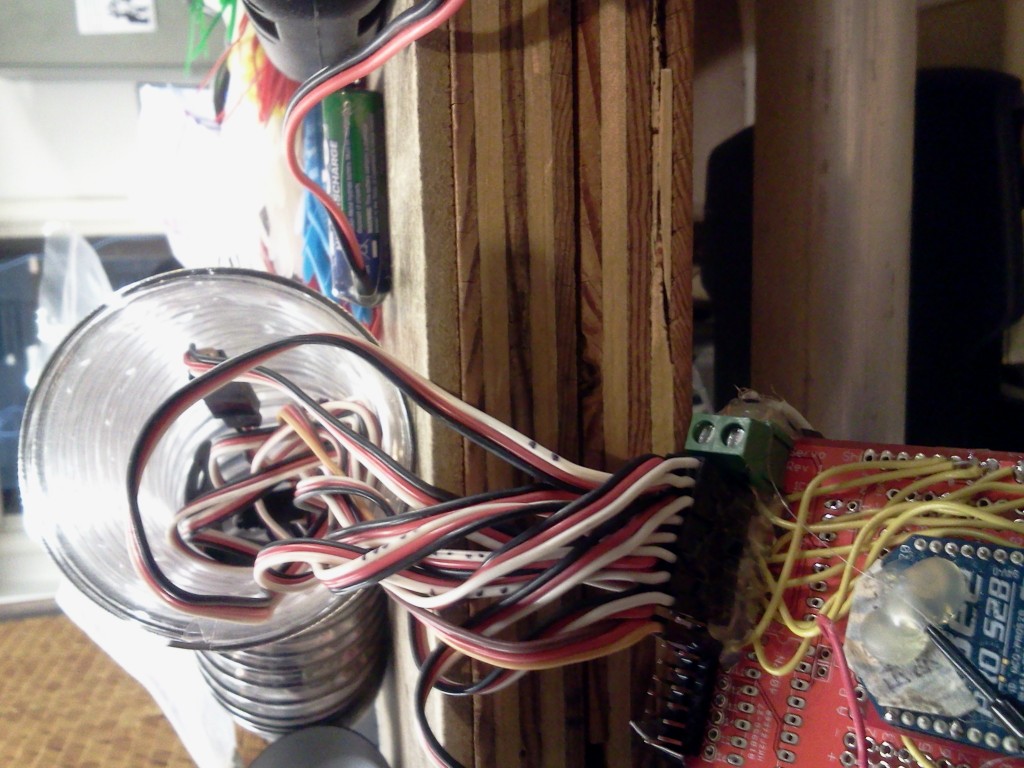
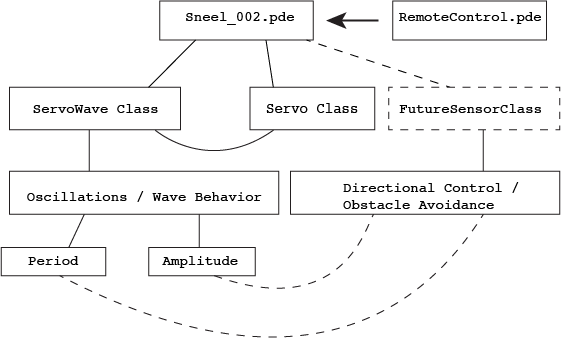
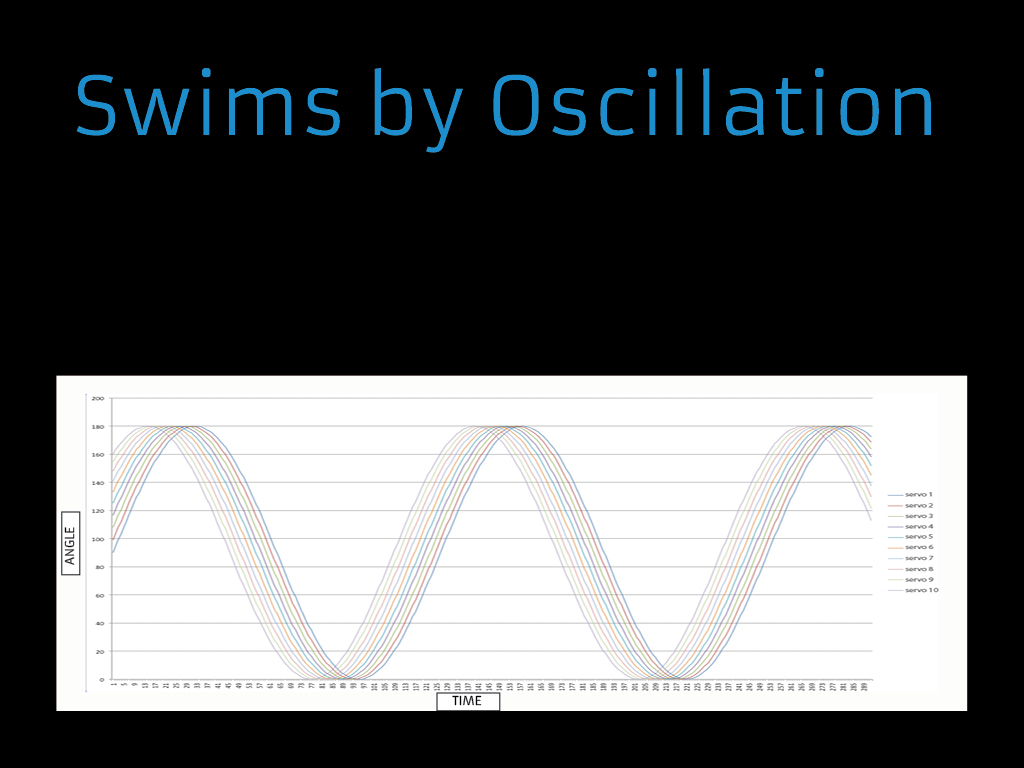
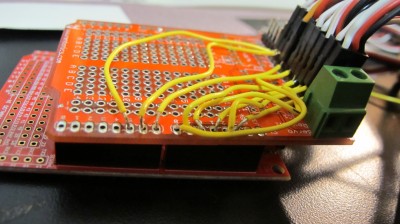
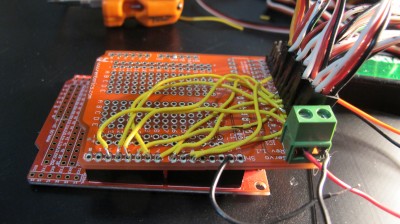
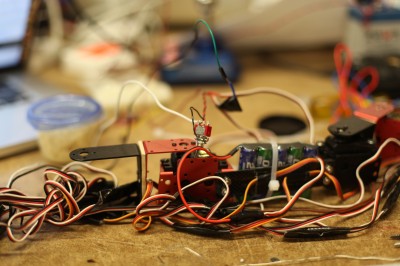
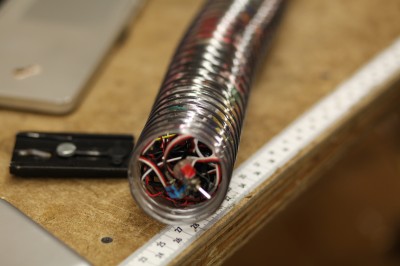
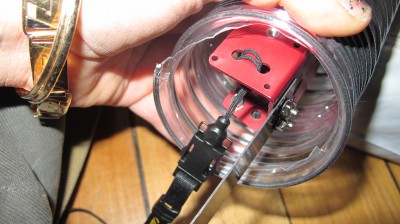
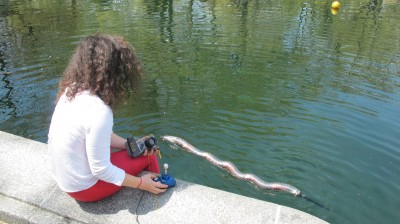
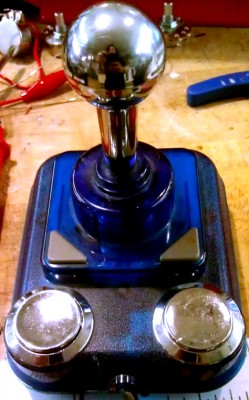
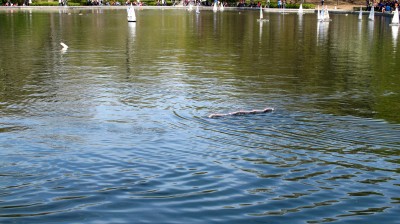
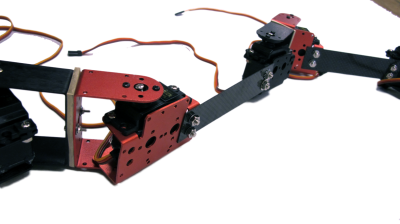
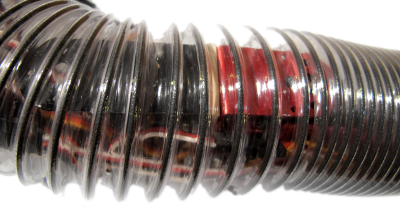
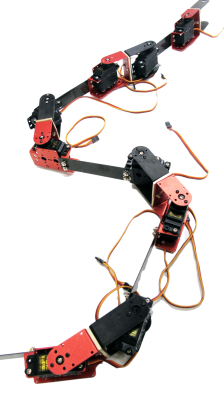
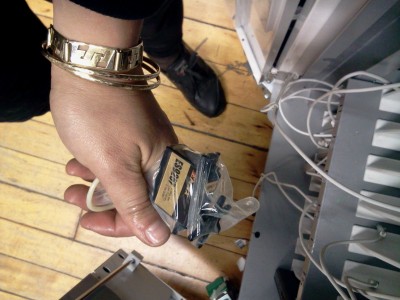
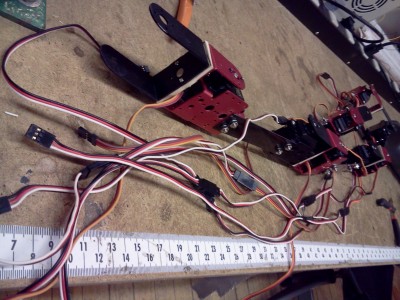
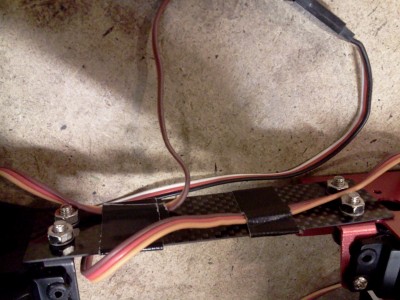
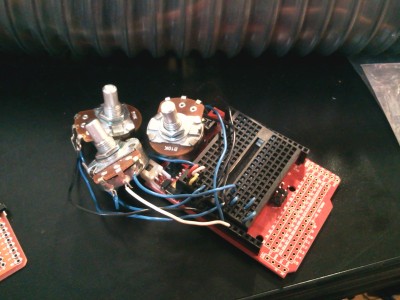
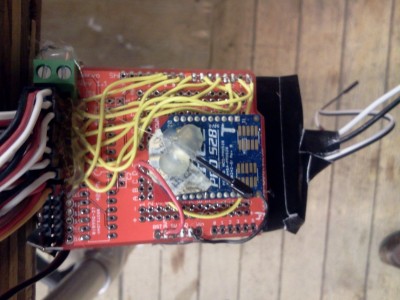
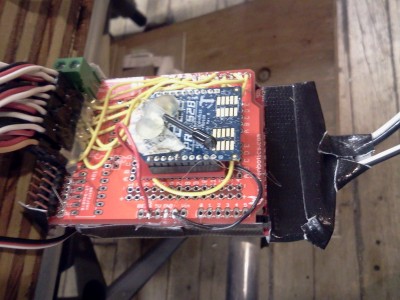
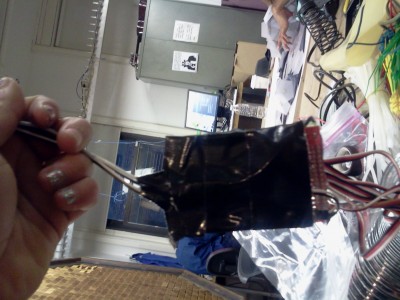
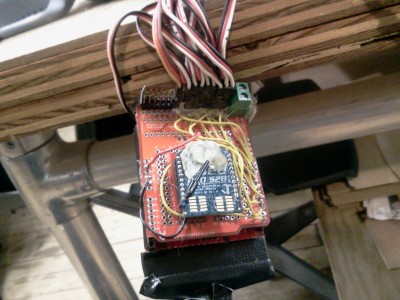
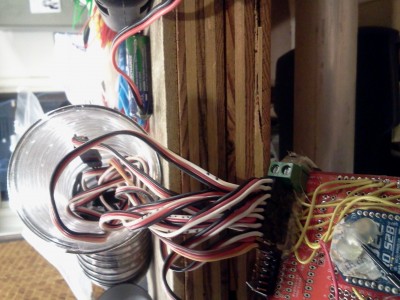
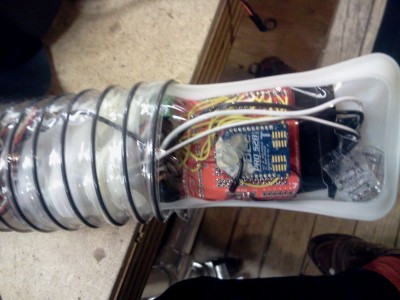
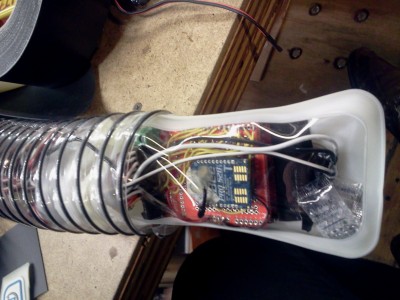
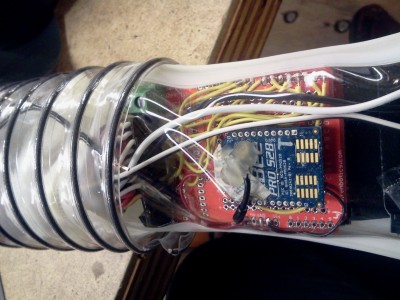
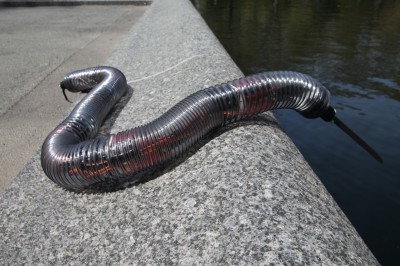
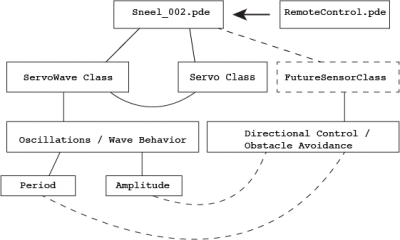
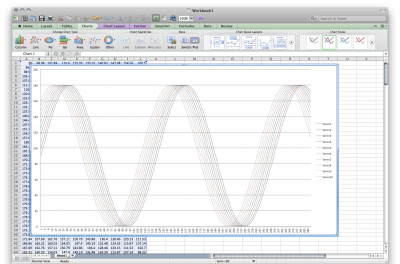
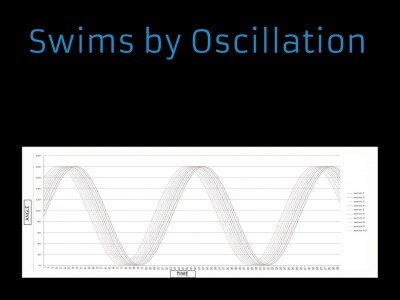
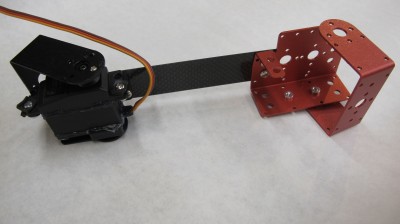
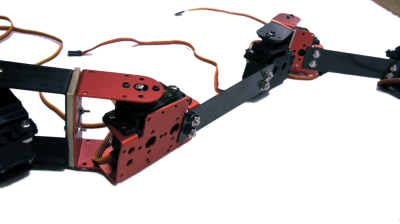
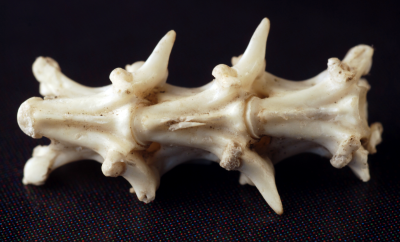
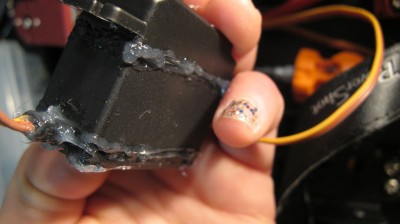
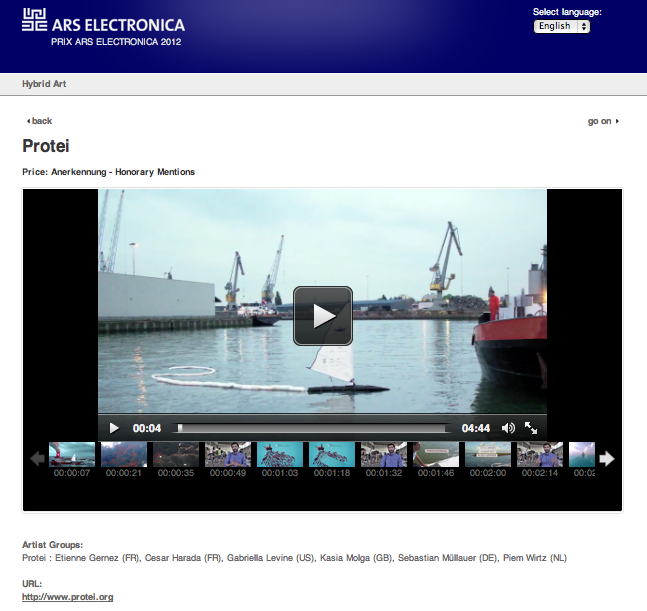

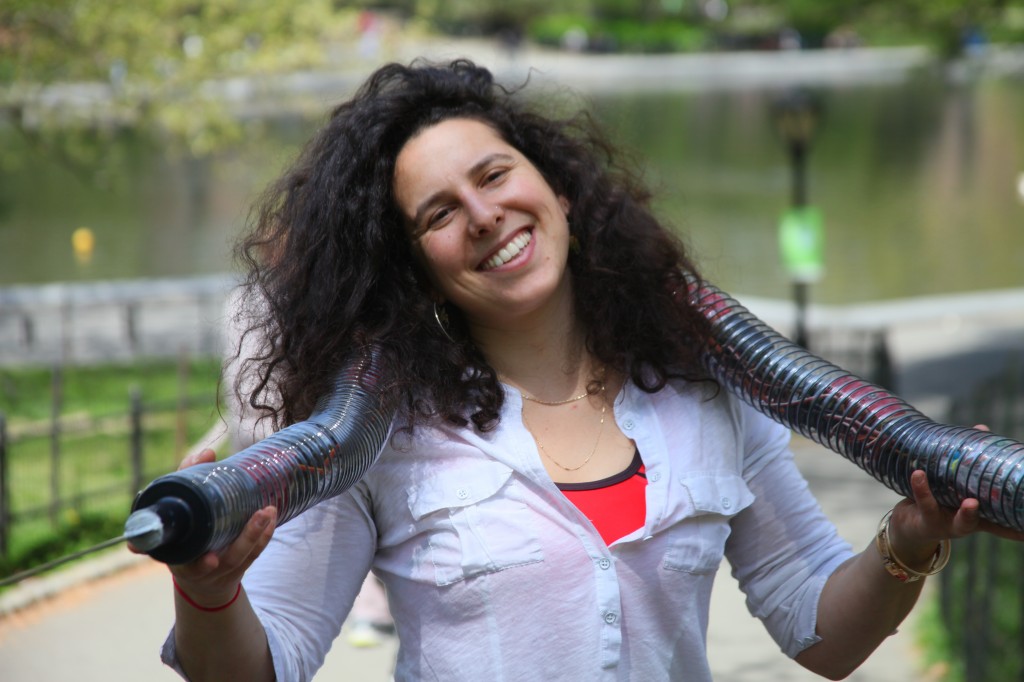

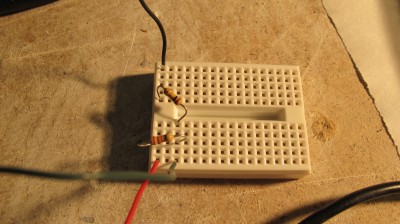
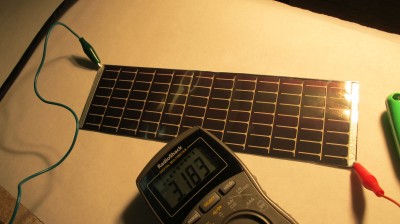
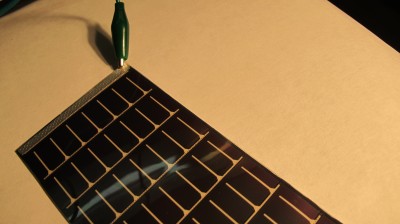
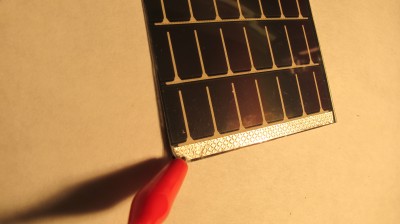
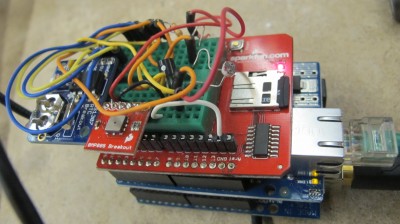
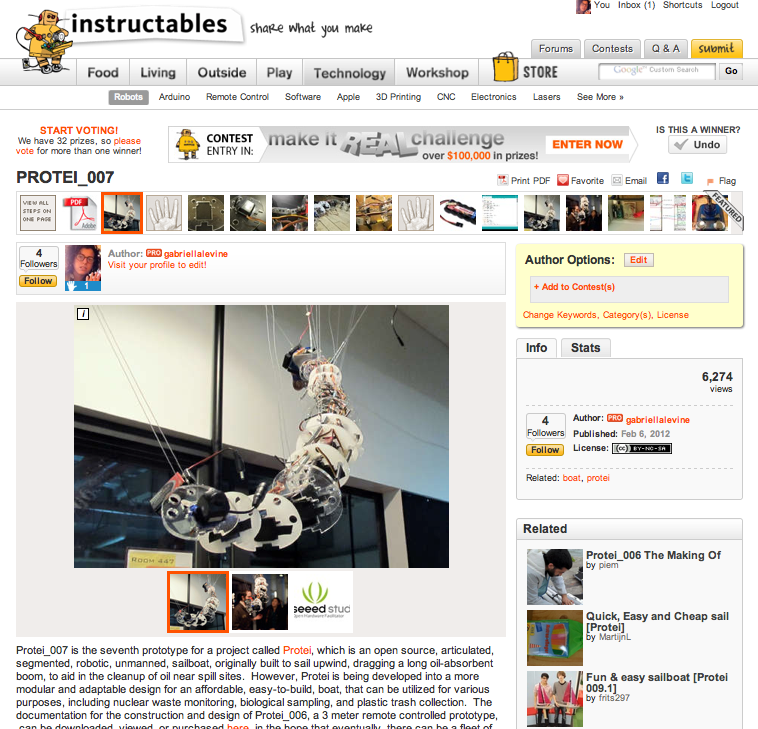
Comments
0 Responses to Fueling Innovation Through Shared Technology